Bicyclic compounds as dual ATX/CA inhibitors
Di Giorgio , et al.
U.S. patent number 10,647,719 [Application Number 15/933,701] was granted by the patent office on 2020-05-12 for bicyclic compounds as dual atx/ca inhibitors. This patent grant is currently assigned to Hoffmann-La Roche Inc.. The grantee listed for this patent is Hoffmann-La Roche Inc.. Invention is credited to Patrick Di Giorgio, Jerome Hert, Daniel Hunziker, Patrizio Mattei, Markus Rudolph, Petra Schmitz, Christoph Ullmer.
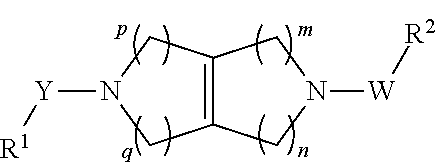
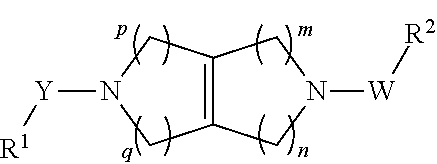
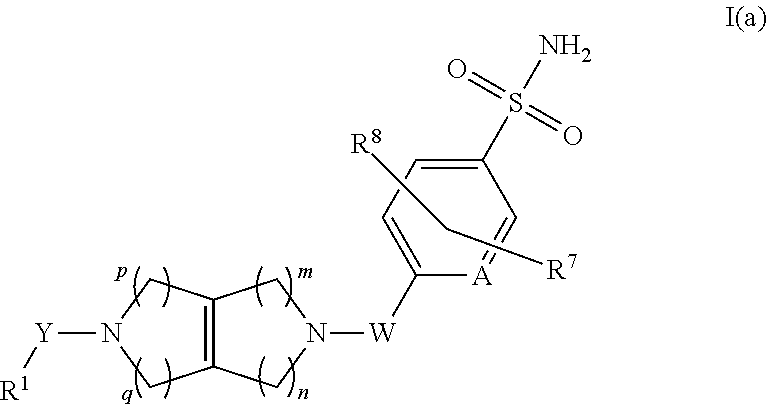
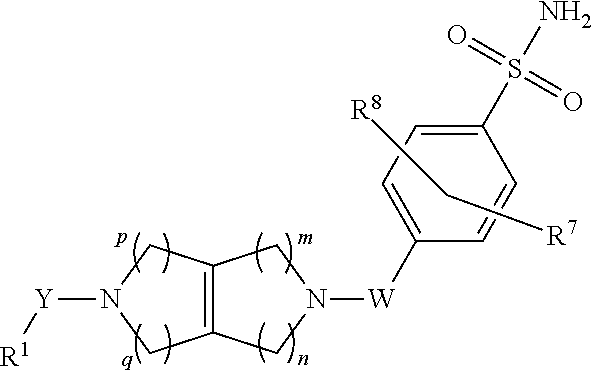

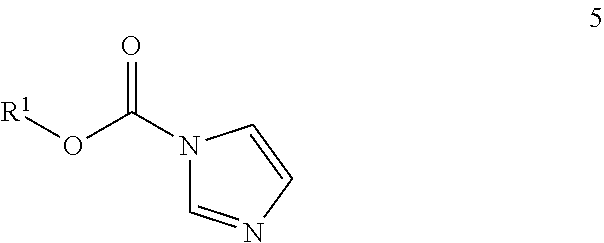






View All Diagrams
| United States Patent | 10,647,719 |
| Di Giorgio , et al. | May 12, 2020 |
Bicyclic compounds as dual ATX/CA inhibitors
Abstract
The invention provides novel compounds having the general formula (I) ##STR00001## wherein R.sup.1, R.sup.2, Y, W, m, n, p and q are as defined herein, compositions including the compounds and methods of using the compounds.
| Inventors: | Di Giorgio; Patrick (Basel, CH), Hert; Jerome (Basel, CH), Hunziker; Daniel (Basel, CH), Mattei; Patrizio (Basel, CH), Rudolph; Markus (Basel, CH), Schmitz; Petra (Basel, CH), Ullmer; Christoph (Basel, CH) | ||||||||||
|---|---|---|---|---|---|---|---|---|---|---|---|
| Applicant: |
|
||||||||||
| Assignee: | Hoffmann-La Roche Inc. (Little
Falls, NJ) |
||||||||||
| Family ID: | 54199035 | ||||||||||
| Appl. No.: | 15/933,701 | ||||||||||
| Filed: | March 23, 2018 |
Prior Publication Data
| Document Identifier | Publication Date | |
|---|---|---|
| US 20180215765 A1 | Aug 2, 2018 | |
Related U.S. Patent Documents
| Application Number | Filing Date | Patent Number | Issue Date | ||
|---|---|---|---|---|---|
| PCT/EP2016/072347 | Sep 21, 2016 | ||||
Foreign Application Priority Data
| Sep 24, 2015 [EP] | 15186633 | |||
| Current U.S. Class: | 1/1 |
| Current CPC Class: | C07D 487/04 (20130101); A61K 31/407 (20130101); A61K 31/5517 (20130101); C07D 471/04 (20130101); A61P 27/02 (20180101); A61K 31/437 (20130101) |
| Current International Class: | C07D 487/04 (20060101); C07D 471/04 (20060101); A61P 27/02 (20060101); A61K 31/407 (20060101); A61K 31/437 (20060101); A61K 31/5517 (20060101) |
References Cited [Referenced By]
U.S. Patent Documents
| 3392149 | July 1968 | von der Emden et al. |
| 5202322 | April 1993 | Allen et al. |
| 5238942 | August 1993 | Chakravarty et al. |
| 5240928 | August 1993 | Allen et al. |
| 5290780 | March 1994 | Venkatesan et al. |
| 5304565 | April 1994 | Morimoto et al. |
| 5358951 | October 1994 | Levin et al. |
| 5470975 | November 1995 | Atwal |
| 5472961 | December 1995 | Gottschlich et al. |
| 5532243 | July 1996 | Gilligan |
| 6821964 | November 2004 | Colon-Cruz et al. |
| 6841560 | January 2005 | Thompson et al. |
| 8329907 | December 2012 | Schultz et al. |
| 8440694 | May 2013 | Turner et al. |
| 8697883 | April 2014 | Abouabdellah et al. |
| 8841324 | September 2014 | Staehle et al. |
| 8946264 | May 2015 | Shinozuka et al. |
| 9029387 | December 2015 | Staehle et al. |
| 9493486 | November 2016 | Hunziker et al. |
| 9580434 | February 2017 | Mazurov et al. |
| 9802944 | October 2017 | Di Giorgio et al. |
| 10208052 | February 2019 | Zheng |
| 2005/0203112 | September 2005 | Castonguay et al. |
| 2008/0090802 | April 2008 | Letourneau et al. |
| 2010/0222341 | February 2010 | Schiemann et al. |
| 2010/0298290 | November 2010 | Anand et al. |
| 2011/0230471 | September 2011 | Staehle et al. |
| 2012/0015959 | January 2012 | Staehle et al. |
| 2012/0095040 | April 2012 | Abouabdellah et al. |
| 2012/0115858 | May 2012 | Tesconi et al. |
| 2012/0115852 | October 2012 | Schultz et al. |
| 2015/0353559 | December 2015 | Hert et al. |
| 2015/0376194 | December 2015 | Hert et al. |
| 2016/0264586 | September 2016 | Mattei et al. |
| 2017/0008900 | January 2017 | Di Giorgio et al. |
| 2017/0008913 | January 2017 | Hunziker et al. |
| 2017/0029425 | February 2017 | Hunziker et al. |
| 2017/0050960 | February 2017 | Hert et al. |
| 2 768 095 | Jan 2011 | CA | |||
| 2878442 | Apr 2014 | CA | |||
| 1751047 | Mar 2006 | CN | |||
| 102459207 | May 2012 | CN | |||
| 0 417 631 | Mar 1991 | EP | |||
| 2 301 936 | Mar 2011 | EP | |||
| 3385261 | Oct 2018 | EP | |||
| 2001039950 | Feb 2001 | JP | |||
| 2008-501743 | Jan 2008 | JP | |||
| 2008-31064 | Feb 2008 | JP | |||
| 2008-31064 | Feb 2008 | JP | |||
| 2008/540547 | Nov 2008 | JP | |||
| 2008-540547 | Nov 2008 | JP | |||
| 2009-161449 | Jul 2009 | JP | |||
| 2011-502150 | Jan 2011 | JP | |||
| 2 375 352 | Dec 2009 | RU | |||
| 2 480 463 | Apr 2013 | RU | |||
| 2 483 068 | May 2013 | RU | |||
| 2 517 693 | May 2014 | RU | |||
| 99/40070 | Aug 1999 | WO | |||
| 01/30780 | May 2001 | WO | |||
| 02/070523 | Sep 2002 | WO | |||
| 2004/074291 | Sep 2004 | WO | |||
| 2005/023762 | Mar 2005 | WO | |||
| 2005/040167 | May 2005 | WO | |||
| 2005/058798 | Jun 2005 | WO | |||
| 2005/084667 | Sep 2005 | WO | |||
| 2005/121145 | Dec 2005 | WO | |||
| 2006/015985 | Feb 2006 | WO | |||
| 2006/077035 | Jul 2006 | WO | |||
| 2006/122137 | Nov 2006 | WO | |||
| 2007/030061 | Mar 2007 | WO | |||
| 2007/049771 | May 2007 | WO | |||
| 2007/058322 | May 2007 | WO | |||
| 2007/103719 | Sep 2007 | WO | |||
| 2008/033456 | Mar 2008 | WO | |||
| 2008/033764 | Mar 2008 | WO | |||
| 2008/059026 | May 2008 | WO | |||
| 2008/060767 | May 2008 | WO | |||
| 2008/076223 | Jun 2008 | WO | |||
| 2008/116881 | Oct 2008 | WO | |||
| 2008/119662 | Oct 2008 | WO | |||
| 2008/126034 | Oct 2008 | WO | |||
| 2008/135141 | Nov 2008 | WO | |||
| 2009/046841 | Apr 2009 | WO | |||
| 2009/054914 | Apr 2009 | WO | |||
| 2009/058347 | May 2009 | WO | |||
| 2010/028761 | Mar 2010 | WO | |||
| 2010/051977 | May 2010 | WO | |||
| 2010/055006 | May 2010 | WO | |||
| 2010/060532 | Jun 2010 | WO | |||
| 2010/063352 | Jun 2010 | WO | |||
| 2010/099938 | Sep 2010 | WO | |||
| 2010/108641 | Sep 2010 | WO | |||
| 2010/108651 | Sep 2010 | WO | |||
| 2010/112116 | Oct 2010 | WO | |||
| 2010/112124 | Oct 2010 | WO | |||
| 2010/115491 | Oct 2010 | WO | |||
| 2010/130944 | Nov 2010 | WO | |||
| 2010/135524 | Nov 2010 | WO | |||
| 2010/141817 | Dec 2010 | WO | |||
| 2011/006569 | Jan 2011 | WO | |||
| 2011/017350 | Feb 2011 | WO | |||
| 2011/017561 | Feb 2011 | WO | |||
| 2011/053948 | May 2011 | WO | |||
| 2011/085170 | Jul 2011 | WO | |||
| 2011/114271 | Sep 2011 | WO | |||
| 2011/115813 | Sep 2011 | WO | |||
| 2011/116867 | Sep 2011 | WO | |||
| 2011/141716 | Nov 2011 | WO | |||
| 2009/154132 | Dec 2011 | WO | |||
| 2011/151461 | Dec 2011 | WO | |||
| 2012/020008 | Feb 2012 | WO | |||
| 2012/024620 | Feb 2012 | WO | |||
| 2012/028243 | Mar 2012 | WO | |||
| 2012/080727 | Jun 2012 | WO | |||
| 2012/166415 | Dec 2012 | WO | |||
| 2013/033059 | Mar 2013 | WO | |||
| 2013/054185 | Apr 2013 | WO | |||
| 2013/064467 | May 2013 | WO | |||
| 2013/065712 | May 2013 | WO | |||
| 2013/079223 | Jun 2013 | WO | |||
| 2013/175053 | Nov 2013 | WO | |||
| 2013/186159 | Dec 2013 | WO | |||
| 2014/007951 | Jan 2014 | WO | |||
| 2014/018881 | Jan 2014 | WO | |||
| 2014/018891 | Jan 2014 | WO | |||
| 2014/048865 | Apr 2014 | WO | |||
| 2014/048881 | Apr 2014 | WO | |||
| 2014/055548 | Apr 2014 | WO | |||
| 2014/066659 | May 2014 | WO | |||
| 2014/133112 | Sep 2014 | WO | |||
| 2014/139324 | Sep 2014 | WO | |||
| 2014/139978 | Sep 2014 | WO | |||
| 2014/143579 | Sep 2014 | WO | |||
| 2014/152725 | Sep 2014 | WO | |||
| 2014/164905 | Oct 2014 | WO | |||
| 2015/008230 | Jan 2015 | WO | |||
| 2015/058031 | Apr 2015 | WO | |||
| 2015/077503 | May 2015 | WO | |||
| 2015/078800 | Jun 2015 | WO | |||
| 2015/078803 | Jun 2015 | WO | |||
| 2015/144480 | Oct 2015 | WO | |||
| 2015/144605 | Oct 2015 | WO | |||
| 2015-144609 | Oct 2015 | WO | |||
| 2015/144609 | Oct 2015 | WO | |||
| 2015/144803 | Oct 2015 | WO | |||
| 2015/154023 | Oct 2015 | WO | |||
| 2016/061160 | Apr 2016 | WO | |||
| 2016/128529 | Aug 2016 | WO | |||
| 2016/162390 | Oct 2016 | WO | |||
| 2017/005073 | Jan 2017 | WO | |||
| 2017005073 | Jan 2017 | WO | |||
| 2017/037146 | Mar 2017 | WO | |||
| 2017/037670 | Mar 2017 | WO | |||
| 2017/050732 | Mar 2017 | WO | |||
| 2017/050747 | Mar 2017 | WO | |||
| 2017/050791 | Mar 2017 | WO | |||
| 2017/050792 | Mar 2017 | WO | |||
| 2017/053722 | Mar 2017 | WO | |||
| 2017/091673 | Jun 2017 | WO | |||
| 2017/139978 | Aug 2017 | WO | |||
| 2018/167001 | Sep 2018 | WO | |||
| 2018/167113 | Sep 2018 | WO | |||
Other References
|
Albers et al., "Chemical Evolution of Autotaxin Inhibitors" Chemical Reviews (XP055073234), 112(5):2593-2603 (May 9, 2012). cited by applicant . Barbayianni et al., "Autotaxin inhibitors: a patent review" Expert Opin Ther Patents 23(9):1123-1132 ( 2013). cited by applicant . CAS Registry Database, 1300725-30-7,Database Registry [retrieved online May 25, 2016] Chemical Abstracts Service May 25, 2011 (May 25, 2011), Focus Synthesis LLC: XP002707618, retrieved from STN Database accession No. 1300725-30-7 the whole document. cited by applicant . CAS Registry Database, 1352926-14-7,Database Registry [retrieved online May 25, 2016] Chemical Abstracts Service Jan. 12, 2012 (Jan. 12, 2012), All i chern LLC: XP002707617, retrieved from STN Database accession No. 1352926-14-7 see also RN: 135295-74-6; the whole document. cited by applicant . Garcia-Gutierrez et al., "Novel inhibitors to Taenia solium Cu/Zn superoxide dismutase identifed by virtual screening" J. Computer. Aided Molecular Design 25:1135-1145 ( 2011). cited by applicant . Hoeglund et al., "Optimization of pidemidic acid autotaxin inhibitor" Journal of Medicinal Chemistry 53:1056-1066 (Dec. 30, 2009). cited by applicant . Litherland et al., "The Amino-derivatives of Pentuerythritol. Part I. Preperation." (Published on Jan. 1, 1938. Downloaded by Roche Group on May 24, 2016 17:23:15.),:1588-1595. cited by applicant . Overberger et al., "Absolute Confirguration of 2,7-Diazaspiro[ 4.4lnonane. A Reassignment" J. Org. Chem. (XP055072840), 46:2757-2764 ( 1981). cited by applicant . Overberger et al., "Absolute Configuration of 2,7-Diazaspiro[ 4.4lnonane. A Reassignment" J. Org. Chem. (XP055072840), 46:2757-2764 ( 1981). cited by applicant . Sheridan et al., "The Most Common Chemical Replacements in Drug-Like Compounds" J. Chem. Inf. Comput. Sci. 42(1):103-108 ( 2002). cited by applicant . pp. 1-13 (STN Columbus (STN International) Oct. 9, 2015). cited by applicant . 1206969-43-8,Database Registry [retrieved online May 25, 2016] Chemical Abstracts Service, Feb. 22, 2010 (Feb. 22, 2010), BroadPharm: XP002707619, retrieved from STN Database accession No. 1206969-43-8 the whole document. cited by applicant . 959567-58-9,Database Registry [retrieved online May 25, 2016] Chemical Abstracts Service Dec. 26, 2007 (Dec. 26, 2007), NIH Chemical Genomics Center: XP002707620, retrieved from STN Database accession No. 959567-58-9. cited by applicant . Albers et al., "Chemical Evolution of Autotaxin Inhibittors" Chemical Reviews (XP055073234), 112(5):2593-2603 (May 9, 2012). cited by applicant . Bargayianni et al., "Autotaxin inhibitors: a patent review" Expert Opin Ther Patents 23(9):1123-1132 ( 2013). cited by applicant . Benesh et al., FEBS Lett 588:2712-2727 ( 2014). cited by applicant . CAS Registry Database, 1300725-30-7,Database Registry [retrieved online May 25, 2016] Chermical Abstracts Service May 25, 2011 (May 25, 2011), Focus Synthesis LLC: XP002707618, retrieved from STN Database accession No. 1300725-30-7 the whole document. cited by applicant . CAS Registry Database, 1352926-14-7,Database Registry [retrieved online May 25, 2016] Chemical Abstracts Service Jan. 12, 2012 (Jan. 1, 2012), All i chern LLC: XP002707617, retrieved from STN Database accession No. 1352926-14-7 see also RN: 135295-74-6; the whole document. cited by applicant . Database Capulus (online) Chemical Abstracts Service Columbus Ohio, 1993, Database accession No. 1994:483155 RN156411-73-3, 156411-74-4 (1993). cited by applicant . Garcia-Gutierrez et al., "Novel inhibitors to Taenia solium Cu/Zn superoxide dismutase identified by virtual screening" J. Computer. Aided Molecular Design 25:1135-1145 ( 2011). cited by applicant . Gierse et al., "A Novel Autotaxin Inhibitor Reduces Lysophosphatidic Acid Levels in Plasma and the Site of Inflammation" Pharmacol Exp Ther 334:310-317 ( 2010). cited by applicant . Harald M.H.G. Albers et al., "Discovery and Optimization of Boronic Acid Based Inhibitors of Autotaxin" Journal of Medicinal Chemistry 53(13):4958-4967 (Jul. 8, 2010). cited by applicant . Hoeglund et al., "Optimization of a pidemidic acid autotaxin inhibitor" Journal of Medicinal Chemistry 53:1056-1066 (Dec. 30, 2009). cited by applicant . International Search Report for International Patent Application No. PCT/EP2014/075360. cited by applicant . ISR for PCT/EP2013/061890. cited by applicant . ISR for PCT/EP2013/069679. cited by applicant . Jones et al., ACS Med Chem Lett 7:857-861 ( 2016). cited by applicant . Kung et al., "Identification of spirocyclic piperidine-azetidine inverse agonists of the ghrelin receptor" Bioorganic & Medicinal Chemistry Letters (XP028490993), 22(13):4281-4287 (May 8, 2012). cited by applicant . Litherland et al., "The Amino-derivatives of Pentuerythritol. Part I. Preparation." (Published on Jan. 1, 1938. Downloaded by Roche Group on May 24, 2016 17:23:15.),:1588-1595. cited by applicant . Mayo Clinic Staff, (Lupus[online], retrieved from the internet on Jan. 24, 2017; http://www.mayoclinic.org/diseases-conditions/lupus basics/definition/CON-20019676) 2017. cited by applicant . Orr et al., "One-pot synthesis of chiral azetidines from chloroaldehyde and chiral amines" Tetrahedron Letters (XP055073241), 52:3618-3620 ( 2011). cited by applicant . Overberger et al., "Absolute Configuration of 2,7-Diazasprio[4.4lnonane. A Reassignment" J. Org. Chem. (XP055072840), 46:2757-2764 ( 1981). cited by applicant . Sippy et al., "Preparation and characterization of N-(3-pyridinyl) spirocyclic diamines as ligands for nicotinic acetylcholine receptors" Bioorganic & Medicinal Chemistry Letters 19:1682-1685 ( 2009). cited by applicant . Stocks et al., "A Practical Method for Targeted Library Design Balancing Lead-like Properties with Diversity" Chem Med Chem (XP002707616), 4:800-808 ( 2009). cited by applicant . Written Opinion for PCT/EP2013/061890. cited by applicant . Written Opinion for PCT/EP2013/069679. cited by applicant . Albers et al., "Chemical Evolution of Autotaxin Hinhibitors" Chem Rev 112(5):2593-2603 (May 9, 2012). cited by applicant . Albers et al., "Structure-Based Design of Novel Boronic Acid-Based Inhibitors of Autotaxin" ;Journal of Medicinal Chemistry 54(13):4619-4626 (2011). cited by applicant . Anderson, "The Process of Structure-Based Drug Design" Chemistry & Biology 10:787-797 (Sep. 2003). cited by applicant . Bora, Rajesh 0., et al., "[1, 2, 4]-Oxadiazoles: Synthesis and Biological Applications" Mini-Reviews in Med. Chem 14(4):355-369 (Mar. 13, 2014). cited by applicant . CAS Registry Database, 959567-58-9, (), pp. 1-38 Dec. 26, 2007. cited by applicant . Erdik, Ender, "Transition Metal Catalyzed Reactions of Organozinc Reagents" Tetrahedron Report No. 23 48(44):9577-9648 (Jan. 1, 1992). cited by applicant . Farina, V. et al. Organic Reactions "The Stille Reaction" Paquette, Leo A., New York-US:Wiley and Sons, vol. 50:1-704 (Apr. 1, 1997). cited by applicant . Green et al. Protective Groups in Organic Synthesis (Table of Contents only, in 4 pages), Second edition, New York:John Wiley & Sons, Inc., (1991). cited by applicant . Hall, Dennis. ed. et al. Boronic Acids: Preparation, Applications in Organic Synthesis and Medicine (Description and table of contents only, 2 pages), Hall, Dennis,Wiley,:1-571 (Jan. 1, 2006). cited by applicant . Hemming, K. Science of Synthesis, Product 13: 1, 2, 3-Triazoles "Product Class 6: 1,2,4-Oxadiazoles" Storr, R.C. & Gilchrist, T.L., eds., Stuttgart-DE:Thieme Verlagsgruppe, vol. 13:127-184 (Jan. 1, 2004). cited by applicant . Henke, Brad R., et al., "Optimization of 3-(1H-Indazol-3-ylmethyl)-1,5-benzodiazepines as Potent, Orally Active CCK-A Agonists" J Med Chem 40:2706-2725 (Apr. 22, 1997). cited by applicant . ISR for PCT/EP2016/072277, 3 pages. cited by applicant . Li, Jie Jack et al. Name Reactions for Homologation, Part 1 "Name Reactions for Homologation, Part 1" (Abstract of text, author information, and table of contents only, 2 pages), Wiley and Sons,:1-685 (May 1, 2009). cited by applicant . Matralis et al., "Development and therapeutic potential of autotaxin small molecule inhibitors: From bench to advanced clinical trials" Med. Res. Rev.:1-38 (2018). cited by applicant . Mitchell, Terence N., "Palladium-Catalysed Reactions of Organotin Compounds" Synthesis 9:803-815 (Aug. 16, 1991). cited by applicant . Negishi, Ei-ichi, et al. Metal-Catalyzed Cross-Coupling Reactions "Chapter 1: Palladium or NickelCatalyzed CrossCoupling with Organometals Containing Zinc, Magnesium, Aluminum, and Zirconium" (Preface, table of contents, list of contributors only, 22 pages), Diederich, Francois, Stang, Peter J., eds., Weinheim, DE:Wiley-VCH Verlag GmbH,:1-47 (Jan. 1, 2004). cited by applicant . Patani et al., "Bioisosterism: A Rational Approach in Drug Design," Chem.Rev. (1996), vol. 96, pp. 3147-3176. cited by applicant . Polshettiwar, Vivek, et al., "Suzuki-Miyaura Cross-Coupling Reaction in Aqueous Media: Green and Sustainable Syntheses of Biaryls" ChemSUSChem 3:502-522 (Jan. 1, 2010). cited by applicant . Pouliot, Marie-France, et al., "Synthesis of 1,3,4-oxadiazoles from 1,2-diacylhydrazines using [Et2NSF2]BF4 as a prctical cyclodehydration agent" Org. Biomol. Chem 10:988-993 (Oct. 27, 2012). cited by applicant . Schlaeger, "The Protein Hydrolysate, Primatone RL, is a Cost-effective Multiple Growth Promoter of Mammalian Cell Culture in Serum-containing and Serum-free Media and Displays Anti-apoptosis Properties" J Immnol Methods 194:191-199 (1996). cited by applicant . Sheridan et al., "Cautious optimism surrounds early clinical data for PD-1 blocker" Nature Biotechnology 30:729-730 (2012). cited by applicant . Stille, John K., "The Palladium-Catalyzed Cross-Coupling Reactions of Organotin Reagents with Organic Electrophiles" Angew Chem. Int. Ed. Engl. 25:508-524 (Jan. 1, 1986). cited by applicant . Suzuki, A., et al., "Palladium-Catalyzed Cross-Coupling Reactions of Organoboron Compounds" Chem Rev. 95:2457-2483 (Jan. 31, 1995). cited by applicant . Suzuki, A., et al., "Recent advances in the cross-coupling reactions of organoboron derivatives with organic electrophiles, 1995-1998" J Organomet Chem 576:147-168 (Jan. 1, 1999). cited by applicant . Suzuki, A., et al., "Synthetic Studies via the cross-coupling reaction of organoboron derivatives with organic halides" Pure Appl Chem 63(3):419-422 (Jan. 1, 1991). cited by applicant . Thiel, "Structure-aided drug design's next generaton" Nature Biotechnology 22(5):513-519. cited by applicant . Tucker, Thomas J., et al., "Discovery of 3-{5[(6-Amino-1H-pyrazolo[3,4-b]pyridine-3-yl)methoxy]-2-chloropheonxy}-5- -chlorobenzonitrile (MK-4965): A Potent, Orally Bioavailable HIV-1 Non-Nucleoside Reverse Transcriptase Inhibitor with Improved Potency against Key Mutant Viruses" J Med Chem 51:6503-6511 (Jul. 11, 2008). cited by applicant . WO:ISR, pp. 1-6 (International Search Report--PCT/EP2016/070561 dated Oct. 23, 2016 Oct. 12, 2016). cited by applicant . Angeli et al., "Synthesis and carbonic anhydrase inhibition of polycyclic imides moieties" Bioorganic & Medicinal Chemistry 25(20):5373-5379 (Oct. 20, 2017). cited by applicant . Armstrong, J., et al., "Purification and Properties of Human Erythrocyte Carbonic Anhydrases" J Biol Chem 241(21):5137-5149 (Nov. 10, 1966). cited by applicant . "International Preliminary Report on Patentability--PCT/EP2018/056140":pp. 1-8 (dated Sep. 26, 2019). cited by applicant . "International Search Report--PCT/EP2014/054631":pp. 1-4 (dated Apr. 15, 2014). cited by applicant . "International Search Report--PCT/EP2015/056041":pp. 1-5 (dated May 6, 2015). cited by applicant . "International Search Report--PCT/EP2016/072349":pp. 1-5 (dated Nov. 29, 2016). cited by applicant . "International Search Report--PCT/EP2018/056140":pp. 1-9 (dated May 4, 2018). cited by applicant . "International Search Report--PCT/EP2018/056324" (x-cite P33952),:pp. 1-7 (dated May 8, 2018). cited by applicant . "International Search Report--PCT/EP2015/056032" (x-cite; P32055),:pp. 1-5 (dated Apr. 23, 2015). cited by applicant . "International Search Report--PCT/EP2016/057549":pp. 1-5 (dated Jun. 22, 2016). cited by applicant . "International Search Report--PCT/EP2016/072243":pp. 1-5 (dated Dec. 6, 2016). cited by applicant . "International Search Report --PCT/EP2016/072347":pp. 1-5 (dated Jan. 17, 2017). cited by applicant . "International Search Report--PCT/EP2016/070561":pp. 1-6 (dated Oct. 28, 2016). cited by applicant. |
Primary Examiner: Leeser; Erich A
Attorney, Agent or Firm: Mackenzie; Katherine J.
Claims
The invention claimed is:
1. A compound of formula (I) ##STR00068## wherein R.sup.1 is substituted phenyl, substituted phenyl-C.sub.1-6-alkyl, substituted phenoxy-C.sub.1-6-alkyl, substituted phenyl-C.sub.2-6-alkenyl, substituted phenyl-C.sub.2-6-alkynyl, substituted quinolinyl, substituted quinolinyl-C.sub.1-6-alkyl, substituted quinolinyl-C.sub.1-6-alkenyl, substituted quinolinyl-C.sub.1-6-alkynyl, substituted pyridinyl, substituted pyridinyl-C.sub.1-6-alkyl, substituted pyridinyl-C.sub.2-6-alkenyl, substituted pyridinyl-C.sub.2-6-alkynyl, substituted thiophenyl, substituted thiophenyl-C.sub.1-6-alkyl, substituted thiophenyl-C.sub.2-6-alkenyl or substituted thiophenyl-C.sub.2-6-alkynyl, wherein substituted phenyl, substituted phenyl-C.sub.1-6-alkyl, substituted phenoxy-C.sub.1-6-alkyl, substituted phenyl-C.sub.2-6-alkenyl, substituted phenyl-C.sub.2-6-alkynyl, substituted quinolinyl, substituted quinolinyl-C.sub.1-6-alkyl, substituted quinolinyl-C.sub.1-6-alkenyl, substituted quinolinyl-C.sub.1-6-alkynyl, substituted pyridinyl, substituted pyridinyl-C.sub.1-6-alkyl, substituted pyridinyl-C.sub.2-6-alkenyl, substituted pyridinyl-C.sub.2-6-alkynyl, substituted thiophenyl, substituted thiophenyl-C.sub.1-6-alkyl, substituted thiophenyl-C.sub.2-6-alkenyl and substituted thiophenyl-C.sub.2-6-alkynyl are substituted by R.sup.3, R.sup.4 and R.sup.5; Y is --OC(O)-- or --C(O)--; W is --C(O)--, --S(O).sub.2-- or --CR.sup.6R.sup.7--; R.sup.2 is substituted phenyl, substituted pyridinyl or substituted thiophenyl, wherein substituted phenyl, substituted pyridinyl and substituted thiophenyl are substituted by R.sup.6, R.sup.7 and R.sup.8; R.sup.3 is halogen, hydroxy, cyano, C.sub.1-6-alkyl, C.sub.1-6-alkoxy, C.sub.1-6-alkoxy-C.sub.1-6-alkyl, halo-C.sub.1-6-alkoxy, halo-C.sub.1-6-alkyl, hydroxy-C.sub.1-6-alkyl, C.sub.3-8-cycloalkyl, C.sub.3-8-cycloalkyl-C.sub.1-6-alkyl, C.sub.3-8-cycloalkyl-C.sub.1-6-alkoxy, C.sub.3-8-cycloalkoxy, C.sub.3-8-cycloalkoxy-C.sub.1-6-alkyl, C.sub.1-6-alkylamino, C.sub.1-6-alkylcarbonylamino, C.sub.3-8-cycloalkylcarbonylamino, C.sub.1-6-alkyltetrazolyl, C.sub.1-6-alkyltetrazolyl-C.sub.1-6-alkyl, heterocycloalkyl-C.sub.1-6-alkoxy or C.sub.1-6-alkylpiperidinyl-C.sub.1-6-alkoxy; R.sup.4 and R.sup.5 are independently selected from H, halogen, hydroxy, cyano, C.sub.1-6-alkyl, C.sub.1-6-alkoxy, C.sub.1-6-alkoxy-C.sub.1-6-alkyl, halo-C.sub.1-6-alkoxy, halo-C.sub.1-6-alkyl, hydroxy-C.sub.1-6-alkyl, C.sub.3-8-cycloalkyl, C.sub.3-8-cycloalkyl-C.sub.1-6-alkyl, C.sub.3-8-cycloalkyl-C.sub.1-6-alkoxy, C.sub.3-8-cycloalkoxy, C.sub.3-8-cycloalkoxy-C.sub.1-6-alkyl, C.sub.1-6-alkylcarbonylamino, C.sub.3-8-cycloalkylcarbonylamino, C.sub.1-6-alkyltetrazolyl, C.sub.1-6-alkyltetrazolyl-C.sub.1-6-alkyl and heterocycloalkyl-C.sub.1-6-alkoxy; R.sup.6 is aminosulfonyl; R.sup.7 and R.sup.8 are independently selected from H, halogen, hydroxy, cyano, C.sub.1-6-alkyl, C.sub.1-6-alkoxy, C.sub.1-6-alkoxy-C.sub.1-6-alkyl, halo-C.sub.1-6-alkoxy, halo-C.sub.1-6-alkyl, hydroxy-C.sub.1-6-alkyl, C.sub.3-8-cycloalkyl, C.sub.3-8-cycloalkyl-C.sub.1-6-alkyl, C.sub.3-8-cycloalkyl-C.sub.1-6-alkoxy, C.sub.3-8-cycloalkoxy and C.sub.3-8-cycloalkoxy-C.sub.1-6-alkyl; and m, n, p and q are independently selected from 1 and 2; or a pharmaceutically acceptable salt thereof.
2. A compound according to claim 1, wherein R.sup.1 is substituted phenyl, substituted phenyl-C.sub.1-6-alkyl, substituted phenoxy-C.sub.1-6-alkyl, substituted phenyl-C.sub.2-6-alkenyl, substituted phenyl-C.sub.2-6-alkynyl, substituted pyridinyl, substituted pyridinyl-C.sub.1-6-alkyl, substituted pyridinyl-C.sub.2-6-alkenyl, substituted pyridinyl-C.sub.2-6-alkynyl, substituted thiophenyl, substituted thiophenyl-C.sub.1-6-alkyl, substituted thiophenyl-C.sub.2-6-alkenyl or substituted thiophenyl-C.sub.2-6-alkynyl, wherein substituted phenyl, substituted phenyl-C.sub.1-6-alkyl, substituted phenoxy-C.sub.1-6-alkyl, substituted phenyl-C.sub.2-6-alkenyl, substituted phenyl-C.sub.2-6-alkynyl, substituted pyridinyl, substituted pyridinyl-C.sub.1-6-alkyl, substituted pyridinyl-C.sub.2-6-alkenyl, substituted pyridinyl-C.sub.2-6-alkynyl, substituted thiophenyl, substituted thiophenyl-C.sub.1-6-alkyl, substituted thiophenyl-C.sub.2-6-alkenyl and substituted thiophenyl-C.sub.2-6-alkynyl are substituted by R.sup.3, R.sup.4 and R.sup.5; Y is --OC(O)-- or --C(O)--; W is --C(O)--, --S(O).sub.2-- or --CR.sup.6R.sup.7--; R.sup.2 is substituted phenyl, substituted pyridinyl or substituted thiophenyl, wherein substituted phenyl, substituted pyridinyl and substituted thiophenyl are substituted by R.sup.6, R.sup.7 and R.sup.8; R.sup.3 is halogen, hydroxy, cyano, C.sub.1-6-alkyl, C.sub.1-6-alkoxy, C.sub.1-6-alkoxy-C.sub.1-6-alkyl, halo-C.sub.1-6-alkoxy, halo-C.sub.1-6-alkyl, hydroxy-C.sub.1-6-alkyl, C.sub.3-8-cycloalkyl, C.sub.3-8-cycloalkyl-C.sub.1-6-alkyl, C.sub.3-8-cycloalkyl-C.sub.1-6-alkoxy, C.sub.3-8-cycloalkoxy, C.sub.3-8-cycloalkoxy-C.sub.1-6-alkyl, C.sub.1-6-alkylamino, C.sub.1-6-alkylcarbonylamino, C.sub.3-8-cycloalkylcarbonylamino, C.sub.1-6-alkyltetrazolyl, C.sub.1-6-alkyltetrazolyl-C.sub.1-6-alkyl or heterocycloalkyl-C.sub.1-6-alkoxy; R.sup.4 and R.sup.5 are independently selected from H, halogen, hydroxy, cyano, C.sub.1-6-alkyl, C.sub.1-6-alkoxy, C.sub.1-6-alkoxy-C.sub.1-6-alkyl, halo-C.sub.1-6-alkoxy, halo-C.sub.1-6-alkyl, hydroxy-C.sub.1-6-alkyl, C.sub.3-8-cycloalkyl, C.sub.3-8-cycloalkyl-C.sub.1-6-alkyl, C.sub.3-8-cycloalkyl-C.sub.1-6-alkoxy, C.sub.3-8-cycloalkoxy, C.sub.3-8-cycloalkoxy-C.sub.1-6-alkyl, C.sub.1-6-alkylcarbonylamino, C.sub.3-8-cycloalkylcarbonylamino, C.sub.1-6-alkyltetrazolyl, C.sub.1-6-alkyltetrazolyl-C.sub.1-6-alkyl and heterocycloalkyl-C.sub.1-6-alkoxy; R.sup.6 is aminosulfonyl; R.sup.7 and R.sup.8 are independently selected from H, halogen, hydroxy, cyano, C.sub.1-6-alkyl, C.sub.1-6-alkoxy, C.sub.1-6-alkoxy-C.sub.1-6-alkyl, halo-C.sub.1-6-alkoxy, halo-C.sub.1-6-alkyl, hydroxy-C.sub.1-6-alkyl, C.sub.3-8-cycloalkyl, C.sub.3-8-cycloalkyl-C.sub.1-6-alkyl, C.sub.3-8-cycloalkyl-C.sub.1-6-alkoxy, C.sub.3-8-cycloalkoxy and C.sub.3-8-cycloalkoxy-C.sub.1-6-alkyl; and m, n, p and q are independently selected from 1 and 2; or a pharmaceutically acceptable salt thereof.
3. A compound according to claim 1, wherein R.sup.1 is substituted phenyl-C.sub.1-6-alkyl, substituted phenoxy-C.sub.1-6-alkyl, substituted phenyl-C.sub.2-6-alkenyl, substituted quinolinyl-C.sub.1-6-alkyl, substituted pyridinyl or substituted pyridinyl-C.sub.1-6-alkyl, wherein substituted phenyl-C.sub.1-6-alkyl, substituted phenoxy-C.sub.1-6-alkyl, substituted phenyl-C.sub.2-6-alkenyl, substituted quinolinyl-C.sub.1-6-alkyl, substituted pyridinyl and substituted pyridinyl-C.sub.1-6-alkyl are substituted by R.sup.3, R.sup.4 and R.sup.5; Y is --OC(O)-- or --C(O)--; W is --C(O)--; R.sup.2 is substituted phenyl or substituted pyridinyl, wherein substituted phenyl and substituted pyridinyl are substituted by R.sup.6, R.sup.7 and R.sup.8; R.sup.3 is halo-C.sub.1-6-alkoxy, C.sub.1-6-alkylcarbonylamino, C.sub.1-6-alkyltetrazolyl-C.sub.1-6-alkyl, C.sub.1-6-alkylpiperidinyl-C.sub.1-6-alkoxy or tetrahydropyranyl-C.sub.1-6-alkoxy; R.sup.4 is H, cyano, halogen, C.sub.1-6-alkyl, halo-C.sub.1-6-alkyl or C.sub.3-8-cycloalkyl; R.sup.5 is H; R.sup.6 is aminosulfonyl; R.sup.7 and R.sup.8 are independently selected from H and halogen; m and q are 1; and n and p are independently selected from 1 and 2; or a pharmaceutically acceptable salt thereof.
4. A compound according to claim 1, wherein R.sup.1 is substituted phenyl-C.sub.1-6-alkyl, substituted phenoxy-C.sub.1-6-alkyl, substituted phenyl-C.sub.2-6-alkenyl, substituted pyridinyl or substituted pyridinyl-C.sub.1-6-alkyl, wherein substituted phenyl-C.sub.1-6-alkyl, substituted phenoxy-C.sub.1-6-alkyl, substituted phenyl-C.sub.2-6-alkenyl, substituted pyridinyl and substituted pyridinyl-C.sub.1-6-alkyl are substituted by R.sup.3, R.sup.4 and R.sup.5; Y is --OC(O)-- or --C(O)--; W is --C(O)--; R.sup.2 is substituted phenyl or substituted pyridinyl, wherein substituted phenyl and substituted pyridinyl are substituted by R.sup.6, R.sup.7 and R.sup.8; R.sup.3 is halo-C.sub.1-6-alkoxy, C.sub.1-6-alkylcarbonylamino, C.sub.1-6-alkyltetrazolyl-C.sub.1-6-alkyl or tetrahydropyranyl-C.sub.1-6-alkoxy; R.sup.4 is H, cyano, halogen, C.sub.1-6-alkyl, halo-C.sub.1-6-alkyl or C.sub.3-8-cycloalkyl; R.sup.5 is H; R.sup.6 is aminosulfonyl; R.sup.7 and R.sup.8 are independently selected from H and halogen; m and q are 1; and n and p are independently selected from 1 and 2; or a pharmaceutically acceptable salt thereof.
5. A compound according to claim 1, or a pharmaceutically acceptable salt thereof, wherein R.sup.1 is substituted phenyl-C.sub.1-6-alkyl, substituted phenoxy-C.sub.1-6-alkyl, substituted phenyl-C.sub.2-6-alkenyl, substituted quinolinyl-C.sub.1-6-alkyl, substituted pyridinyl or substituted pyridinyl-C.sub.1-6-alkyl, wherein substituted phenyl-C.sub.1-6-alkyl, substituted phenoxy-C.sub.1-6-alkyl, substituted phenyl-C.sub.2-6-alkenyl, substituted quinolinyl-C.sub.1-6-alkyl, substituted pyridinyl and substituted pyridinyl-C.sub.1-6-alkyl are substituted by R.sup.3, R.sup.4 and R.sup.5.
6. A compound according to claim 1, or a pharmaceutically acceptable salt thereof, wherein R.sup.1 is substituted phenyl-C.sub.1-6-alkyl, substituted phenoxy-C.sub.1-6-alkyl, substituted phenyl-C.sub.2-6-alkenyl, substituted pyridinyl or substituted pyridinyl-C.sub.1-6-alkyl, wherein substituted phenyl-C.sub.1-6-alkyl, substituted phenoxy-C.sub.1-6-alkyl, substituted phenyl-C.sub.2-6-alkenyl, substituted pyridinyl and substituted pyridinyl-C.sub.1-6-alkyl are substituted by R.sup.3, R.sup.4 and R.sup.5.
7. A compound according to claim 1, or a pharmaceutically acceptable salt thereof wherein R.sup.1 is pyridinyl-C.sub.1-6-alkyl substituted by R.sup.3, R.sup.4 and R.sup.5.
8. A compound according to claim 1, or a pharmaceutically acceptable salt thereof, wherein Y is --OC(O)--.
9. A compound according to claim 1, or a pharmaceutically acceptable salt thereof, wherein R.sup.2 is substituted phenyl or substituted pyridinyl, wherein substituted phenyl and substituted pyridinyl are substituted by R.sup.6, R.sup.7 and R.sup.8.
10. A compound according to claim 1, or a pharmaceutically acceptable salt thereof, wherein R.sup.2 is phenyl substituted by R.sup.6, R.sup.7 and R.sup.8.
11. A compound according to claim 1, or a pharmaceutically acceptable salt thereof, wherein R.sup.3 is halo-C.sub.1-6-alkoxy, C.sub.1-6-alkylcarbonylamino, C.sub.1-6-alkyltetrazolyl-C.sub.1-6-alkyl, C.sub.1-6-alkylpiperidinyl-C.sub.1-6-alkoxy or tetrahydropyranyl-C.sub.1-6-alkoxy.
12. A compound according to claim 1, or a pharmaceutically acceptable salt thereof, wherein R.sup.3 is halo-C.sub.1-6-alkoxy, C.sub.1-6-alkylcarbonylamino, C.sub.1-6-alkyltetrazolyl-C.sub.1-6-alkyl or tetrahydropyranyl-C.sub.1-6-alkoxy.
13. A compound according to claim 1, or a pharmaceutically acceptable salt thereof, wherein R.sup.3 is C.sub.1-6-alkylcarbonylamino.
14. A compound according to claim 1, or a pharmaceutically acceptable salt thereof, wherein R.sup.4 is H, cyano, halogen, C.sub.1-6-alkyl, halo-C.sub.1-6-alkyl or C.sub.3-8-cycloalkyl.
15. A compound according to claim 1, or a pharmaceutically acceptable salt thereof, wherein R.sup.4 is halo-C.sub.1-6-alkyl.
16. A compound according to claim 1, or a pharmaceutically acceptable salt thereof, wherein R.sup.5 is H.
17. A compound according to claim 1, or a pharmaceutically acceptable salt thereof, wherein R.sup.7 and R.sup.8 are independently selected from H and halogen.
18. A compound according to claim 1, or a pharmaceutically acceptable salt thereof, wherein R.sup.7 is halogen.
19. A compound according to claim 1, or a pharmaceutically acceptable salt thereof, wherein R.sup.8 is H.
20. A compound according to claim 1, or a pharmaceutically acceptable salt thereof, wherein m and q are 1; and n and p are independently selected from 1 and 2.
21. A compound according to claim 1, or a pharmaceutically acceptable salt thereof, wherein m, n, p and q are 1.
22. A compound according to claim 1, wherein R.sup.1 is pyridinyl-C.sub.1-6-alkyl substituted by R.sup.3, R.sup.4 and R.sup.5; Y is --OC(O)--; W is --C(O)--; R.sup.2 is phenyl substituted by R.sup.6, R.sup.7 and R.sup.5; R.sup.3 is C.sub.1-6-alkylcarbonylamino; R.sup.4 is halo-C.sub.1-6-alkyl; R.sup.5 is H; R.sup.7 is halogen; R.sup.8 is H; and m, n, p and q are 1; or a pharmaceutically acceptable salt thereof.
23. A compound according to claim 1 wherein R.sup.1 is substituted phenyl-C.sub.1-6-alkyl, substituted phenoxy-C.sub.1-6-alkyl, substituted phenyl-C.sub.2-6-alkenyl, substituted pyridinyl or substituted pyridinyl-C.sub.1-6-alkyl, wherein substituted phenyl-C.sub.1-6-alkyl, substituted phenoxy-C.sub.1-6-alkyl, substituted phenyl-C.sub.2-6-alkenyl, substituted pyridinyl and substituted pyridinyl-C.sub.1-6-alkyl are substituted by R.sup.3, R.sup.4 and R.sup.5; Y is --OC(O)-- or --C(O)--; W is --C(O)--; R.sup.6 is pyridinyl substituted by R.sup.6, R.sup.7 and R.sup.8; R.sup.3 is halo-C.sub.1-6-alkoxy, C.sub.1-6-alkylcarbonylamino, C.sub.1-6-alkyltetrazolyl-C.sub.1-6-alkyl or tetrahydropyranyl-C.sub.1-6-alkoxy; R.sup.4 is H, cyano, halogen, C.sub.1-6-alkyl, halo-C.sub.1-6-alkyl or C.sub.3-8-cycloalkyl; R.sup.5 is H; R.sup.6 is aminosulfonyl; R.sup.7 and R.sup.8 are independently selected from H and halogen; m and q are 1; and n and p are independently selected from 1 or 2; or a pharmaceutically acceptable salt thereof.
24. A compound according to claim 1 and of formula I(b), ##STR00069## wherein R.sup.1 is pyridinyl-C.sub.1-6-alkyl substituted by R.sup.3, R.sup.4 and R.sup.5; Y is --OC(O)--; W is --C(O)--; R.sup.3 is C.sub.1-6-alkylcarbonylamino; R.sup.4 is halo-C.sub.1-6-alkyl; R.sup.5 is H; R.sup.7 is halogen; R.sup.8 is H; and m, n, p and q are 1; or a pharmaceutically acceptable salt thereof.
25. A compound according to claim 1, selected from [3-(2,2-dimethylpropanoylamino)-5-(trifluoromethyl)pyridin-2-yl]methyl 2-(4-sulfamoylbenzoyl)-1,3,4,6-tetrahydropyrrolo[3,4-c]pyrrole-5-carboxyl- ate; [3-(2,2-dimethylpropanoylamino)-5-(trifluoromethyl)pyridin-2-yl]methy- l 2-(2,5-difluoro-4-sulfamoylbenzoyl)-1,3,4,6-tetrahydropyrrolo[3,4-c]pyrr- ole-5-carboxylate; [3-(2,2-dimethylpropanoylamino)-5-(trifluoromethyl)pyridin-2-yl]methyl 2-(3-chloro-4-sulfamoylbenzoyl)-1,3,4,6-tetrahydropyrrolo[3,4-c]pyrrole-5- -carboxylate; [3-(2,2-dimethylpropanoylamino)-5-(trifluoromethyl)pyridin-2-yl]methyl 2-(3-fluoro-4-sulfamoylbenzoyl)-1,3,4,6-tetrahydropyrrolo[3,4-c]pyrrole-5- -carboxylate; [3-(2,2-dimethylpropanoylamino)-5-(trifluoromethyl)pyridin-2-yl]methyl 2-(2-fluoro-4-sulfamoylbenzoyl)-1,3,4,6-tetrahydropyrrolo[3,4-c]pyrrole-5- -carboxylate; [3-(2,2-dimethylpropanoylamino)-5-(trifluoromethyl)pyridin-2-yl]methyl 2-(5-sulfamoylpyridine-2-carbonyl)-1,3,4,6-tetrahydropyrrolo[3,4-c]pyrrol- e-5-carboxylate; 4-(trifluoromethoxy)benzyl 5-(4-sulfamoylbenzoyl)-3,4,5,6-tetrahydropyrrolo[3,4-c]pyrrole-2(1H)-carb- oxylate; 6-[5-[2-cyclopropyl-6-(oxan-4-ylmethoxy)pyridine-4-carbonyl]-1,3,- 4,6-tetrahydropyrrolo[3,4-c]pyrrole-2-carbonyl]pyridine-3-sulfonamide; 4-[5-[2-cyclopropyl-6-(oxan-4-ylmethoxy)pyridine-4-carbonyl]-1,3,4,6-tetr- ahydropyrrolo[3,4-c]pyrrole-2-carbonyl]-3-fluorobenzenesulfonamide; [3-(2,2-dimethylpropanoylamino)-5-(trifluoromethyl)pyridin-2-yl]methyl 2-(2,3-difluoro-4-sulfamoylbenzoyl)-1,3,4,6-tetrahydropyrrolo[3,4-c]pyrro- le-5-carboxylate; 3-fluoro-4-(5-(3-(2-((5-methyl-2H-tetrazol-2-yl)methyl)-4-(trifluoromethy- l)phenyl)propanoyl)-1,2,3,4,5,6-hexahydropyrrolo[3,4-c]pyrrole-2-carbonyl)- benzenesulfonamide; [3-(2,2-dimethylpropanoylamino)-5-(trifluoromethyl)pyridin-2-yl]methyl 2-(2,6-difluoro-4-sulfamoylbenzoyl)-1,3,4,6-tetrahydropyrrolo[3,4-c]pyrro- le-5-carboxylate; [5-chloro-3-(2,2-dimethylpropanoylamino)pyridin-2-yl]methyl 2-(2-fluoro-4-sulfamoylbenzoyl)-1,3,4,6-tetrahydropyrrolo[3,4-c]pyrrole-5- -carboxylate; [5-chloro-3-(2,2-dimethylpropanoylamino)pyridin-2-yl]methyl 2-(3-fluoro-4-sulfamoylbenzoyl)-1,3,4,6-tetrahydropyrrolo[3,4-c]pyrrole-5- -carboxylate; [5-chloro-3-(2,2-dimethylpropanoylamino)pyridin-2-yl]methyl 2-(2,3-difluoro-4-sulfamoylbenzoyl)-1,3,4,6-tetrahydropyrrolo[3,4-c]pyrro- le-5-carboxylate; [5-chloro-3-(2,2-dimethylpropanoylamino)pyridin-2-yl]methyl 2-(2,6-difluoro-4-sulfamoylbenzoyl)-1,3,4,6-tetrahydropyrrolo[3,4-c]pyrro- le-5-carboxylate; [5-chloro-3-(2,2-dimethylpropanoylamino)pyridin-2-yl]methyl 2-(2,5-difluoro-4-sulfamoylbenzoyl)-1,3,4,6-tetrahydropyrrolo[3,4-c]pyrro- le-5-carboxylate; [3-(2,2-dimethylpropanoylamino)-6-methylpyridin-2-yl]methyl 2-(2-fluoro-4-sulfamoylbenzoyl)-1,3,4,6-tetrahydropyrrolo[3,4-c]pyrrole-5- -carboxylate; [6-chloro-3-(2,2-dimethylpropanoylamino)pyridin-2-yl]methyl 2-(2-fluoro-4-sulfamoylbenzoyl)-1,3,4,6-tetrahydropyrrolo[3,4-c]pyrrole-5- -carboxylate; [3-(2,2-dimethylpropanoylamino)pyridin-2-yl]methyl 2-(2-fluoro-4-sulfamoylbenzoyl)-1,3,4,6-tetrahydropyrrolo[3,4-c]pyrrole-5- -carboxylate; [6-chloro-3-(2,2-dimethylpropanoylamino)pyridin-2-yl]methyl 2-(2,5-difluoro-4-sulfamoylbenzoyl)-1,3,4,6-tetrahydropyrrolo[3,4-c]pyrro- le-5-carboxylate; [6-chloro-3-(2,2-dimethylpropanoylamnino)pyridin-2-yl]methyl 2-(3-fluoro-4-sulfamoylbenzoyl)-1,3,4,6-tetrahydropyrrolo[3,4-c]pyrrole-5- -carboxylate; [6-chloro-3-(2,2-dimethylpropanoylamino)pyridin-2-yl]methyl 2-(2,3-difluoro-4-sulfamoylbenzoyl)-1,3,4,6-tetrahydropyrrolo[3,4-c]pyrro- le-5-carboxylate; [6-chloro-3-(2,2-dimethylpropanoylamino)pyridin-2-yl]methyl 2-(2,6-difluoro-4-sulfamoylbenzoyl)-1,3,4,6-tetrahydropyrrolo[3,4-c]pyrro- le-5-carboxylate; [5-cyano-3-(2,2-dimethylpropanoylamino)pyridin-2-yl]methyl 2-(2-fluoro-4-sulfamoylbenzoyl)-1,3,4,6-tetrahydropyrrolo[3,4-c]pyrrole-5- -carboxylate; [5-cyano-3-(2,2-dimethylpropanoylamino)pyridin-2-yl]methyl 2-(2,6-difluoro-4-sulfamoylbenzoyl)-1,3,4,6-tetrahydropyrrolo[3,4-c]pyrro- le-5-carboxylate; [5-cyano-3-(2,2-dimethylpropanoylamino)pyridin-2-yl]methyl 2-(2,3-difluoro-4-sulfamoylbenzoyl)-1,3,4,6-tetrahydropyrrolo[3,4-c]pyrro- le-5-carboxylate; [5-cyano-3-(2,2-dimethylpropanoylamino)pyridin-2-yl]methyl 2-(2,5-difluoro-4-sulfamoylbenzoyl)-1,3,4,6-tetrahydropyrrolo[3,4-c]pyrro- le-5-carboxylate; [3-(2,2-dimethylpropanoylamino)-5-(trifluoromethyl)pyridin-2-yl]methyl 6-(2-fluoro-4-sulfamoylbenzoyl)-1,3,4,5,7,8-hexahydro-2,6-naphthyridine-2- -carboxylate; [5-chloro-4-cyano-2-(2,2-dimethylpropanoylamino)phenyl]methyl 2-(5-sulfamoylpyridine-2-carbonyl)-1,3,4,6-tetrahydropyrrolo[3,4-c]pyrrol- e-5-carboxylate; [4-(trifluoromethoxy)phenyl]methyl 6-(2-fluoro-4-sulfamoylbenzoyl)-1,3,4,5,7,8-hexahydro-2,6-naphthyridine-2- -carboxylate; [4-(trifluoromethoxy)phenyl]methyl 2-(5-sulfamoylpyridine-2-carbonyl)-1,3,4,6-tetrahydropyrrolo[3,4-c]pyrrol- e-5-carboxylate; [4-(trifluoromethoxy)phenyl]methyl 2-(2-fluoro-4-sulfamoylbenzoyl)-1,3,4,6-tetrahydropyrrolo[3,4-c]pyrrole-5- -carboxylate; 3-fluoro-4-[2-[(E)-3-[4-(trifluoromethoxy)phenyl]prop-2-enoyl]1,3,4,6-tet- rahydropyrrolo[3,4-c]pyrrole-5-carbonyl]benzenesulfonamide; 6-[2-[3-[4-(trifluoromethoxy)phenyl]propanoyl]-1,3,4,6-tetrahydropyrrolo[- 3,4-c]pyrrole-5-carbonyl]pyridine-3-sulfonamide; 3-fluoro-4-[2-[3-[4-(trifluoromethoxy)phenyl]propanoyl]-1,3,4,6-tetrahydr- opyrrolo[3,4-c]pyrrole-5-carbonyl]benzenesulfonamide; 6-[2-[(E)-3-[4-(trifluoromethoxy)phenyl]prop-2-enoyl]-1,3,4,6-tetrahydrop- yrrolo[3,4-c]pyrrole-5-carbonyl]pyridine-3-sulfonamide; 6-[2-[2-[4-(trifluoromethoxy)phenoxy]acetyl]-1,3,4,6-tetrahydropyrrolo[3,- 4-c]pyrrole-5-carbonyl]pyridine-3-sulfonamide; 3-fluoro-4-[2-[2-[4-(trifluoromethoxy)phenoxy]acetyl]-1,3,4,6-tetrahydrop- yrrolo[3,4-c]pyrrole-5-carbonyl]benzenesulfonamide; 4-[2-[3-[4-cyano-2-[(5-methyltetrazol-2-yl)methyl]phenyl]propanoyl]-1,3,4- ,6-tetrahydropyrrolo[3,4-c]pyrrole-5-carbonyl]-3-fluorobenzenesulfonamide; and 4-[2-[3-[4-chloro-2-[(5-methyltetrazol-2-yl)methyl]phenyl]propanoyl]-- 1,3,4,6-tetrahydropyrrolo[3,4-c]pyrrole-5-carbonyl]-3-fluorobenzenesulfona- mide; or a pharmaceutically acceptable salt thereof.
26. A compound according to claim 1, selected from [5,6-dichloro-3-(2,2-dimethylpropanoylamino)pyridin-2-yl]methyl 2-(2-fluoro-4-sulfamoylbenzoyl)-1,3,4,6-tetrahydropyrrolo[3,4-c]pyrrole-5- -carboxylate; [5,6-dichloro-3-(2,2-dimethylpropanoylamino)pyridin-2-yl]methyl 2-(2,3-difluoro-4-sulfamoylbenzoyl)-1,3,4,6-tetrahydropyrrolo[3,4-c]pyrro- le-5-carboxylate; [5,6-dichloro-3-(2,2-dimethylpropanoylamino)pyridin-2-yl]methyl 2-(2,6-difluoro-4-sulfamoylbenzoyl)-1,3,4,6-tetrahydropyrrolo[3,4-c]pyrro- le-5-carboxylate; [3-(2,2-dimethylpropanoylamino)-5-(trifluoromethyl)pyridin-2-yl]methyl 2-(3-fluoro-5-sulfamoylpyridine-2-carbonyl)-1,3,4,6-tetrahydropyrrolo[3,4- -c]pyrrole-5-carboxylate; 4-[5-[2-cyclopropyl-6-(oxan-4-ylmethoxy)pyridine-4-carbonyl]-1,3,4,6-tetr- ahydropyrrolo[3,4-c]pyrrole-2-carbonyl]-2,3-difluorobenzenesulfonamide; 4-[5-[2-cyclopropyl-6-[(1-methylpiperidin-4-yl)methoxy]pyridine-4-carbony- l]-1,3,4,6-tetrahydropyrrolo[3,4-c]pyrrole-2-carbonyl]-2,3-difluorobenzene- sulfonamide; [5-chloro-3-[(5-methyltetrazol-2-yl)methyl]pyridin-2-yl]methyl 2-(2-fluoro-4-sulfamoylbenzoyl)-1,3,4,6-tetrahydropyrrolo[3,4-c]pyrrole-5- -carboxylate; 3-fluoro-4-[2-[3-[3-[(5-methyltetrazol-2-yl)methyl]-5-(trifluoromethyl)py- ridin-2-yl]propanoyl]-1,3,4,6-tetrahydropyrrolo[3,4-c]pyrrole-5-carbonyl]b- enzenesulfonamide; 5-fluoro-6-[2-[3-[2-[(5-methyltetrazol-2-yl)methyl]-4-(trifluoromethyl)ph- enyl]propanoyl]-1,3,4,6-tetrahydropyrrolo[3,4-c]pyrrole-5-carbonyl]pyridin- e-3-sulfonamide; [3-(2,2-dimethylpropanoylamino)quinolin-2-yl]methyl 2-(2-fluoro-4-sulfamoylbenzoyl)-1,3,4,6-tetrahydropyrrolo[3,4-c]pyrrole-5- -carboxylate; and [3-(2,2-dimethylpropanoylamino)-5-(trifluoromethyl)pyridin-2-yl]methyl 5-(2-fluoro-4-sulfamoylphenyl)sulfonyl-1,3,4,6-tetrahydropyrrolo[3,4-c]py- rrole-2-carboxylate; or a pharmaceutically acceptable salt thereof.
27. A compound according to claim 1, selected from [3-(2,2-dimethylpropanoylamino)-5-(trifluoromethyl)pyridin-2-yl]methyl 2-(3-chloro-4-sulfamoylbenzoyl)-1,3,4,6-tetrahydropyrrolo[3,4-c]pyrrole-5- -carboxylate; [3-(2,2-dimethylpropanoylamino)-5-(trifluoromethyl)pyridin-2-yl]methyl 2-(3-fluoro-4-sulfamoylbenzoyl)-1,3,4,6-tetrahydropyrrolo[3,4-c]pyrrole-5- -carboxylate; [3-(2,2-dimethylpropanoylamino)-5-(trifluoromethyl)pyridin-2-yl]methyl 2-(2-fluoro-4-sulfamoylbenzoyl)-1,3,4,6-tetrahydropyrrolo[3,4-c]pyrrole-5- -carboxylate; and [5-chloro-3-(2,2-dimethylpropanoylamino)pyridin-2-yl]methyl 2-(2,3-difluoro-4-sulfamoylbenzoyl)-1,3,4,6-tetrahydropyrrolo[3,4-c]pyrro- le-5-carboxylate; or a pharmaceutically acceptable salt thereof.
28. A process to prepare a compound according to claim 1, or a pharmaceutically acceptable salt thereof, comprising the reaction of a compound of formula (II) in the presence of a compound of formula (III), wherein W is --C(O)-- ##STR00070##
29. A pharmaceutical composition comprising a compound according to claim 1, or a pharmaceutically acceptable salt thereof, and a therapeutically inert carrier.
30. A compound according to claim 1, or a pharmaceutically acceptable salt thereof, when manufactured according to a process comprising the reaction of a compound of formula (II) in the presence of a compound of formula (III), wherein W is -C(O)- ##STR00071##
31. A compound according to claim 1, wherein the compound is [3-(2,2-dimethylpropanoylamino)-5-(trifluoromethyl)pyridin-2-yl]methyl 2-(2-fluoro-4-sulfamoylbenzoyl)-1,3,4,6-tetrahydropyrrolo[3,4-c]pyrrole-5- -carboxylate, or a pharmaceutically acceptable salt thereof.
32. A compound according to claim 1, wherein the compound is [3-(2,2-dimethylpropanoylamino)-5-(trifluoromethyl)pyridin-2-yl]methyl 2-(5-sulfamoylpyridine-2-carbonyl)-1,3,4,6-tetrahydropyrrolo[3,4-c]pyrrol- e-5-carboxylate, or a pharmaceutically acceptable salt thereof.
33. A pharmaceutical composition comprising a compound which is [3-(2,2-dimethylpropanoylamino)-5-(trifluoromethyl)pyridin-2-yl]methyl 2-(2-fluoro-4-sulfamoylbenzoyl)-1,3,4,6-tetrahydropyrrolo[3,4-c]pyrrole-5- -carboxylate, or a pharmaceutically acceptable salt thereof, and a therapeutically inert carrier.
34. A pharmaceutical composition comprising a compound which is [3-(2,2-dimethylpropanoylamino)-5-(trifluoromethyl)pyridin-2-yl]methyl 2-(5-sulfamoylpyridine-2-carbonyl)-1,3,4,6-tetrahydropyrrolo[3,4-c]pyrrol- e-5-carboxylate, or a pharmaceutically acceptable salt thereof, and a therapeutically inert carrier.
35. A compound, wherein the compound is: 3-fluoro-4-[2-[3-[2-[(4-methyltriazol-2-yl)methyl]-4-(trifluoromethyl)phe- nyl]propanoyl]-1,3,4,6-tetrahydropyrrolo[3,4-c]pyrrole-5-carbonyl]benzenes- ulfonamide; or 3-fluoro-4-[2-[3[2-[(4-methyltriazol-1-yl)methyl]-4-(trifluoromethyl)phen- yl]propanoyl]-1,3,4,6-tetrahdropyrrolo[3,4- c]pyrrole-5-carbonyl]benzenesulfonamide; or a pharmaceutically acceptable salf thereof.
36. A pharmaceutical composition comprising a compound according to claim 35, or a pharmaceutically acceptable salt thereof, and a therapeutically inert carrier.
Description
The present invention relates to organic compounds useful for therapy or prophylaxis in a mammal, and in particular to dual autotaxin (ATX)/carbonic anhydrase inhibitors which are inhibitors of lysophosphatidic acid (LPA) production and thus modulators of LPA levels and associated signaling, for the treatment or prophylaxis of inflammatory conditions, conditions of the nervous system, vascular and cardiovascular conditions, cancer, and ocular conditions.
The present invention provides novel compounds of formula (I)
##STR00002##
wherein R.sup.1 is substituted phenyl, substituted phenyl-C.sub.1-6-alkyl, substituted phenoxy-C.sub.1-6-alkyl, substituted phenyl-C.sub.2-6-alkenyl, substituted phenyl-C.sub.2-6-alkynyl, substituted quinolinyl, substituted quinolinyl-C.sub.1-6-alkyl, substituted quinolinyl-C.sub.1-6-lalkenyl, substituted quinolinyl-C.sub.1-6-alkynyl, substituted pyridinyl, substituted pyridinyl-C.sub.1-6-alkyl, substituted pyridinyl-C.sub.2-6-alkenyl, substituted pyridinyl-C.sub.2-6-alkynyl, substituted thiophenyl, substituted thiophenyl-C.sub.1-6-alkyl, substituted thiophenyl-C.sub.2-6-alkenyl or substituted thiophenyl-C.sub.2-6-alkynyl, wherein substituted phenyl, substituted phenyl-C.sub.1-6-alkyl, substituted phenoxy-C.sub.2-6-alkyl, substituted phenyl-C.sub.2-6-alkenyl, substituted phenyl-C.sub.2-6-alkynyl, substituted quinolinyl, substituted quinolinyl-C.sub.1-6-alkyl, substituted quinolinyl-C.sub.1-6-lalkenyl, substituted quinolinyl-C.sub.1-6-alkynyl, substituted pyridinyl, substituted pyridinyl-C.sub.1-6-alkyl, substituted pyridinyl-C.sub.2-6-alkenyl, substituted pyridinyl-C.sub.2-6-alkynyl, substituted thiophenyl, substituted thiophenyl-C.sub.1-6-alkyl, substituted thiophenyl-C.sub.2-6-alkenyl and substituted thiophenyl-C.sub.2-6-alkynyl are substituted by R.sup.3, R.sup.4 and R.sup.5; Y is a --OC(O)-- or --C(O)--; W is --C(O)--, --S(O).sub.2-- or --CR.sup.6R.sup.7--; R.sup.2 is substituted phenyl, substituted pyridinyl or substituted thiophenyl, wherein substituted phenyl, substituted pyridinyl and substituted thiophenyl are substituted by R.sup.6, R.sup.7 and R.sup.8; R.sup.3 is halogen, hydroxy, cyano, C.sub.1-6-alkyl, C.sub.1-6-alkoxy, C.sub.1-6-alkoxy-C.sub.1-6-alkyl, halo-C.sub.1-6-alkoxy, halo-C.sub.1-6-alkyl, hydroxy-C.sub.1-6-alkyl, C.sub.3-8-cycloalkyl, C.sub.3-8-cycloalkyl-C.sub.1-6-alkyl, C.sub.3-8-cycloalkyl-C.sub.1-6-alkoxy, C.sub.3-8-cycloalkoxy, C.sub.3-8-cycloalkoxy-C.sub.1-6-alkyl, C.sub.1-6-alkylamino, C.sub.1-6-alkylcarbonylamino, C.sub.3-8-cycloalkylcarbonylamino, C.sub.1-6-alkyltetrazolyl, C.sub.1-6-alkyltetrazolyl-C.sub.1-6-alkyl or heterocycloalkyl-C.sub.1-6-alkoxy; R.sup.4 and R.sup.5 are independently selected from H, halogen, hydroxy, cyano, C.sub.1-6-alkyl, C.sub.1-6-alkoxy, C.sub.1-6-alkoxy-C.sub.1-6-alkyl, halo-C.sub.1-6-alkoxy, halo-C.sub.1-6-alkyl, hydroxy-C.sub.1-6-alkyl, C.sub.3-8-cycloalkyl, C.sub.3-8-cycloalkyl-C.sub.1-6-alkyl, C.sub.3-8-cycloalkyl-C.sub.1-6-alkoxy, C.sub.3-8-cycloalkoxy, C.sub.3-8-cycloalkoxy-C.sub.1-6-alkyl, C.sub.1-6-alkyl carbonylamino, C.sub.3-8-cycloalkylcarbonylamino, C.sub.1-6-alkyltetrazolyl, C.sub.1-6-alkyltetrazolyl-C.sub.1-6-alkyl or heterocycloalkyl-C.sub.1-6-alkoxy; R.sup.6 is aminosulfonyl; R.sup.7 and R.sup.8 are independently selected from H, halogen, hydroxy, cyano, C.sub.1-6-alkyl, C.sub.1-6-alkoxy, C.sub.1-6-alkoxy-C.sub.1-6-alkyl, halo-C.sub.1-6-alkoxy, halo-C.sub.1-6-alkyl, hydroxy-C.sub.1-6-alkyl, C.sub.3-8-cycloalkyl, C.sub.3-8-cycloalkyl-C.sub.1-6-alkyl, C.sub.3-8-cycloalkyl-C.sub.1-6-alkoxy, C.sub.3-8-cycloalkoxy and C.sub.3-8-cycloalkoxy-C.sub.1-6-alkyl; m, n, p and q are independently selected from 1 or 2; and pharmaceutically acceptable salts.
Autotaxin (ATX) is a secreted enzyme also called ectonucleotide pyrophosphatase/phosphodiesterase 2 or lysophospholipase D that is important for converting lysophosphatidyl choline (LPC) to the bioactive signaling molecule lysophosphatidic acid (LPA). It has been shown that plasma LPA levels are well correlated with ATX activity and hence ATX is believed to be an important source of extracellular LPA. Early experiments with a prototype ATX inhibitor have shown that such a compound is able to inhibit the LPA synthesizing activity in mouse plasma. Work conducted in the 1970s and early 1980s has demonstrated that LPA can elicit a wide range of cellular responses; including smooth muscle cell contraction, platelet activation, cell proliferation, chemotaxis and others. LPA mediates its effects via signaling to several G protein coupled receptors (GPCRs); the first members were originally denoted Edg (endothelial cell differentiation gene) receptors or ventricular zone gene-1(vzg-1) but are now called LPA receptors. The prototypic group now consists of LPA1/Edg-2/VZG-1, LPA2/Edg-4, and LPA3/Edg-7. Recently, three additional LPA receptors LPA4/p2y9/GPR23, LPA5/GPR92 and LPA6/p2Y5 have been described that are more closely related to nucleotide-selective purinergic receptors than to the prototypic LPA1-3 receptors. The ATX-LPA signaling axis is involved in a large range of physiological and pathophysiological functions, including, for example, nervous system function, vascular development, cardiovascular physiology, reproduction, immune system function, chronic inflammation, tumor metastasis and progression, organ fibrosis as well as obesity and/or other metabolic diseases such as diabetes mellitus. Therefore, increased activity of ATX and/or increased levels of LPA, altered LPA receptor expression and altered responses to LPA may contribute to the initiation, progression and/or outcome of a number of different pathophysiological conditions related to the ATX/LPA axis.
Carbonic anhydrases (CA) are a family of zinc-dependent enzymes, which catalyze the equilibration between carbon dioxide and water and hydrogencarbonate and a proton. The CA reaction is involved in many physiological and pathological processes. Carbonic anhydrase inhibition is useful for the treatment of ocular conditions, conditions of reduced blood flow, cancer, edema and inflammatory conditions including bacterial infections.
Dual acting ATX/CA inhibitors are expected to lower intraocular pressure by facilitating two independent pathways, such as inhibition of aqueous humor (AH) production through CA inhibition at the ciliary body and facilitation of AH outflow by ATX inhibition within the AH drainage system. In conditions of vascular leakage in the eye such as diabetic retinopathy, age related macular disease, or retinal vein occlusion, CA levels have been shown or are expected to increase in the eye and facilitate an increase in pH. This is expected to activate many hydrolytic enzymes that can contribute to disease progression including ATX suggesting additional ATX inhibition by shifting the pH optimum.
In accordance with the invention, the compounds of formula (I) or their pharmaceutically acceptable salts and esters can be used for the treatment or prophylaxis of diseases, disorders or conditions that are associated with the activity of autotaxin and/or the biological activity of lysophosphatidic acid (LPA).
The compounds of formula (I) or their pharmaceutically acceptable salts and esters herein inhibit autotaxin activity and carbonic anhydrase activity therefore inhibit LPA production and modulate LPA levels and associated signaling. Dual ATX/CA-II inhibitors described herein are useful as agents for the treatment or prevention of diseases or conditions in which ATX activity and/or LPA signaling participates, is involved in the etiology or pathology of the disease, or is otherwise associated with at least one symptom of the disease. The ATX-LPA axis has been implicated for example in angiogenesis, chronic inflammation, autoimmune diseases, fibrotic diseases, cancer and tumor metastasis and progression, ocular conditions, metabolic conditions such as obesity and/or diabetes mellitus, conditions such as cholestatic or other forms of chronic pruritus as well as acute and chronic organ transplant rejection.
Objects of the present invention are the compounds of formula (I) and their aforementioned salts and esters and their use as therapeutically active substances, a process for the manufacture of the said compounds, intermediates, pharmaceutical compositions, medicaments containing the said compounds, their pharmaceutically acceptable salts or esters, the use of the said compounds, salts or esters for the treatment or prophylaxis of disorders or conditions that are associated with the activity of ATX and/or the biological activity of lysophosphatidic acid (LPA), particularly in the treatment or prophylaxis of inflammatory conditions, conditions of the nervous system, conditions of the respiratory system, vascular and cardiovascular conditions, fibrotic diseases, cancer, ocular conditions, metabolic conditions, cholestatic and other forms of chronic pruritus and acute and chronic organ transplant rejection, and the use of the said compounds, salts or esters for the production of medicaments for the treatment or prophylaxis of inflammatory conditions, conditions of the nervous system, conditions of the respiratory system, vascular and cardiovascular conditions, fibrotic diseases, cancer, ocular conditions, metabolic conditions, cholestatic and other forms of chronic pruritus and acute and chronic organ transplant rejection. More particularly, the compounds of formula (I) and their aforementioned salts and esters and their use as therapeutically active substances, a process for the manufacture of the said compounds, intermediates, pharmaceutical compositions, medicaments containing the said compounds, their pharmaceutically acceptable salts or esters, the use of the said compounds, salts or esters for the treatment or prophylaxis of ocular conditions, furthermore particularly glaucoma.
The term "C.sub.1-6-alkoxy" denotes a group of the formula --O--R', wherein R' is an C.sub.1-6-alkyl group. Examples of C.sub.1-6-alkoxy group include methoxy, ethoxy, n-propoxy, isopropoxy, n-butoxy, isobutoxy and tert-butoxy. Particular example is methoxy.
The term "C.sub.2-6-alkenyl" denotes a monovalent linear or branched hydrocarbon group of 2 to 6 carbon atoms with at least one double bond. Particular example is ethylenyl.
The term "C.sub.1-6-alkoxy-C.sub.1-6-alkyl" denotes a C.sub.1-6-alkyl group wherein at least one of the hydrogen atoms of the C.sub.1-6-alkyl group is replaced by a C.sub.1-6-alkoxy group. Particular examples are methoxymethyl, methoxyethyl, ethoxymethyl, ethoxyethyl, iso-propoxymethyl and iso-propoxyethyl.
The term "C.sub.1-6-alkyl" denotes a monovalent linear or branched saturated hydrocarbon group of 1 to 6 carbon atoms. Examples of C.sub.1-6-alkyl include methyl, ethyl, propyl, isopropyl, n-butyl, iso-butyl, sec-butyl, tert-butyl and pentyl. Particular alkyl groups include methyl, ethyl, isopropyl, n-butyl and sec-butyl.
The term "C.sub.1-6-alkylamino" a group of the formula --NH--R', wherein R' is an C.sub.1-6-alkyl group. Particular C.sub.1-6-alkylamino is a group of the formula --NH--R', wherein R' is ter-butyl.
The term "C.sub.1-6-alkylcarbonylamino" denotes a group of the formula --NH--C(O)--R', wherein R' is an C.sub.1-6-alkyl group. Particular C.sub.1-6-alkylcarbonylamino is a group of the formula --NH--C(O)--R', wherein R' is ter-butyl.
The term "C.sub.1-6-alkyltetrazolyl" denotes tetrazolyl group substituted with one C.sub.1-6-alkyl group. Particular C.sub.1-6-alkyltetrazolyl is methyltetrazolyl.
The term "C.sub.1-6-alkyltetrazolyl-C.sub.1-6-alkyl" denotes C.sub.1-6-alkyl group wherein one of the hydrogen atoms of the C.sub.1-6-alkyl group is replaced by a C.sub.1-6-alkyltetrazolyl group. Particular example is methyltetrazolylmethyl.
The term "C.sub.2-6-alkynyl" denotes a monovalent linear or branched hydrocarbon group of 2 to 6 carbon atoms with at least one triple bond.
The term "amino" denotes the --NH.sub.2 group.
The term "aminosulfonyl" denotes --S(O).sub.2--NH.sub.2 group.
The term "cyano" denotes a --C.ident.N group.
The term "C.sub.3-8-cycloalkoxy" denotes a group of the formula --O--R', wherein R' is a C.sub.3-8-cycloalkyl.
The term "C.sub.3-8-cycloalkoxy-C.sub.1-6-alkyl" denotes a C.sub.1-6-alkyl group wherein at least one of the hydrogen atoms of the alkyl group is replaced by a C.sub.3-8-cycloalkoxy group.
The term "C.sub.3-8-cycloalkyl" denotes a monovalent saturated monocyclic or bicyclic hydrocarbon group of 3 to 8 ring carbon atoms. Bicyclic means a ring system consisting of two saturated carbocycles having two carbon atoms in common. Examples for monocyclic cycloalkyl are cyclopropyl, cyclobutanyl, cyclopentyl, cyclohexyl or cycloheptyl. Examples for bicyclic C.sub.3-8-cycloalkyl are bicyclo[2.2.1]heptanyl or bicyclo[2.2.2]octanyl. Particular C.sub.3-8-cycloalkyl group is cyclopropyl.
The term "C.sub.3-8-cycloalkyl-C.sub.1-6-alkoxy" denotes a C.sub.1-6-alkoxy group wherein at least one of the hydrogen atoms of the alkyl group is replaced by a C.sub.3-8-cycloalkyl group.
The term "C.sub.3-8-cycloalkyl-C.sub.1-6-alkyl" denotes a C.sub.1-6-alkyl group wherein at least one of the hydrogen atoms of the alkyl group is replaced by a C.sub.3-8-cycloalkyl group.
The term "C.sub.3-8-cycloalkylcarbonylamino" denotes a group of the formula --NH--C(O)--R', wherein R' is a C.sub.3-8-cycloalkyl group.
The term "halo-C.sub.1-6-alkoxy" denotes a C.sub.1-6-alkoxy group wherein at least one of the hydrogen atoms of the alkoxy group has been replaced by the same or different halogen atoms. Particular examples are trifluoromethoxy.
The term "halogen" and "halo" are used interchangeably herein and denote fluoro, chloro, bromo or iodo. Particular halogens are chloro and fluoro.
The term "halo-C.sub.1-6-alkyl" denotes a C.sub.1-6-alkyl group wherein at least one of the hydrogen atoms of the C.sub.1-6-alkyl group has been replaced by the same or different halogen atoms. Particular examples are trifluoromethyl.
The term "heterocycloalkyl" denotes a monovalent saturated or partly unsaturated mono- or bicyclic ring system of 4 to 9 ring atoms, comprising 1, 2, or 3 ring heteroatoms selected from N, O and S, the remaining ring atoms being carbon. Bicyclic means consisting of two cycles having two ring atoms in common, i.e. the bridge separating the two rings is either a single bond or a chain of one or two ring atoms. Examples for monocyclic saturated heterocycloalkyl are 4,5-dihydro-oxazolyl, oxetanyl, azetidinyl, pyrrolidinyl, 2-oxo-pyrrolidin-3-yl, tetrahydrofuranyl, tetrahydro-thienyl, pyrazolidinyl, imidazolidinyl, oxazolidinyl, isoxazolidinyl, thiazolidinyl, piperidinyl, tetrahydropyranyl, tetrahydrothiopyranyl, piperazinyl, morpholinyl, thiomorpholinyl, 1,1-dioxo-thiomorpholin-4-yl, azepanyl, diazepanyl, homopiperazinyl, or oxazepanyl. Examples for bicyclic saturated heterocycloalkyl are 8-aza-bicyclo[3.2.1]octyl, quinuclidinyl, 8-oxa-3-aza-bicyclo[3.2.1]octyl, 9-aza-bicyclo[3.3.1]nonyl, 3-oxa-9-aza-bicyclo[3.3.1]nonyl, or 3-thia-9-aza-bicyclo[3.3.1]nonyl. Examples for partly unsaturated heterocycloalkyl are dihydrofuryl, imidazolinyl, dihydro-oxazolyl, tetrahydro-pyridinyl, or dihydropyranyl. Particular example of heterocycloalkyl group is tetrahydropyranyl.
The term "heterocycloalkyl-C.sub.1-6-alkoxy" denotes a C.sub.1-6-alkoxy group wherein at least one of the hydrogen atoms of the alkyl group is replaced by a heterocycloalkyl group. Particular example of heterocycloalkyl-C.sub.1-6-alkoxy is tetrahydropyranyl-C.sub.1-6-alkoxy, more particularly tetrahydropyranylmethoxy.
The term "hydroxy" denotes a --OH group.
The term "hydroxy-C.sub.1-6-alkyl" denotes a C.sub.1-6-alkyl group wherein one of the hydrogen atoms of the alkyl group is replaced by a hydroxy group. Particular examples are hydroxymethyl and hydroxyethyl.
The term "phenoxy" denotes a group of the formula --O--R', wherein R' is a phenyl group.
The term "phenoxy-C.sub.1-6-alkyl" denotes a C.sub.1-6-alkyl group wherein one of the hydrogen atoms of the alkyl group is replaced by a phenoxy group.
The term "phenyl-C.sub.2-6-alkenyl" denotes a C.sub.2-6-alkenyl group wherein one of the hydrogen atoms of the alkyl group is replaced by a phenyl group. Particular example of phenyl-C.sub.2-6-alkenyl is phenylethenyl.
The term "phenyl-C.sub.1-6-alkyl" denotes a C.sub.1-6-alkyl group wherein one of the hydrogen atoms of the alkyl group is replaced by a phenyl group. Particular examples of phenyl-C.sub.1-6-alkyl are phenylmethyl and phenylethyl.
The term "phenyl-C.sub.2-6-alkynyl" denotes a C.sub.2-6-alkynyl group wherein one of the hydrogen atoms of the alkyl group is replaced by a phenyl group.
The term "pyridinyl-C.sub.2-6-alkenyl" denotes a C.sub.2-6-alkenyl group wherein one of the hydrogen atoms of the alkyl group is replaced by a pyridinyl group.
The term "pyridinyl-C.sub.1-6-alkyl" denotes a C.sub.1-6-alkyl group wherein one of the hydrogen atoms of the alkyl group is replaced by a pyridinyl group. Particular example of pyridinyl-C.sub.1-6-alkyl is pyridinylmethyl, more particularly 2-pyridinylmethyl.
The term "pyridinyl-C.sub.2-6-alkynyl" denotes a C.sub.2-6-alkynyl group wherein one of the hydrogen atoms of the alkyl group is replaced by a pyridinyl group.
The term "thiophenyl-C.sub.2-6-alkenyl" denotes a C.sub.2-6-alkenyl group wherein one of the hydrogen atoms of the alkyl group is replaced by a thiophenyl group.
The term "thiophenyl-C.sub.1-6-alkyl" denotes a C.sub.1-6-alkyl group wherein one of the hydrogen atoms of the alkyl group is replaced by a thiophenyl group.
The term "thiophenyl-C.sub.2-6-alkynyl" denotes a C.sub.2-6-alkynyl group wherein one of the hydrogen atoms of the alkyl group is replaced by a thiophenyl group.
The term "pharmaceutically acceptable salts" refers to those salts which retain the biological effectiveness and properties of the free bases or free acids, which are not biologically or otherwise undesirable. The salts are formed with inorganic acids such as hydrochloric acid, hydrobromic acid, sulfuric acid, nitric acid, phosphoric acid and the like, in particular hydrochloric acid, and organic acids such as acetic acid, propionic acid, glycolic acid, pyruvic acid, oxalic acid, maleic acid, malonic acid, succinic acid, fumaric acid, tartaric acid, citric acid, benzoic acid, cinnamic acid, mandelic acid, methanesulfonic acid, ethanesulfonic acid, p-toluenesulfonic acid, salicylic acid, N-acetylcystein and the like. In addition, these salts may be prepared by addition of an inorganic base or an organic base to the free acid. Salts derived from an inorganic base include, but are not limited to, the sodium, potassium, lithium, ammonium, calcium, magnesium salts and the like. Salts derived from organic bases include, but are not limited to salts of primary, secondary, and tertiary amines, substituted amines including naturally occurring substituted amines, cyclic amines and basic ion exchange resins, such as isopropylamine, trimethylamine, diethylamine, triethylamine, tripropylamine, ethanolamine, lysine, arginine, N-ethylpiperidine, piperidine, polyimine resins and the like. Particular pharmaceutically acceptable salts of compounds of formula (I) are the hydrochloride salts, methanesulfonic acid salts and citric acid salts.
"Pharmaceutically acceptable esters" means that compounds of general formula (I) may be derivatised at functional groups to provide derivatives which are capable of conversion back to the parent compounds in vivo. Examples of such compounds include physiologically acceptable and metabolically labile ester derivatives, such as methoxymethyl esters, methylthiomethyl esters and pivaloyloxymethyl esters. Additionally, any physiologically acceptable equivalents of the compounds of general formula (I), similar to the metabolically labile esters, which are capable of producing the parent compounds of general formula (I) in vivo, are within the scope of this invention.
The term "protecting group" (PG) denotes a group which selectively blocks a reactive site in a multifunctional compound such that a chemical reaction can be carried out selectively at another unprotected reactive site in the meaning conventionally associated with it in synthetic chemistry. Protecting groups can be removed at the appropriate point. Exemplary protecting groups are amino-protecting groups, carboxy-protecting groups or hydroxy-protecting groups. Particular protecting groups are the tert-butoxycarbonyl (Boc), benzyloxycarbonyl (Cbz), fluorenylmethoxycarbonyl (Fmoc) and benzyl (Bn) groups. Further particular protecting groups are the tert-butoxycarbonyl (Boc) and the fluorenylmethoxycarbonyl (Fmoc) groups. More particular protecting group is the tert-butoxycarbonyl (Boc) group.
The abbreviation uM means microMolar and is equivalent to the symbol M.
The abbreviation uL means microliter and is equivalent to the symbol .mu.L.
The abbreviation ug means microgram and is equivalent to the symbol g.
The compounds of formula (I) can contain several asymmetric centers and can be present in the form of optically pure enantiomers, mixtures of enantiomers such as, for example, racemates, optically pure diastereoisomers, mixtures of diastereoisomers, diastereoisomeric racemates or mixtures of diastereoisomeric racemates.
According to the Cahn-Ingold-Prelog Convention the asymmetric carbon atom can be of the "R" or "S" configuration.
Also an embodiment of the present invention are compounds according to formula (I) as described herein and pharmaceutically acceptable salts or esters thereof, in particular compounds according to formula (I) as described herein and pharmaceutically acceptable salts thereof, more particularly compounds according to formula (I) as described herein.
Another embodiment of the present invention are compounds according to formula (I) as described herein, wherein R.sup.1 is substituted phenyl, substituted phenyl-C.sub.1-6-alkyl, substituted phenoxy-C.sub.1-6-alkyl, substituted phenyl-C.sub.2-6-alkenyl, substituted phenyl-C.sub.2-6-alkynyl, substituted pyridinyl, substituted pyridinyl-C.sub.1-6-alkyl, substituted pyridinyl-C.sub.2-6-alkenyl, substituted pyridinyl-C.sub.2-6-alkynyl, substituted thiophenyl, substituted thiophenyl-C.sub.1-6-alkyl, substituted thiophenyl-C.sub.2-6-alkenyl or substituted thiophenyl-C.sub.2-6-alkynyl, wherein substituted phenyl, substituted phenyl-C.sub.1-6-alkyl, substituted phenoxy-C.sub.1-6-alkyl, substituted phenyl-C.sub.2-6-alkenyl, substituted phenyl-C.sub.2-6-alkynyl, substituted pyridinyl, substituted pyridinyl-C.sub.1-6-alkyl, substituted pyridinyl-C.sub.2-6-alkenyl, substituted pyridinyl-C.sub.2-6-alkynyl, substituted thiophenyl, substituted thiophenyl-C.sub.1-6-alkyl, substituted thiophenyl-C.sub.2-6-alkenyl and substituted thiophenyl-C.sub.2-6-alkynyl are substituted by R.sup.3, R.sup.4 and R.sup.5; Y is a --OC(O)-- or --C(O)--; W is --C(O)--, --S(O).sub.2-- or --CR.sup.6R.sup.7--; R.sup.2 is substituted phenyl, substituted pyridinyl or substituted thiophenyl, wherein substituted phenyl, substituted pyridinyl and substituted thiophenyl are substituted by R.sup.6, R.sup.7 and R.sup.8; R.sup.3 is halogen, hydroxy, cyano, C.sub.1-6-alkyl, C.sub.1-6-alkoxy, C.sub.1-6-alkoxy-C.sub.1-6-alkyl, halo-C.sub.1-6-alkoxy, halo-C.sub.1-6-alkyl, hydroxy-C.sub.1-6-alkyl, C.sub.3-8-cycloalkyl, C.sub.3-8-cycloalkyl-C.sub.1-6-alkyl, C.sub.3-8-cycloalkyl-C.sub.1-6-alkoxy, C.sub.3-8-cycloalkoxy, C.sub.3-8-cycloalkoxy-C.sub.1-6-alkyl, C.sub.1-6-alkylamino, C.sub.1-6-alkylcarbonylamino, C.sub.3-8-cycloalkylcarbonylamino, C.sub.1-6-alkyltetrazolyl, C.sub.1-6-alkyltetrazolyl-C.sub.1-6-alkyl or heterocycloalkyl-C.sub.1-6-alkoxy; R.sup.4 and R.sup.5 are independently selected from H, halogen, hydroxy, cyano, C.sub.1-6-alkyl, C.sub.1-6-alkoxy, C.sub.1-6-alkoxy-C.sub.1-6-alkyl, halo-C.sub.1-6-alkoxy, halo-C.sub.1-6-alkyl, hydroxy-C.sub.1-6-alkyl, C.sub.3-8-cycloalkyl, C.sub.3-8-cycloalkyl-C.sub.1-6-alkyl, C.sub.3-8-cycloalkyl-C.sub.1-6-alkoxy, C.sub.3-8-cycloalkoxy, C.sub.3-8-cycloalkoxy-C.sub.1-6-alkyl, C.sub.1-6-alkyl carbonylamino, C.sub.3-8-cycloalkylcarbonylamino, C.sub.1-6-alkyltetrazolyl, C.sub.1-6-alkyltetrazolyl-C.sub.1-6-alkyl or heterocycloalkyl-C.sub.1-6-alkoxy; R.sup.6 is aminosulfonyl; R.sup.7 and R.sup.8 are independently selected from H, halogen, hydroxy, cyano, C.sub.1-6-alkyl, C.sub.1-6-alkoxy, C.sub.1-6-alkoxy-C.sub.1-6-alkyl, halo-C.sub.1-6-alkoxy, halo-C.sub.1-6-alkyl, hydroxy-C.sub.1-6-alkyl, C.sub.3-8-cycloalkyl, C.sub.3-8-cycloalkyl-C.sub.1-6-alkyl, C.sub.3-8-cycloalkyl-C.sub.1-6-alkoxy, C.sub.3-8-cycloalkoxy and C.sub.3-8-cycloalkoxy-C.sub.1-6-alkyl; m, n, p and q are independently selected from 1 or 2; and pharmaceutically acceptable salts. Another embodiment of the present invention are compounds according to formula (I) as described herein, wherein R.sup.1 is substituted phenyl-C.sub.1-6-alkyl, substituted phenoxy-C.sub.1-6-alkyl, substituted phenyl-C.sub.2-6-alkenyl, substituted pyridinyl or substituted pyridinyl-C.sub.1-6-alkyl, wherein substituted phenyl-C.sub.1-6-alkyl, substituted phenoxy-C.sub.1-6-alkyl, substituted phenyl-C.sub.2-6-alkenyl, substituted pyridinyl and substituted pyridinyl-C.sub.1-6-alkyl are substituted by R.sup.3, R.sup.4 and R.sup.5; Y is a --OC(O)-- or --C(O)--; W is --C(O)--; R.sup.2 is substituted phenyl or substituted pyridinyl, wherein substituted phenyl and substituted pyridinyl are substituted by R.sup.6, R.sup.7 and R.sup.8; R.sup.3 is halo-C.sub.1-6-alkoxy, C.sub.1-6-alkylamino, C.sub.1-6-alkylcarbonylamino, C.sub.1-6-alkyltetrazolyl-C.sub.1-6-alkyl or tetrahydropyranyl-C.sub.1-6-alkoxy; R.sup.4 is H, cyano, halogen, C.sub.1-6-alkyl, halo-C.sub.1-6-alkyl or C.sub.3-8-cycloalkyl; R.sup.5 is H; R.sup.6 is aminosulfonyl; R.sup.7 and R.sup.8 are independently selected from H or halogen; m and q are 1; n and p are independently selected from 1 or 2; and pharmaceutically acceptable salts.
A particular embodiment of the present invention are compounds according to formula (I) as described herein, wherein R.sup.1 is substituted phenyl-C.sub.1-6-alkyl, substituted phenoxy-C.sub.1-6-alkyl, substituted phenyl-C.sub.2-6-alkenyl, substituted quinolinyl-C.sub.1-6-alkyl, substituted pyridinyl or substituted pyridinyl-C.sub.1-6-alkyl, wherein substituted phenyl-C.sub.1-6-alkyl, substituted phenoxy-C.sub.1-6-alkyl, substituted phenyl-C.sub.2-6-alkenyl, substituted quinolinyl-C.sub.1-6-alkyl, substituted pyridinyl and substituted pyridinyl-C.sub.1-6-alkyl are substituted by R.sup.3, R.sup.4 and R.sup.5.
A particular embodiment of the present invention are compounds according to formula (I) as described herein, wherein R.sup.1 is substituted phenyl-C.sub.1-6-alkyl, substituted phenoxy-C.sub.1-6-alkyl, substituted phenyl-C.sub.2-6-alkenyl, substituted pyridinyl or substituted pyridinyl-C.sub.1-6-alkyl, wherein substituted phenyl-C.sub.1-6-alkyl, substituted phenoxy-C.sub.1-6-alkyl, substituted phenyl-C.sub.2-6-alkenyl, substituted pyridinyl and substituted pyridinyl-C.sub.1-6-alkyl are substituted by R.sup.3, R.sup.4 and R.sup.5.
A further particular embodiment of the present invention are compounds according to formula (I) as described herein, wherein R.sup.1 is pyridinyl-C.sub.1-6-alkyl substituted by R.sup.3, R.sup.4 and R.sup.5.
A particular embodiment of the present invention are compounds according to formula (I) as described herein, wherein Y is --OC(O)--.
A particular embodiment of the present invention are compounds according to formula (I) as described herein, wherein R.sup.2 is substituted phenyl or substituted pyridinyl, wherein substituted phenyl and substituted pyridinyl are substituted by R.sup.6, R.sup.7 and R.sup.8.
A further particular embodiment of the present invention are compounds according to formula (I) as described herein, wherein R.sup.2 is phenyl substituted by R.sup.6, R.sup.7 and R.sup.8.
A particular embodiment of the present invention are compounds according to formula (I) as described herein, wherein R.sup.3 is halo-C.sub.1-6-alkoxy, C.sub.1-6-alkylcarbonylamino, C.sub.1-6-alkyltetrazolyl-C.sub.1-6-alkyl, C.sub.1-6-alkylpiperidinyl-C.sub.1-6-alkoxy or tetrahydropyranyl-C.sub.1-6-alkoxy.
A particular embodiment of the present invention are compounds according to formula (I) as described herein, wherein R.sup.3 is halo-C.sub.1-6-alkoxy, C.sub.1-6-alkylcarbonylamino, C.sub.1-6-alkyltetrazolyl-C.sub.1-6-alkyl or tetrahydropyranyl-C.sub.1-6-alkoxy.
A further particular embodiment of the present invention are compounds according to formula (I) as described herein, wherein R.sup.3 is C.sub.1-6-alkylcarbonylamino.
A particular embodiment of the present invention are compounds according to formula (I) as described herein, wherein R.sup.4 is H, cyano, halogen, C.sub.1-6-alkyl, halo-C.sub.1-6-alkyl or C.sub.3-8-cycloalkyl.
A further particular embodiment of the present invention are compounds according to formula (I) as described herein, wherein R.sup.4 is halo-C.sub.1-6-alkyl.
A particular embodiment of the present invention are compounds according to formula (I) as described herein, wherein R.sup.5 is H.
A particular embodiment of the present invention are compounds according to formula (I) as described herein, wherein R.sup.7 and R.sup.8 are independently selected from H or halogen.
A further particular embodiment of the present invention are compounds according to formula (I) as described herein, wherein R.sup.7 is halogen.
A further particular embodiment of the present invention are compounds according to formula (I) as described herein, wherein R.sup.8 is H.
A particular embodiment of the present invention are compounds according to formula (I) as described herein, wherein m and q are 1 and n and p are independently selected from 1 or 2
A further particular embodiment of the present invention are compounds according to formula (I) as described herein, wherein m, n, p and q are 1.
A more particular embodiment of the present invention are compounds according to formula (I) as described herein, wherein
R.sup.1 is pyridinyl-C.sub.1-6-alkyl substituted by R.sup.3, R.sup.4 and R.sup.5;
Y is --OC(O)--;
W is --C(O)--;
R.sup.2 is phenyl substituted by R.sup.6, R.sup.7 and R.sup.8;
R.sup.3 is C.sub.1-6-alkylcarbonylamino;
R.sup.4 is halo-C.sub.1-6-alkyl;
R.sup.5 is H;
R.sup.7 is halogen;
R.sup.8 is H;
m, n, p and q are 1
and pharmaceutically acceptable salts.
A particular embodiment of the present invention are compounds according to formula I(a) as described herein,
##STR00003##
wherein R.sup.1 is substituted phenyl-C.sub.1-6-alkyl, substituted phenoxy-C.sub.1-6-alkyl, substituted phenyl-C.sub.2-6-alkenyl, substituted pyridinyl or substituted pyridinyl-C.sub.1-6- alkyl, wherein substituted phenyl-C.sub.1-6-alkyl, substituted phenoxy-C.sub.1-6-alkyl, substituted phenyl-C.sub.2-6-alkenyl, substituted pyridinyl and substituted pyridinyl-C.sub.1-6-alkyl are substituted by R.sup.3, R.sup.4 and R.sup.5; Y is a --OC(O)-- or --C(O)--; W is --C(O)--; R.sup.3 is halo-C.sub.1-6-alkoxy, C.sub.1-6-alkylcarbonylamino, C.sub.1-6-alkyltetrazolyl-C.sub.1-6-alkyl or tetrahydropyranyl-C.sub.1-6-alkoxy; R.sup.4 is H, cyano, halogen, C.sub.1-6-alkyl, halo-C.sub.1-6-alkyl or C.sub.3-8-cycloalkyl; R.sup.5 is H; R.sup.7 and R.sup.8 are independently selected from H or halogen; m and q are 1; n and p are independently selected from 1 or 2; and pharmaceutically acceptable salts.
A further particular embodiment of the present invention are compounds according to formula I(b) as described herein,
##STR00004##
wherein R.sup.1 is pyridinyl-C.sub.1-6-alkyl substituted by R.sup.3, R.sup.4 and R.sup.5; Y is --OC(O)--; W is --C(O)--; R.sup.3 is C.sub.1-6-alkylcarbonylamino; R.sup.4 is halo-C.sub.1-6-alkyl; R.sup.5 is H; R.sup.7 is halogen; R.sup.8 is H; m, n, p and q are 1 and pharmaceutically acceptable salts.
Particular examples of compounds of formula (I) as described herein are selected from [3-(2,2-dimethylpropanoylamino)-5-(trifluoromethyl)pyridin-2-yl]methyl 2-(4-sulfamoylbenzoyl)-1,3,4,6-tetrahydropyrrolo[3,4-c]pyrrole-5-carboxyl- ate; [3-(2,2-dimethylpropanoylamino)-5-(trifluoromethyl)pyridin-2-yl]methy- l 2-(2,5-difluoro-4-sulfamoylbenzoyl)-1,3,4,6-tetrahydropyrrolo[3,4-c]pyrr- ole-5-carboxylate; [3-(2,2-dimethylpropanoylamino)-5-(trifluoromethyl)pyridin-2-yl]methyl 2-(3-chloro-4-sulfamoylbenzoyl)-1,3,4,6-tetrahydropyrrolo[3,4-c]pyrrole-5- -carboxylate; [3-(2,2-dimethylpropanoylamino)-5-(trifluoromethyl)pyridin-2-yl]methyl 2-(3-fluoro-4-sulfamoylbenzoyl)-1,3,4,6-tetrahydropyrrolo[3,4-c]pyrrole-5- -carboxylate; [3-(2,2-dimethylpropanoylamino)-5-(trifluoromethyl)pyridin-2-yl]methyl 2-(2-fluoro-4-sulfamoylbenzoyl)-1,3,4,6-tetrahydropyrrolo[3,4-c]pyrrole-5- -carboxylate; [3-(2,2-dimethylpropanoylamino)-5-(trifluoromethyl)pyridin-2-yl]methyl 2-(5-sulfamoylpyridine-2-carbonyl)-1,3,4,6-tetrahydropyrrolo[3,4-c]pyrrol- e-5-carboxylate; 4-(trifluoromethoxy)benzyl 5-(4-sulfamoylbenzoyl)-3,4,5,6-tetrahydropyrrolo[3,4-c]pyrrole-2(1H)-carb- oxylate; 6-[5-[2-cyclopropyl-6-(oxan-4-ylmethoxy)pyridine-4-carbonyl]-1,3,- 4,6-tetrahydropyrrolo[3,4-c]pyrrole-2-carbonyl]pyridine-3-sulfonamide; 4-[5-[2-cyclopropyl-6-(oxan-4-ylmethoxy)pyridine-4-carbonyl]-1,3,4,6-tetr- ahydropyrrolo[3,4-c]pyrrole-2-carbonyl]-3-fluorobenzenesulfonamide; [3-(2,2-dimethylpropanoylamino)-5-(trifluoromethyl)pyridin-2-yl]methyl 2-(2,3-difluoro-4-sulfamoylbenzoyl)-1,3,4,6-tetrahydropyrrolo[3,4-c]pyrro- le-5-carboxylate; 3-fluoro-4-(5-(3-(2-((5-methyl-2H-tetrazol-2-yl)methyl)-4-(trifluoromethy- l)phenyl)propanoyl)-1,2,3,4,5,6-hexahydropyrrolo[3,4-c]pyrrole-2-carbonyl)- benzenesulfonamide; [3-(2,2-dimethylpropanoylamino)-5-(trifluoromethyl)pyridin-2-yl]methyl 2-(2,6-difluoro-4-sulfamoylbenzoyl)-1,3,4,6-tetrahydropyrrolo[3,4-c]pyrro- le-5-carboxylate; [5-chloro-3-(2,2-dimethylpropanoylamino)pyridin-2-yl]methyl 2-(2-fluoro-4-sulfamoylbenzoyl)-1,3,4,6-tetrahydropyrrolo[3,4-c]pyrrole-5- -carboxylate; [5-chloro-3-(2,2-dimethylpropanoylamino)pyridin-2-yl]methyl 2-(3-fluoro-4-sulfamoylbenzoyl)-1,3,4,6-tetrahydropyrrolo[3,4-c]pyrrole-5- -carboxylate; [5-chloro-3-(2,2-dimethylpropanoylamino)pyridin-2-yl]methyl 2-(2,3-difluoro-4-sulfamoylbenzoyl)-1,3,4,6-tetrahydropyrrolo[3,4-c]pyrro- le-5-carboxylate; [5-chloro-3-(2,2-dimethylpropanoylamino)pyridin-2-yl]methyl 2-(2,6-difluoro-4-sulfamoylbenzoyl)-1,3,4,6-tetrahydropyrrolo[3,4-c]pyrro- le-5-carboxylate; [5-chloro-3-(2,2-dimethylpropanoylamino)pyridin-2-yl]methyl 2-(2,5-difluoro-4-sulfamoylbenzoyl)-1,3,4,6-tetrahydropyrrolo[3,4-c]pyrro- le-5-carboxylate; [3-(2,2-dimethylpropanoylamino)-6-methylpyridin-2-yl]methyl 2-(2-fluoro-4-sulfamoylbenzoyl)-1,3,4,6-tetrahydropyrrolo[3,4-c]pyrrole-5- -carboxylate; [6-chloro-3-(2,2-dimethylpropanoylamino)pyridin-2-yl]methyl 2-(2-fluoro-4-sulfamoylbenzoyl)-1,3,4,6-tetrahydropyrrolo[3,4-c]pyrrole-5- -carboxylate; [3-(2,2-dimethylpropanoylamino)pyridin-2-yl]methyl 2-(2-fluoro-4-sulfamoylbenzoyl)-1,3,4,6-tetrahydropyrrolo[3,4-c]pyrrole-5- -carboxylate; [6-chloro-3-(2,2-dimethylpropanoylamino)pyridin-2-yl]methyl 2-(2,5-difluoro-4-sulfamoylbenzoyl)-1,3,4,6-tetrahydropyrrolo[3,4-c]pyrro- le-5-carboxylate; [6-chloro-3-(2,2-dimethylpropanoylamino)pyridin-2-yl]methyl 2-(3-fluoro-4-sulfamoylbenzoyl)-1,3,4,6-tetrahydropyrrolo[3,4-c]pyrrole-5- -carboxylate; [6-chloro-3-(2,2-dimethylpropanoylamino)pyridin-2-yl]methyl 2-(2,3-difluoro-4-sulfamoylbenzoyl)-1,3,4,6-tetrahydropyrrolo[3,4-c]pyrro- le-5-carboxylate; [6-chloro-3-(2,2-dimethylpropanoylamino)pyridin-2-yl]methyl 2-(2,6-difluoro-4-sulfamoylbenzoyl)-1,3,4,6-tetrahydropyrrolo[3,4-c]pyrro- le-5-carboxylate; [5-cyano-3-(2,2-dimethylpropanoylamino)pyridin-2-yl]methyl 2-(2-fluoro-4-sulfamoylbenzoyl)-1,3,4,6-tetrahydropyrrolo[3,4-c]pyrrole-5- -carboxylate; [5-cyano-3-(2,2-dimethylpropanoylamino)pyridin-2-yl]methyl 2-(2,6-difluoro-4-sulfamoylbenzoyl)-1,3,4,6-tetrahydropyrrolo[3,4-c]pyrro- le-5-carboxylate; [5-cyano-3-(2,2-dimethylpropanoylamino)pyridin-2-yl]methyl 2-(2,3-difluoro-4-sulfamoylbenzoyl)-1,3,4,6-tetrahydropyrrolo[3,4-c]pyrro- le-5-carboxylate; [5-cyano-3-(2,2-dimethylpropanoylamino)pyridin-2-yl]methyl 2-(2,5-difluoro-4-sulfamoylbenzoyl)-1,3,4,6-tetrahydropyrrolo[3,4-c]pyrro- le-5-carboxylate; [3-(2,2-dimethylpropanoylamino)-5-(trifluoromethyl)pyridin-2-yl]methyl 6-(2-fluoro-4-sulfamoylbenzoyl)-1,3,4,5,7,8-hexahydro-2,6-naphthyridine-2- -carboxylate; [5-chloro-4-cyano-2-(2,2-dimethylpropanoylamino)phenyl]methyl 2-(5-sulfamoylpyridine-2-carbonyl)-1,3,4,6-tetrahydropyrrolo[3,4-c]pyrrol- e-5-carboxylate; [4-(trifluoromethoxy)phenyl]methyl 6-(2-fluoro-4-sulfamoylbenzoyl)-1,3,4,5,7,8-hexahydro-2,6-naphthyridine-2- -carboxylate; [4-(trifluoromethoxy)phenyl]methyl 2-(5-sulfamoylpyridine-2-carbonyl)-1,3,4,6-tetrahydropyrrolo[3,4-c]pyrrol- e-5-carboxylate; [4-(trifluoromethoxy)phenyl]methyl 2-(2-fluoro-4-sulfamoylbenzoyl)-1,3,4,6-tetrahydropyrrolo[3,4-c]pyrrole-5- -carboxylate; 3-fluoro-4-[2-[(E)-3-[4-(trifluoromethoxy)phenyl]prop-2-enoyl]-1,3,4,6-te- trahydropyrrolo[3,4-c]pyrrole-5-carbonyl]benzenesulfonamide; 6-[2-[3-[4-(trifluoromethoxy)phenyl]propanoyl]-1,3,4,6-tetrahydropyrrolo[- 3,4-c]pyrrole-5-carbonyl]pyridine-3-sulfonamide; 3-fluoro-4-[2-[3-[4-(trifluoromethoxy)phenyl]propanoyl]-1,3,4,6-tetrahydr- opyrrolo[3,4-c]pyrrole-5-carbonyl]benzenesulfonamide; 6-[2-[(E)-3-[4-(trifluoromethoxy)phenyl]prop-2-enoyl]-1,3,4,6-tetrahydrop- yrrolo[3,4-c]pyrrole-5-carbonyl]pyridine-3-sulfonamide; 6-[2-[2-[4-(trifluoromethoxy)phenoxy]acetyl]-1,3,4,6-tetrahydropyrrolo[3,- 4-c]pyrrole-5-carbonyl]pyridine-3-sulfonamide; 3-fluoro-4-[2-[2-[4-(trifluoromethoxy)phenoxy]acetyl]-1,3,4,6-tetrahydrop- yrrolo[3,4-c]pyrrole-5-carbonyl]benzenesulfonamide; 4-[2-[3-[4-cyano-2-[(5-methyltetrazol-2-yl)methyl]phenyl]propanoyl]-1,3,4- ,6-tetrahydropyrrolo[3,4-c]pyrrole-5-carbonyl]-3-fluorobenzenesulfonamide; 4-[2-[3-[4-chloro-2-[(5-methyltetrazol-2-yl)methyl]phenyl]propanoyl]-1,3,- 4,6-tetrahydropyrrolo[3,4-c]pyrrole-5-carbonyl]-3-fluorobenzenesulfonamide- ; 3-fluoro-4-[2-[3-[2-[(4-methyltriazol-2-yl)methyl]-4-(trifluoromethyl)ph- enyl]propanoyl]-1,3,4,6-tetrahydropyrrolo[3,4-c]pyrrole-5-carbonyl]benzene- sulfonamide; 3-fluoro-4-[2-[3-[2-[(4-methyltriazol-1-yl)methyl]-4-(trifluoromethyl)phe- nyl]propanoyl]-1,3,4,6-tetrahydropyrrolo[3,4-c]pyrrole-5-carbonyl]benzenes- ulfonamide; and pharmaceutically acceptable salts thereof.
Also particular examples of compounds of formula (I) as described herein are selected from [5,6-dichloro-3-(2,2-dimethylpropanoylamino)pyridin-2-yl]methyl 2-(2-fluoro-4-sulfamoylbenzoyl)-1,3,4,6-tetrahydropyrrolo[3,4-c]pyrrole-5- -carboxylate; [5,6-dichloro-3-(2,2-dimethylpropanoylamino)pyridin-2-yl]methyl 2-(2,3-difluoro-4-sulfamoylbenzoyl)-1,3,4,6-tetrahydropyrrolo[3,4-c]pyrro- le-5-carboxylate; [5,6-dichloro-3-(2,2-dimethylpropanoylamino)pyridin-2-yl]methyl 2-(2,6-difluoro-4-sulfamoylbenzoyl)-1,3,4,6-tetrahydropyrrolo[3,4-c]pyrro- le-5-carboxylate; [3-(2,2-dimethylpropanoylamino)-5-(trifluoromethyl)pyridin-2-yl]methyl 2-(3-fluoro-5-sulfamoylpyridine-2-carbonyl)-1,3,4,6-tetrahydropyrrolo[3,4- -c]pyrrole-5-carboxylate; 4-[5-[2-cyclopropyl-6-(oxan-4-ylmethoxy)pyridine-4-carbonyl]-1,3,4,6-tetr- ahydropyrrolo[3,4-c]pyrrole-2-carbonyl]-2,3-difluorobenzenesulfonamide; 4-[5-[2-cyclopropyl-6-[(1-methylpiperidin-4-yl)methoxy]pyridine-4-carbony- l]-1,3,4,6-tetrahydropyrrolo[3,4-c]pyrrole-2-carbonyl]-2,3-difluorobenzene- sulfonamide; [5-chloro-3-[(5-methyltetrazol-2-yl)methyl]pyridin-2-yl]methyl 2-(2-fluoro-4-sulfamoylbenzoyl)-1,3,4,6-tetrahydropyrrolo[3,4-c]pyrrole-5- -carboxylate; 3-fluoro-4-[2-[3-[3-[(5-methyltetrazol-2-yl)methyl]-5-(trifluoromethyl)py- ridin-2-yl]propanoyl]-1,3,4,6-tetrahydropyrrolo[3,4-c]pyrrole-5-carbonyl]b- enzenesulfonamide; 5-fluoro-6-[2-[3-[2-[(5-methyltetrazol-2-yl)methyl]-4-(trifluoromethyl)ph- enyl]propanoyl]-1,3,4,6-tetrahydropyrrolo[3,4-c]pyrrole-5-carbonyl]pyridin- e-3-sulfonamide; [3-(2,2-dimethylpropanoylamino)quinolin-2-yl]methyl 2-(2-fluoro-4-sulfamoylbenzoyl)-1,3,4,6-tetrahydropyrrolo[3,4-c]pyrrole-5- -carboxylate; [3-(2,2-dimethylpropanoylamino)-5-(trifluoromethyl)pyridin-2-yl]methyl 5-(2-fluoro-4-sulfamoylphenyl)sulfonyl-1,3,4,6-tetrahydropyrrolo[3,4-c]py- rrole-2-carboxylate; and pharmaceutically acceptable salts thereof. Further particular examples of compounds of formula (I) as described herein are selected from [3-(2,2-dimethylpropanoylamino)-5-(trifluoromethyl)pyridin-2-yl]methyl 2-(3-chloro-4-sulfamoylbenzoyl)-1,3,4,6-tetrahydropyrrol o[3,4-c]pyrrole-5-carboxylate; [3-(2,2-dimethylpropanoylamino)-5-(trifluoromethyl)pyridin-2-yl]methyl 2-(3-fluoro-4-sulfamoylbenzoyl)-1,3,4,6-tetrahydropyrrol o[3,4-c]pyrrole-5-carboxylate; [3-(2,2-dimethylpropanoylamino)-5-(trifluoromethyl)pyridin-2-yl]methyl 2-(2-fluoro-4-sulfamoylbenzoyl)-1,3,4,6-tetrahydropyrrolo[3,4-c]pyrrole-5- -carboxylate; [5-chloro-3-(2,2-dimethylpropanoylamino)pyridin-2-yl]methyl 2-(2,3-difluoro-4-sulfamoylbenzoyl)-1,3,4,6-tetrahydropyrrol o[3,4-c]pyrrole-5-carboxylate; and pharmaceutically acceptable salts thereof.
Processes for the manufacture of compounds of formula (I) as described herein are an object of the invention.
The preparation of compounds of formula (I) of the present invention may be carried out in sequential or convergent synthetic routes. Syntheses of the invention are shown in the following general schemes. The skills required for carrying out the reactions and purifications of the resulting products are known to those persons skilled in the art. In case a mixture of enantiomers or diastereoisomers is produced during a reaction, these enantiomers or diastereoisomers can be separated by methods described herein or known to the man skilled in the art such as e.g. (chiral) chromatography or crystallization. The substituents and indices used in the following description of the processes have the significance given herein.
Compounds of general formula (I) can be synthesised from amine precursor 1 and appropriate reagents, using methods well known in the art.
##STR00005##
For instance, amine 1 is reacted with a suitable carboxylic acid of formula R'--COOH (2) leading to a compound of formula (I), wherein Y is --C(O)--. The reaction is performed in the presence of a coupling agent such as 1,1'-carbonyldiimidazole, N,N'-dicyclohexylcarbodiimide, 1-(3-dimethylaminopropyl)-3-ethyl-carbodiimide hydrochloride, O-(benzotriazol-1-yl)-N,N,N',N'-tetramethyluronium hexafluoro-phosphate, O-(7-azabenzotriazol-1-yl)-N,N,N',N'-tetramethyluronium hexafluoro-phosphate or bromo-tris-pyrrolidino-phosphonium hexafluorophosphate, in aprotic solvents such as dichloromethane, tetrahydrofuran, N,N-dimethylformamide, N-methylpyrrolidinone and mixtures thereof at temperatures between -40.degree. C. and 80.degree. C. in the presence or absence of a base such as triethylamine, diisopropylethylamine, 4-methylmorpholine and/or 4-(dimethylamino)pyridine.
Amine 1 can also be reacted with suitable acylating reagents such as acyl chlorides of formula R.sup.1--COCl (3) to lead to compounds of formula (I), wherein Y is --C(O)--. The reaction is performed in a solvent such as dichloromethane, tetrahydrofuran, or N,N-dimethylformamide, in the presence of a base such as triethylamine or 4-methylmorpholine, at temperatures between 0.degree. C. and 80.degree. C.
Alternatively, amine 1 is reacted with a suitable chloroformate ester of formula R.sup.1--O--C(O)--Cl (4), or with an imidazole-1-carboxylate ester of formula (3), leading to a compound of formula (I) wherein Y is --OC(O)--.
##STR00006##
The reaction is performed in a suitable solvent such as dichloromethane, tetrahydrofuran, N,N-dimethylformamide, acetonitrile, acetone, water, or mixtures thereof, in the presence of a base, e.g., triethylamine, diisopropylethylamine, pyridine, potassium hydrogencarbonate, potassium carbonate, at temperatures between 0.degree. C. and the boiling point of the solvent or solvent mixture.
Chloroformate esters 4 are commercially available or can be synthesised from the corresponding alcohol of formula R.sup.1--OH, by reaction with phosgene or a phosgene equivalent (e.g., diphosgene, triphosgene), as described in the literature.
Imidazole-1-carboxylate esters 5 are synthesised from the corresponding alcohols of formula R.sup.1--OH, by reaction with 1,1'-carbonyldiimidazole. The reaction is performed at room temperature, in a solvent such as dichloromethane, tetrahydrofuran or acetonitrile. The imidazole-1-carboxylate esters 5 are typically not isolated but directly reacted with amines 1 as described above.
Alcohols of formula R.sup.1--OH are commercially available or can be produced by methods described herein or known in the art.
Carboxylic acids (2) and acyl halides (3) are commercially available or can be prepared as described herein or in the literature.
Amines of general formula 1 are synthesised from suitably protected precursors 6.
##STR00007##
Suitable protective groups (PG) are tert-butoxycarbonyl or benzyloxycarbonyl. The deprotection of intermediates 6 can be performed using methods and reagents known in the art.
For instance, in the case where PG is benzyloxycarbonyl, the deprotection may be performed by hydrogenation at pressures between 1 bar and 100 bar, in the presence of a suitable catalyst such as palladium on activated charcoal, at temperatures between 20.degree. C. and 150.degree. C. in solvents such as methanol or ethanol.
Alternatively, in the case where PG is tert-butoxycarbonyl, the deprotection may be performed in the presence of a suitable acid, e.g, hydrochloric acid or trifluoroacetic acid, in a solvent such as water, 2-propanol, dichloromethane, or 1,4-dioxane at temperatures between 0.degree. C. and 30.degree. C.
Intermediates 6 can be produced from amine precursors of general formula 7 by reaction with appropriate reagents, using methods known in the art.
##STR00008##
For instance, 7 is reacted with alkylating agents of general formula X--CR.sup.6R.sup.7--R.sup.2 (8) where X is a leaving group such as Cl, Br, I, or OSO.sub.2CH.sub.3, leading to 6, wherein W is --CR.sup.6R.sup.7--. This reaction is performed in a solvent such as tetrahydrofuran or N,N-dimethylformamide, in the presence of a base, e.g. triethylamine or potassium carbonate, at temperatures between 0.degree. C. and 100.degree. C.
Alternatively, for compounds of formula 6, wherein W is --CR.sup.6R.sup.7--, R.sup.6 is hydrogen, alkyl or cycloalkyl, and R.sup.7 is H, amine 7 is reacted with aldehydes or ketones of general formula R.sup.6--C(O)--R.sup.2 (9) in a reductive amination reaction, leading to 6. This reaction is performed in the presence of a suitable reducing agent, e.g., sodium borohydride or sodium triacetoxyborohydride, in a solvent such as methanol, acetic acid, tetrahydrofuran, 1,2-dichloroethane or mixtures thereof, at temperatures between 0.degree. C. and 50.degree. C.
Alternatively, amine 7 is reacted with a suitable carboxylic acid of formula R.sup.2--COOH (10), leading to compounds of formula 6, wherein W is --C(O)--. The reaction is performed in the presence of a coupling agent such as 1,1'-carbonyldiimidazole, N,N'-dicyclohexylcarbodiimide, 1-(3-dimethylaminopropyl)-3-ethyl-carbodiimide hydrochloride, O-(benzotriazol-1-yl)-N,N,N',N'-tetramethyluronium hexafluoro-phosphate, O-(7-azabenzotriazol-1-yl)-N,N,N',N'-tetramethyluronium hexafluoro-phosphate or bromo-tris-pyrrolidino-phosphonium hexafluorophosphate, in aprotic solvents such as dichloromethane, tetrahydrofuran, N,N-dimethylformamide, N-methylpyrrolidinone and mixtures thereof at temperatures between -40.degree. C. and 80.degree. C. in the presence or absence of a base such as triethylamine, diisopropylethylamine, 4-methylmorpholine and/or 4-(dimethylamino)pyridine.
Alternatively, amine 7 is reacted with a suitable sulfonyl chloride of formula R.sup.2--SO.sub.2Cl (11), leading to compounds of formula 6, wherein W is --S(O.sub.2)--. The reaction is performed in a suitable solvent such as dichloromethane, tetrahydrofuran, N,N-dimethylformamide, acetonitrile, acetone, water, or mixtures thereof, in the presence of a base, e.g. triethylamine, diisopropylethylamine, pyridine, potassium hydrogencarbonate, potassium carbonate, at temperatures between 0.degree. C. and the boiling point of the solvent or solvent mixture.
Amines 7, alkylating agents 8, aldehydes/ketones 9, carboxylic acids 10, and sulfonyl chlorides 11 are commercially available or can be synthesised as described herein or in the literature.
Compounds of formula (I), can be produced from amine precursors of general formula 12 by reaction with appropriate reagents, using methods known in the art.
##STR00009##
For instance, an amine of formula 12 is reacted with alkylating agents of general formula X--CR.sup.6R.sup.7--R.sup.2 (8) where X is a leaving group such as Cl, Br, I, or OSO.sub.2CH.sub.3, leading to compounds of formula (I), wherein W is --CR.sup.6R.sup.7--. This reaction is performed in a solvent such as tetrahydrofuran or N,N-dimethylformamide, in the presence of a base, e.g., triethylamine or potassium carbonate, at temperatures between 0.degree. C. and 100.degree. C.
Alternatively, an amine of formula 12 is reacted with aldehydes or ketones of general formula R.sup.6--C(O)--R.sup.2 (9) in a reductive amination reaction, leading to compounds of formula (I) wherein W is --CR.sup.6R.sup.7--, R.sup.6 is hydrogen, alkyl or cycloalkyl, and R.sup.7 is H. This reaction is performed in the presence of a suitable reducing agent, e.g. sodium borohydride or sodium triacetoxyborohydride, in a solvent such as methanol, acetic acid, tetrahydrofuran, 1,2-dichloroethane or mixtures thereof, at temperatures between 0.degree. C. and 50.degree. C.
Alternatively, amine 12 is reacted with a suitable carboxylic acid of formula R.sup.2--COOH (10), leading to compounds of formula (I) wherein W is --C(O)--. The reaction is performed in the presence of a coupling agent such as 1,1'-carbonyldiimidazole, N,N'-dicyclohexylcarbodiimide, 1-(3-dimethylaminopropyl)-3-ethyl-carbodiimide hydrochloride, 0-(benzotriazol-1-yl)-N,N,N',N'-tetramethyluronium hexafluoro-phosphate, O-(7-azabenzotriazol-1-yl)-N,N,N',N'-tetramethyluronium hexafluoro-phosphate or bromo-tris-pyrrolidino-phosphonium hexafluorophosphate, in aprotic solvents such as dichloromethane, tetrahydrofuran, N,N-dimethylformamide, N-methylpyrrolidinone and mixtures thereof at temperatures between -40.degree. C. and 80.degree. C. in the presence or absence of a base such as triethylamine, diisopropylethylamine, 4-methylmorpholine and/or 4-(dimethylamino)pyridine.
Alternatively, amine 12 is reacted with a suitable sulfonyl chloride of formula R.sup.2--SO.sub.2Cl (11), leading to (I) wherein W is --S(O.sub.2)--. The reaction is performed in a suitable solvent such as dichloromethane, tetrahydrofuran, N,N-dimethylformamide, acetonitrile, acetone, water, or mixtures thereof, in the presence of a base, e.g. triethylamine, diisopropylethylamine, pyridine, potassium hydrogencarbonate, potassium carbonate, at temperatures between 0.degree. C. and the boiling point of the solvent or solvent mixture.
Amines 12 can be synthesised from their tert-butyl carbamate derivatives of formula 13 by carbamate deprotection. The deprotection may be performed in the presence of a suitable acid, e.g., hydrochloric acid or trifluoroacetic acid, in a solvent such as water, 2-propanol, dichloromethane, or 1,4-dioxane, at temperatures between 0.degree. C. and 30.degree. C.
##STR00010##
tert-Butyl carbamates 13 can be synthesised from amine precursors of formula 14 and appropriate reagents, using methods well known in the art.
##STR00011##
For instance, amine 14 is reacted with a suitable carboxylic acid of formula R.sup.1--COOH (2) leading to compounds of formula 13, wherein Y is --C(O)--. The reaction is performed in the presence of a coupling agent such as 1,1'-carbonyldiimidazole, N,N'-dicyclohexylcarbodiimide, 1-(3-dimethylaminopropyl)-3-ethyl-carbodiimide hydrochloride, O-(benzotriazol-1-yl)-N,N,N',N'-tetramethyluronium hexafluoro-phosphate, O-(7-azabenzotriazol-1-yl)-N,N,N',N'-tetramethyluronium hexafluoro-phosphate or bromo-tris-pyrrolidino-phosphonium hexafluorophosphate, in aprotic solvents such as dichloromethane, tetrahydrofuran, N,N-dimethylformamide, N-methylpyrrolidinone and mixtures thereof at temperatures between -40.degree. C. and 80.degree. C. in the presence or absence of a base such as triethylamine, diisopropylethylamine, 4-methylmorpholine and/or 4-(dimethylamino)pyridine.
Amine 14 can also be reacted with suitable acylating reagents, such as acyl chlorides of formula R.sup.1--COCl (3) to provide compounds of formula 13, wherein Y is --C(O)--. The reaction is performed in a solvent such as dichloromethane, tetrahydrofuran, or N,N-dimethylformamide, in the presence of a base such as triethylamine or 4-methylmorpholine, at temperatures between 0.degree. C. and 80.degree. C.
Alternatively, amine 14 is reacted with a suitable chloroformate ester of formula R.sup.1--O--C(O)--Cl (4), or with an imidazole-1-carboxylate ester of formula 5, leading to a compound of formula 13, wherein Y is --OC(O)--. The reaction is performed in a suitable solvent such as dichloromethane, tetrahydrofuran, N,N-dimethylformamide, acetonitrile, acetone, water, or mixtures thereof, in the presence of a base, e.g., triethylamine, diisopropylethylamine, pyridine, potassium hydrogencarbonate, potassium carbonate, at temperatures between 0.degree. C. and the boiling point of the solvent or solvent mixture.
Alternatively, amine 14 can be reacted with a phosgene or a phosgene equivalent (e.g., triphosgene) to the corresponding N-chlorocarbonylamine 14A, in the presence of a base (e.g., pyridine) in a suitable solvent, e.g., dichloromethane, at temperatures between -78.degree. C. and +20.degree. C. N-Chlorocarbonylamine 14A is then reacted with alcohol of formula R.sup.1--OH, leading to a compound of formula 13, wherein Y is --OC(O)--. This reaction is performed in a suitable solvent (e.g., acetonitrile of dichloromethane) in the presence of a suitable base (e.g., sodium hydride, pyridine or polystyrene-bound 2-tert-butylimino-2-diethylamino-1,3-dimethylperhydro-1,3,2-diazaphosphor- ine), at temperatures between 20.degree. C. and the boiling point of the solvent.
##STR00012##
Amines of formula 14 are commercially available or can be produced as described herein or in the literature.
Also an embodiment of the present invention is a process to prepare a compound of formula (I) as defined above comprising the reaction of a compound of formula (II) in the presence of a compound of formula (III);
##STR00013##
wherein R.sup.1, R.sup.2, m, n, p and q are as defined above and W is --C(O)--.
In particular, in the presence of a coupling agent such as 1,1'-carbonyldiimidazole, N,N'-di cyclohexylcarbodiimide, 1-(3-dimethylaminopropyl)-3-ethyl-carbodiimide hydrochloride, O-(benzotriazol-1-yl)-N,N,N',N'-tetramethyluronium hexafluoro-phosphate, O-(7-azabenzotriazol-1-yl)-N,N,N',N'-tetramethyluronium hexafluoro-phosphate or bromo-tris-pyrrolidino-phosphonium hexafluorophosphate, particularly O-(7-azabenzotriazol-1-yl)-N,N,N',N'-tetramethyluronium hexafluoro-phosphate, in an aprotic solvent such as dichloromethane, tetrahydrofuran, N,N-dimethylformamide, N-methylpyrrolidinone and mixtures thereof, particularly N,N-dimethylformamide, in the presence or absence of a base such as triethylamine, diisopropylethylamine, 4-methylmorpholine and/or 4-(dimethylamino)pyridine, particularly in the presence of 4-methylmorpholine and at a temperature comprised between -78.degree. C. and reflux, particularly between -10.degree. C. and room temperature.
Also an object of the present invention is a compound according to formula (I) as described herein for use as a therapeutically active substance.
Likewise an object of the present invention is a pharmaceutical composition comprising a compound according to formula (I) as described herein and a therapeutically inert carrier.
A particular embodiment of the present invention is a compound according to formula (I) as described herein for the treatment or prophylaxis of ocular conditions, particularly glaucoma.
The present invention also relates to the use of a compound according to formula (I) as described herein for the preparation of a medicament for the treatment or prophylaxis of ocular conditions, particularly glaucoma.
Also an object of the invention is a method for the treatment or prophylaxis of ocular conditions, particularly glaucoma, which method comprises administering an effective amount of a compound according to formula (I) as described herein.
Inflammatory conditions include, but are not limited to, arthritis, osteoarthritis, multiple sclerosis, systemic lupus erythematodes, inflammatory bowel disease, abnormal evacuation disorder and the like as well as inflammatory airways diseases such as idiopathic pulmonary fibrosis (IPF), chronic obstructive pulmonary disease (COPD) or chronic asthma bronchiale.
Further conditions of the respiratory system include, but are not limited to, other diffuse parenchymal lung diseases of different etiologies including iatrogenic drug-induced fibrosis, occupational and/or environmental induced fibrosis, systemic diseases and vasculitides, granulomatous diseases (sarcoidosis, hypersensitivity pneumonia), collagen vascular disease, alveolar proteinosis, Langerhans cell granulomatosis, lymphangioleiomyomatosis, inherited diseases (Hermansky-Pudlak Syndrome, tuberous sclerosis, neurofibromatosis, metabolic storage disorders, familial interstitial lung disease), radiation induced fibrosis, silicosis, asbestos induced pulmonary fibrosis or acute respiratory distress syndrome (ARDS).
Conditions of the nervous system include, but are not limited to, neuropathic pain, schizophrenia, neuro-inflammation (e.g. astrogliosis), peripheral and/or autonomic (diabetic) neuropathies and the like.
Vascular conditions include, but are not limited to, atherosclerosis, thrombotic vascular disease as well as thrombotic microangiopathies, proliferative arteriopathy (such as swollen myointimal cells surrounded by mucinous extracellular matrix and nodular thickening), atherosclerosis, decreased vascular compliance (such as stiffness, reduced ventricular compliance and reduced vascular compliance), endothelial dysfunction and the like.
Cardiovascular conditions include, but are not limited to, acute coronary syndrome, coronary heart disease, myocardial infarction, arterial and pulmonary hypertension, cardiac arrhythmia such as atrial fibrillation, stroke and other vascular damage.
Fibrotic diseases include, but are not limited to myocardial and vascular fibrosis, pulmonary fibrosis, skin fibrosis, scleroderma and encapsulating peritonitis.
Cancer and cancer metastasis include, but are not limited to, breast cancer, ovarian cancer, lung cancer, prostate cancer, mesothelioma, glioma, gastrointestinal cancers and progression and metastatic aggressiveness thereof.
Ocular conditions include, but are not limited to, proliferative and non-proliferative (diabetic) retinopathy, dry and wet age-related macular degeneration (AMD), macular edema, central arterial/venous occlusion, traumatic injury, glaucoma and the like. Particularly, the ocular condition is glaucoma.
Metabolic conditions include, but are not limited to, obesity and diabetes.
Also an embodiment of the present invention are compounds of formula (I) as described herein, when manufactured according to any one of the described processes.
Assay Procedures
Production of Human Full Length ATX, with and without His Tag
Autotaxin (ATX-ENPP2) Cloning:
cDNA was prepared from commercial human hematopoietic cells total RNA and used as template in overlapping PCR to generate a full length human ENPP2 ORF with or without a 3'-6.times.His tag. These full length inserts were cloned into the pcDNA3.1V5-His TOPO (Invitrogen) vector. The DNA sequences of several single clones were verified. The DNA from a correct full length clone was used to transfect Hek293 cells for verification of protein expression. The sequence of the encoded ENPP2 conforms to Swissprot entry Q13822, with or without the additional C-terminal 6.times.His tag.
ATX Fermentation:
Recombinant protein was produced by large-scale transient transfection in 20 L controlled stirred tank bioreactors (Sartorius). During cell growth and transfection, temperature, stirrer speed, pH and dissolved oxygen concentration were maintained at 37.degree. C., 120 rpm, 7.1 and 30% DO, respectively. FreeStyle 293-F cells (Invitrogen) were cultivated in suspension in FreeStyle 293 medium (Invitrogen) and transfected at ca. 1-1.5.times.10E6 cells/mL with above plasmid DNAs using X-tremeGENE Ro-1539 (commercial product, Roche Diagnostics) as complexing agent. Cells were fed a concentrated nutrient solution (J Immunol Methods 194 (1996), 19, 1-199 (page 193)) and induced by sodium butyrate (2 mM) at 72 h post-transfection and harvested at 96 h post-transfection. Expression was analyzed by Western Blot, enzymatic assay and/or analytical IMAC chromatography. After cooling the cell suspension to 4.degree. C. in a flow-through heat exchanger, cell separation and sterile filtration of supernatant was performed by filtration through Zeta Plus 60M02 E16 (Cuno) and Sartopore 2 XLG (Sartorius) filter units. The supernatant was stored at 4.degree. C. prior to purification.
ATX Purification:
20 liter of culture supernatant were conditioned for ultrafiltration by adding Brij 35 to a final concentration of 0.02% and by adjusting the pH to 7.0 using 1 M HCl. Then the supernatant was first microfiltred through a 0.2 .quadrature.m Ultran-Pilot Open Channel PES filter (Whatman) and afterwards concentrated to 1 liter through an Ultran-Pilot Screen Channel PES filter with 30 kDa MWCO (Whatman). Prior to IMAC chromatography, NiSO.sub.4 was added to a final concentration of 1 mM. The cleared supernatant was then applied to a HisTrap column (GE Healthcare) previously equilibrated in 50 mM Na.sub.2HPO.sub.4 pH 7.0, 0.5 M NaCl, 10% glycerol, 0.3% CHAPS, 0.02% NaN.sub.3. The column was washed stepwise with the same buffer containing 20 mM, 40 mM and 50 mM imidazole, respectively. The protein was subsequently eluted using a linear gradient to 0.5 M imidazole in 15 column volumes. ATX containing fractions were pooled and concentrated using an Amicon cell equipped with a 30 kDa PES filter membrane. The protein was further purified by size exclusion chromatography on Superdex S-200 prep grade (XK 26/100) (GE Healthcare) in 20 mM BICINE pH 8.5, 0.15 M NaCl, 10% glycerol, 0.3% CHAPS, 0.02% NaN.sub.3. Final yield of protein after purification was 5-10 mg ATX per liter of culture supernatant. The protein was stored at -80.degree. C.
Human ATX Enzyme Inhibition Assay
ATX inhibition was measured by a fluorescence quenching assay using a specifically labeled substrate analogue (MR121 substrate). To obtain this MR121 substrate, BOC and TBS protected 6-amino-hexanoic acid (R)-3-({2-[3-(2-{2-[2-(2-amino-ethoxy)-ethoxy]-ethoxy}-ethoxy)-propionyla- mino]-ethoxy}-hydroxy-phosphoryloxy)-2-hydroxy-propyl ester (Ferguson et al., Org Lett 2006, 8 (10), 2023) was labeled with MR121 fluorophore (CAS 185308-24-1, 1-(3-carboxypropyl)-11-ethyl-1,2,3,4,8,9,10,11-octahydro-dipyrido[3,2-b:2- ',3'-i]phenoxazin-13-ium) on the free amine of the ethanolamine side and then, after deprotection, subsequently with tryptophan on the side of the aminohexanoic acid.
Assay working solutions were made as follows:
Assay buffer (50 mM Tris-HCl, 140 mM NaCl, 5 mM KCl, 1 mM CaCl.sub.2, 1 mM MgCl.sub.2, 0.01% Triton-X-100, pH 8.0;
ATX solution: ATX (human His-tagged) stock solution (1.08 mg/mL in 20 mM bicine, pH 8.5, 0.15 M NaCl, 10% glycerol, 0.3% CHAPS, 0.02% NaN.sub.3), diluted to 1.4-2.5.times. final concentration in assay buffer;
MR121 substrate solution: MR121 substrate stock solution (800 .mu.M MR121 substrate in DMSO), diluted to 2-5.times. final concentration in assay buffer.
Test compounds (10 mM stock in DMSO, 8 .mu.L) were obtained in 384 well sample plates (Corning Costar #3655) and diluted with 8 .mu.L DMSO. Row-wise serial dilutions were made by transferring 8 .mu.L cpd solution to the next row up to row O. The compound and control solutions were mixed five times and 2 .mu.L were transferred to 384 well assay plates (Corning Costar #3702). Then, 15 .mu.L of 41.7 nM ATX solution was added (30 nM final concentration), mixed five times and then incubated for 15 minutes at 30.degree. C. 10 .mu.L of MR121 substrate solution was added (1 .mu.M final concentration), mixed 30 times and then incubated for 15 minutes at 30.degree. C. Fluorescence was then measured every 2 minutes for 1 hour (Perkin Elmer plate: vision multimode reader); light intensity: 2.5%; exp. time: 1.4 sec, Filter: Fluo_630/690 nm) and IC.sub.50 values were calculated from these readouts.
Human Carbonic Anhydrase-II Inhibition Assay
Human carbonic anhydrase II (hCA-II) inhibition was measured by an absorbance method using 4-nitrophenyl acetate (4-NPA) as its substrate. 4-NPA can be catalyzed by active hCA II via a zinc-hydroxide mechanism. The nitrophenolate in the products can be ionized to generate a bright yellow anion with high absorbance at 348 to 400 nm, as reported in the literature (Armstrong et al., J. Biol. Chem. 1966, 241, 5137-5149). OD340 nm was chosen for detecting hCA II substrate conversion.
Assay working solutions were made as follows:
Assay buffer: 50 mM MOPS, 33 mM Na.sub.2SO.sub.4, 1 mM EDTA, 0.5 mg/ml BSA, pH 7.5;
Enzyme solution: hCA-II (human, full length) stock solution (1.0 mg/mL in 20 mM HEPES, 50 mM NaCl, pH 7.4), diluted to 2133.times. final concentration in assay buffer;
4-NPA substrate solution: 4-NPA substrate stock solution (250 mM in DMSO, stored at -20.degree. C.), diluted to 50.times. final concentration in deionized water.
Test compounds (10 mM stock in DMSO, 100 .mu.L) were obtained in 96-well sample plates (Corning Costar #3655) and diluted to 0.5 mM. Column-wise serial dilutions were made by transferring 20 .mu.L compound solutions to the next column, from column 3 up to 22. After this, 1.2 .mu.L were transferred to 384 well assay plates (Corning Costar #3701). Then 30 .mu.L of 16 nM hCA II solution was added (8 nM final concentration), mixed five times. 30 .mu.L of 4-NPA substrate solution was added (2.5 mM final concentration), mixed five times. Absorbance at 340 nm was then measured immediately as time zero. The assay plates were incubated at room temperature for 1 hour and then measured as time 1 hour (Perkin Elmer EnVision 2103; Filter: Photometric 340; Light intensity 60%; Number of flashes: 10). IC.sub.50 values and K.sub.i values were calculated from these readouts.
TABLE-US-00001 ATX CA-II IC50 IC50 Ex (.mu.M) (.mu.M) 1.00 0.006 0.014 1.01 0.01 0.007 1.02 0.005 0.010 1.03 0.005 0.009 1.04 0.004 0.005 1.05 0.007 0.011 1.06 0.005 0.010 1.07 0.012 0.018 1.08 0.008 0.006 1.09 0.027 0.010 1.10 0.008 0.019 1.11 0.009 0.027 1.12 0.006 0.0129 1.13 0.002 0.0206 1.14 0.015 0.0166 1.15 0.008 0.0129 1.16 0.009 0.0102 1.17 0.011 0.004 1.18 0.002 0.001 1.19 0.01 0.004 1.20 0.015 0.002 1.21 0.012 0.003 1.22 0.006 0.002 1.23 0.01 0.001 1.24 0.003 0.007 1.25 0.003 0.008 1.26 0.003 0.003 1.27 0.008 0.018 1.28 0.001 2.00 0.001 0.024 2.01 0.014 0.018 2.02 0.003 0.008 2.03 0.002 0.006 3.00 0.005 0.009 3.01 0.005 0.012 3.02 0.006 0.005 3.06 0.002 0.016 3.03 0.004 0.017 3.07 0.004 0.005 3.04 0.007 0.017 3.08 0.001 0.006 3.05 0.004 0.009 3.09 0.001 0.011 1.29 0.011 0.0012 1.30 0.01 0.0042 1.31 0.01 0.0115 1.32 0.005 0.0025 1.33 0.001 0.0023 1.34 0.012 0.001 2.04 0.012 0.0019 3.10 0.002 0.005 4.00 0.01 0.0038 4.01 0.003 0.0036 5.00 0.007 0.0176
Compounds of formula (I) and their pharmaceutically acceptable salts or esters thereof as described herein have IC.sub.50 values between 0.00001 .mu.M and 1000 .mu.M, particular compounds have IC.sub.50 values between 0.0005 .mu.M and 500 .mu.M, further particular compounds have IC.sub.50 values between 0.0005 .mu.M and 50 .mu.M, more particular compounds have IC.sub.50 values between 0.0005 .mu.M and 5 .mu.M. These results have been obtained by using the enzymatic assay described above.
The compounds of formula (I) and their pharmaceutically acceptable salts can be used as medicaments (e.g. in the form of pharmaceutical preparations). The pharmaceutical preparations can be administered internally, such as orally (e.g. in the form of tablets, coated tablets, dragees, hard and soft gelatin capsules, solutions, emulsions or suspensions), nasally (e.g. in the form of nasal sprays), rectally (e.g. in the form of suppositories) or topical ocularly (e.g. in the form of solutions, ointments, gels or water soluble polymeric inserts). However, the administration can also be effected parenterally, such as intramuscularly, intravenously, or intraocularly (e.g. in the form of sterile injection solutions).
The compounds of formula (I) and their pharmaceutically acceptable salts can be processed with pharmaceutically inert, inorganic or organic adjuvants for the production of tablets, coated tablets, dragees, hard gelatin capsules, injection solutions or topical formulations Lactose, corn starch or derivatives thereof, talc, stearic acid or its salts etc. can be used, for example, as such adjuvants for tablets, dragees and hard gelatin capsules.
Suitable adjuvants for soft gelatin capsules, are, for example, vegetable oils, waxes, fats, semi-solid substances and liquid polyols, etc.
Suitable adjuvants for the production of solutions and syrups are, for example, water, polyols, saccharose, invert sugar, glucose, etc.
Suitable adjuvants for injection solutions are, for example, water, alcohols, polyols, glycerol, vegetable oils, etc.
Suitable adjuvants for suppositories are, for example, natural or hardened oils, waxes, fats, semi-solid or liquid polyols, etc.
Suitable adjuvants for topical ocular formulations are, for example, cyclodextrins, mannitol or many other carriers and excipients known in the art.
Moreover, the pharmaceutical preparations can contain preservatives, solubilizers, viscosity-increasing substances, stabilizers, wetting agents, emulsifiers, sweeteners, colorants, flavorants, salts for varying the osmotic pressure, buffers, masking agents or antioxidants. They can also contain still other therapeutically valuable substances.
The dosage can vary in wide limits and will, of course, be fitted to the individual requirements in each particular case. In general, in the case of oral administration a daily dosage of about 0.1 mg to 20 mg per kg body weight, preferably about 0.5 mg to 4 mg per kg body weight (e.g. about 300 mg per person), divided into preferably 1-3 individual doses, which can consist, for example, of the same amounts, should it be appropriate. In the case of topical administration, the formulation can contain 0.001% to 15% by weight of medicament and the required dose, which can be between 0.1 and 25 mg in can be administered either by single dose per day or per week, or by multiple doses (2 to 4) per day, or by multiple doses per week It will, however, be clear that the upper or lower limit given herein can be exceeded when this is shown to be indicated.
The invention is illustrated hereinafter by Examples, which have no limiting character.
In case the preparative examples are obtained as a mixture of enantiomers, the pure enantiomers can be obtained by methods described herein or by methods known to those skilled in the art, such as e.g. chiral chromatography or crystallization.
EXAMPLES
All examples and intermediates were prepared under nitrogen atmosphere if not specified otherwise.
Abbreviations: aq.=aqueous; CAS-RN=Chemical Abstracts Service Registry Number; HPLC=high performance liquid chromatography; MS=mass spectrum; sat.=saturated
Example 1
[3-(2,2-Dimethylpropanoylamino)-5-(trifluoromethyl)pyridin-2-yl]methyl 2-(4-sulfamoylbenzoyl)-1,3,4,6-tetrahydropyrrolo[3,4-c]pyrrole-5-carboxyl- ate
##STR00014##
To a solution of (3-pivalamido-5-(trifluoromethyl)pyridin-2-yl)methyl 3,4,5,6-tetrahydropyrrolo[3,4-c]pyrrole-2(1H)-carboxylate dihydrochloride (intermediate 4; 50 mg, 92.7 .mu.mol), 4-methylmorpholine (46.9 mg, 464 .mu.mol) and 4-sulfamoylbenzoic acid (CAS-RN 138-41-0; 19.4 mg, 92.7 .mu.mol) in N,N-dimethylformamide (3 mL) was added O-(7-azabenzotriazol-1-yl)-N,N,N',N'-tetramethyluronium hexafluoro-phosphate (35.3 mg, 92.7 .mu.mol). The clear dark brown solution was stirred at room temperature for 18 h, then partitioned between sat. aq. sodium hydrogen carbonate solution and ethyl acetate/2-methyltetrahydrofuran 4:1. The organic layer was washed with sat. aq. ammonium chloride solution and brine, dried over magnesium sulfate, filtered and evaporated. Chromatography (silica gel; gradient dichloromethane to dichloromethane/methanol/25% aq. ammonia solution 90:10:0.25) afforded the title compound (41 mg, 74%). Light yellow foam, MS: 596.2 (M+H).sup.+.
The following examples were produced in analogy to example 1, replacing (3-pivalamido-5-(trifluoromethyl)pyridin-2-yl)methyl 3,4,5,6-tetrahydropyrrolo[3,4-c]pyrrole-2(1H)-carboxylate dihydrochloride (intermediate 4) by the appropriate amine and 4-sulfamoylbenzoic acid by the appropriate carboxylic acid.
TABLE-US-00002 Ex. Systematic Name Amine/Carboxylic acid MS, m/e 1.01 [3-(2,2-dimethylpropanoylamino)-5- (3-pivalamido-5- 632.2 (trifluoromethyl)pyridin-2-yl]methyl (trifluoromethyl)pyridin-2-yl)methyl- (M + H).sup.+ 2-(2,5-difluoro-4-sulfamoylbenzoyl)- 3,4,5,6-tetrahydropyrrolo[3,4- 1,3,4,6-tetrahydropyrrolo[3,4- c]pyrrole-2(1H)-carboxylate c]pyrrole-5-carboxylate hydrochloride ##STR00015## (intermediate 4)/2,5-difluoro-4- sulfamoylbenzoic acid (intermediate 7) 1.02 [3-(2,2-dimethylpropanoylamino)-5- (3-pivalamido-5- 630.1 (trifluoromethyl)pyridin-2-yl]methyl (trifluoromethyl)pyridin-2-yl)methyl- (M + H).sup.+ 2-(3-chloro-4-sulfamoylbenzoyl)- 3,4,5,6-tetrahydropyrrolo[3,4- 1,3,4,6-tetrahydropyrrolo[3,4- c]pyrrole-2(1H)-carboxylate c]pyrrole-5-carboxylate dihydrochloride (intermediate 4)/3- ##STR00016## chloro-4-sulfamoylbenzoic acid (CAS-RN 62971-72-6) 1.03 [3-(2,2-dimethylpropanoylamino)-5- (3-pivalamido-5- 614.2 (trifluoromethyl)pyridin-2-yl]methyl (trifluoromethyl)pyridin-2-yl)methyl- (M + H).sup.+ 2-(3-fluoro-4-sulfamoylbenzoyl)- 3,4,5,6-tetrahydropyrrolo[3,4- 1,3,4,6-tetrahydropyrrolo[3,4- c]pyrrole-2(1H)-carboxylate c]pyrrole-5-carboxylate dihydrochloride (intermediate 4)/3- ##STR00017## fluoro-4-sulfamoylbenzoic acid (CAS-RN 244606-37-9) 1.04 [3-(2,2-dimethylpropanoylamino)-5- (3-pivalamido-5- 614.2 (trifluoromethyl)pyridin-2-yl]methyl (trifluoromethyl)pyridin-2-yl)methyl- (M + H).sup.+ 2-(2-fluoro-4-sulfamoylbenzoyl)- 3,4,5,6-tetrahydropyrrolo[3,4- 1,3,4,6-tetrahydropyrrolo[3,4- c]pyrrole-2(1H)-carboxylate c]pyrrole-5-carboxylate dihydrochloride (intermediate 4)/2- ##STR00018## fluoro-4-sulfamoylbenzoic acid (CAS-RN 714968-42-0) 1.05 [3-(2,2-dimethylpropanoylamino)-5- (3-pivalamido-5- 597.2 (trifluoromethyl)pyridin-2-yl]methyl (trifluoromethyl)pyridin-2-yl)methyl- (M + H).sup.+ 2-(5-sulfamoylpyridine-2-carbonyl)- 3,4,5,6-tetrahydropyrrolo[3,4- 1,3,4,6-tetrahydropyrrolo[3,4- c]pyrrole-2(1H)-carboxylate c]pyrrole-5-carboxylate dihydrochloride (intermediate 4)/5- ##STR00019## sulfamoylpicolinic acid (CAS-RN 1308677-67-9) 1.06 4-(trifluoromethoxy)benzyl 5-(4- 4-(triflouromethoxy)benzyl 3,4,5,6- 510.2 sulfamoylbenzoyl)-3,4,5,6- tetrahydropyrrolo[3,4-c]pyrrole- (M - H).sup.- tetrahydropyrrolo[3,4-c]pyrrole- 2(1H)-carboxylate hydrochloride 2(1H)-carboxylate (intermediate 1)/4-sulfamoylbenzoic ##STR00020## acid (CAS-RN 138-41-0) 1.07 6-[5-[2-cyclopropyl-6-(oxan-4- [2-cyclopropyl-6-(oxan-4- 552.3 ylmethoxy)pyridine-4-carbonyl]- ylmethoxy)pyridin-4-yl]-2,3,4,6- (M - H).sup.- 1,3,4,6-tetrahydropyrrolo[3,4- tetrahydro-1H-pyrrolo[3,4-c]pyrrol-5- c]pyrrole-2-carbonyl]pyridine-3- yl)methanone (intermediate 2)/5- sulfonamide sulfamoylpicolinic acid (CAS-RN ##STR00021## 1308677-67-9) 1.08 4-[5-[2-cyclopropyl-6-(oxan-4- [2-cyclopropyl-6-(oxan-4- 569.3 ylmethoxy)pyridine-4-carbonyl]- ylmethoxy)pyridin-4-yl]-(2,3,4,6- (M - H).sup.- 1,3,4,6-tetrahydropyrrolo[3,4- tetrahydro-1H-pyrrolo[3,4-c]pyrrol-5- c]pyrrole-2-carbonyl-3- yl)methanone (intermediate 2)/2- fluorobenzenesulfonamide fluoro-4-sulfamoylbenzoic acid ##STR00022## (CAS-RN 714968-42-0) 1.09 [3-(2,2-dimethylpropanoylamino)-5- (3-pivalamido-5- 632.2 (trifluoromethyl)pyridin-2-yl]methyl (trifluoromethyl)pyridin-2-yl)methyl- (M + H).sup.+ 2-(2,3-difluoro-4-sulfamoylbenzoyl)- 3,4,5,6-tetrahydropyrrolo[3,4- 1,3,4,6-tetrahydropyrrolo[3,4- c]pyrrole-2(1H)-carboxylate c]pyrrole-5-carboxylate hydrochloride (intermediate 4)/2,3- ##STR00023## difluoro-4-sulfamoylbenzoic acid (intermediate 7.01) 1.10 3-fluoro-4-(5-(2-((5-methyl-2H- 3-[2-[(5-methyltetrazol-2-yl)methyl]-- 608.2 tetrazol-2-yl)methyl)-4- 4-(trifluoromethyl)phenyl]-1-(2,3,4,6- (M + H).sup.+ (trifluoromethyl)phenyl)propanoyl)- tetrahydro-1H-pyrrolo[3,4-c]pyrrol-5-- 1,2,3,4,5,6-hexahydropyrrolo[3,4- yl)propan-1-one (intermediate 3)/2- c]pyrrole-2- fluoro-4-sulfamoylbenzoic acid carbonyl)benzenesulfonamide (CAS-RN 714968-42-0) ##STR00024## 1.11 [3-(2,2-dimethylpropanoylamino)-5- (3-pivalamido-5- 632.2 trifluoromethyl)pyridin-2-yl]methyl (trifluoromethyl)pyridin-2-yl)methyl - (M + H).sup.+ 2-(2,6-difluoro-4-sulfamoylbenzoyl)- 3,4,5,6-tetrahydropyrrolo[3,4- 1,3,4,6-tetrahydropyrrolo[3,4- c]pyrrole-2(1H)-carboxylate c]pyrrole-5-carboxylate hydrochloride (intermediate 4)/2,6- ##STR00025## difluoro-4-sulfamoylbenzoic acid (intermediate 7.02) 1.12 [5-chloro-3-(2,2- (5-chloro-3-pivalamidopyridin-2- 580.2 dimethylpropanoylamino)pyridin-2- yl)methyl 3,4,5,6- (M + H).sup.+ yl]methyl 2-(2-fluoro-4- tetrahydropyrrolo[3,4-c]pyrrole- sulfamoylbenzoyl)-1,3,4,6- 2(1H)-carboxylate dihydrochloride tetrahydropyrrolo[3,4-c]pyrrole-5- (intermediate 4.02/ carboxylate 2-fluoro-4-sulfamoylbenzoic acid ##STR00026## (CAS-RN 714968-42-0) 1.13 [5-chloro-3-(2,2- (5-chloro-3-pivalamidopyridin-2- 580.2 dimethylpropanoylamino)pyridin-2- yl)methyl 3,4,5,6- (M + H).sup.+ yl]methyl 2-(3-fluoro-4- tetrahydropyrrolo[3,4-c]pyrrole- sulfamoylbenzoyl)-1,3,4,6- 2(1H)-carboxylate dihydrochloride tetrahydropyrrole[3,4-c]pyrrole-5- (intermediate 4.02)/3-fluoro-4- carboxylate sulfamoylbenzoic acid (CAS-RN ##STR00027## 244606-37-9) 1.14 [5-chloro-3-(2,2- (5-chloro-3-pivalamidopyridin-2- 598.3 dimethylpropanoylamino)pyridin-2- yl)methyl 3,4,5,6- (M + H).sup.+ yl]methyl 2-(2,3-difluoro-4- tetrahydropyrrolo[3,4-c]pyrrole- sulfamoylbenzoyl)-1,3,4,6- 2(1H)-carboxylate dihydrochloride tetrahydropyrrolo[3,4-c]pyrrole-5- (intermediate 4.02)/2,3-difluoro-4- carboxylate sulfamoylbenzoic acid (intermediate ##STR00028## 7.01) 1.15 [5-chloro-3-(2,2- (5-chloro-3-pivalamidopyridin-2- 598.3 dimethylpropanoylamino)pyridin-2- yl)methyl 3,4,5,6- (M + H).sup.+ yl]methyl 2-(2,6-difluoro-4- tetrahydropyrrolo[3,4-c]pyrrole- sulfamoylbenzoyl)-1,3,4,6- 2(1H)-carboxylate dihydrochloride tetrahydropyrrolo[3,4-c]pyrrole-5- (intermediate 4.02)/2,6-difluoro-4- carboxylate sulfamoylbenzoic acid (intermediate ##STR00029## 7.02) 1.16 [5-chloro-3-(2,2- (5-chloro-3-pivalamidopyridin-2- 598.3 dimethylpropanoylamino)pyridin-2- yl)methyl 3,4,5,6- (M + H).sup.+ yl]methyl 2-(2,5-difluoro-4- tetrahydropyrrolo[3,4-c]pyrrole- sulfamoylbenzoyl)-1,3,4,6- 2(1H)-carboxylate dihydrochloride tetrahydropyrrolo[3,4-c]pyrrole-5- (intermediate 4.02)/2,5-difluoro-4- carboxylate sulfamoylbenzoic acid (intermediate ##STR00030## 7) 1.17 [3-(2,2-dimethylpropanoylamino)-6- (6-methyl-3-pivalamidopyridin-2- 5- 60.4 methylpyridin-2-yl]methyl 2-(2- yl)methyl 3,4,5,6- (M + H).sup.+ fluoro-4-sulfamoylbenzoyl)-1,3,4,6- tetrahydropyrrolo[3,4-c]pyrrole- tetrahydropyrrolo[3,4-c]pyrrole-5- 2(1H)-careboxylate dihydrochloride carboxylate (intermediate 4.07)/2-fluoro-4- ##STR00031## sulfamoylbenzoic acid (CAS-RN 714968-42-0) 1.18 [6-chloro-3-(2,2- (6-chloro-3-pivalamidopyridin-2- 580.3 dimethylpropanoylamino)pyridin-2- yl)methyl 3,4,5,6- (M + H).sup.+ yl]methyl 2-(2-fluoro-4- tetrahydropyrrolo[3,4-c]pyrrole- sulfamoylbenzoyl)-1,3,4,6- 2(1H)-carboxylate hydrochloride tetrahydropyrrolo[3,4-c]pyrrole-5- (intermediate 4.04)/2-fluoro-4- carboxylate sulfamoylbenzoic acid (CAS-RN ##STR00032## 714968-42-0) 1.19 [3-(2,2- (3-pivalamidopyridin-2-yl)methyl 544.4 dimethylpropanoylamino)pyridin-2- 3,4,5,6-tetrahydropyrrolo[3,4- (M - H).sup.- yl]methyl 2-(2-fluoro-4- c]pyrrole-2(1H)-carboxylate sulfamoylbenzoyl)-1,3,4,6- hydrochloride (intermediate 4.05)/2- tetrahydropyrrolo[3,4-c]pyrrole-5- fluoro-4-sulfamoylbenzoic acid carboxylate (CAS-RN 714968-42-0) ##STR00033## 1.20 [6-chloro-3-(2,2- (6-chloro-3-pivalamidopyridin-2- 598.3 dimethylpropanoylamino)pyridin-2- yl)methyl 3,4,5,6- (M + H).sup.+ yl]methyl 2-(2,5-difluoro-4- tetrahydropyrrolo[3,4-c]pyrrole- sulfamoylbenzoyl)-1,3,4,6- 2(1H)-carboxylate hydrochloride tetrahydropyrrolo[3,4-c]pyrrole-5- (intermediate 4.04)/2,5-difluoro-4- carboxylate sulfamoylbenzoic acid/(intermediate ##STR00034## 7) 1.21 [6-chloro-3-(2,2- (6-chloro-3-pivalamidopyridin-2- 580.3 dimethylpropanoylamino)pyridin-2- yl)methyl 3,4,5,6- (M + H).sup.+ yl]methyl 2-(3-fluoro-4- tetrahydropyrrolo[3,4-c]pyrrole- sulfamoylbenzoyl-1,3,4,6- 2(1H)-carboxylate hydrochloride tetrahydropyrrolo[3,4-c]pyrrole-5- (intermediate 4.04)/3-fluoro-4- carboxylate sulfamoylbenzoic acid (CAS-RN ##STR00035## 244606-37-9) 1.22 [6-chloro-3-(2,2- (6-chloro-3-pivalamidopyridin-2- 598.3 dimethylpropanoylamino)prydin-2- yl)methyl 3,4,5,6- (M + H).sup.+ yl]methyl 2-(2,3-difluoro-4- tetrahydropyrrolo[3,4-c]pyrrole- sulfamoylbenzoyl)-1,3,4,6- 2(1H)-carboxylate hydrochloride tetrahydropyrrolo[3,4-c]pyrrole-5- (intermediate 4.04)/2,3-difluoro-4- carboxylate sulfamoylbenzoic acid (intermediate ##STR00036## 7.01) 1.23 [6-chloro-3-(2,2- (6-chloro-3-pivalamidopyridin-2- 598.3 dimethylpropanoylamino)pyridin-2- yl)methyl 3,4,5,6- (M + H).sup.+ yl]methyl 2-(2,6-difluoro-4- tetrahydropyrrolo[3,4-c]pyrrole- sulfamoylbenzoyl)-1,3,4,6- 2(1H)-carboxylate hydrocholoride tetrahydropyrrolo[3,4-c]pyrrole-5- (intermediate 4.04)/2,6-difluoro-4- carboxylate sulfamoylbenzoic acid (intermediate ##STR00037## 7.02) 1.24 [5-cyano-3-(2,2- (5-cyano-3-pivalamidopyridin-2- 571.5 dimethylpropanoylamino)pyridin-2- yl)methyl 3,4,5,6- (M + H).sup.+ yl]methyl 2-(2-fluoro-4- tetrahydropyrrolo[3,4-c]pyrrole- sulfamoylbenzoyl)-1,3,4,6- 2(1H)-carboxylate dihydrochloride tetrahydropyrrolo[3,4-c]pyrrole-5- (intermediate 4.06)/2-fluoro-4- carboxylate sulfamoylbenzoic acid (CAS-RN ##STR00038## 714968-42-0) 1.25 [5-cyano-3-(2,2- (5-cyano-3-pivalamidopyridin-2- 589.3 dimethylpropanoylamino)pyridin-2- yl)methyl 3,4,5,6- (M + H).sup.+ yl]methyl 2-(2,6-difluoro-4- tetrahydropyrrolo[3,4-c]pyrrole- sulfamoylbenzoyl)-1,3,4,6- 2(1H)-carboxylate dihydrochloride tetrahydropyrrolo[3,4-c]pyrrole-5- (intermediate 4.06)/2,6-difluoro-4- carboxylate sulfamoylbenzoic acid (intermediate ##STR00039## 7.02) 1.26 [5-cyano-3-(2,2- (5-cyano-3-pivalamidopyridin-2- 589.3 dimethylpropanoylamino)pyridin-2- yl)methyl 3,4,5,6- (M + H).sup.+ yl]methyl 2-(2,3-difluoro-4- tetrahydropyrrolo[3,4-c]pyrrole- sulfamoylbenzoyl)-1,3,4,6- 2(1H)-carboxylate dihydrochloride tetrahydropyrrolo[3,4-c]pyrrole-5- (intermediate 4.06)/2,3-difluoro-4- carboxylate sulfamoylbenzoic acid (intermediate ##STR00040## 7.01) 1.27 [5-cyano-3-(2,2- (5-cyano-3-pivalamidopyridin-2- 589.3 dimethylpropanoylamino)pyridin-2- yl)methyl 3,4,5,6- (M + H).sup.+ yl]methyl 2-(2,5-difluoro-4- tetrahydropyrrolo[3,4-c]pyrrole- sulfamoylbenzoyl)-1,3,4,6- 2(1H)-carboxylate dihydrochloride tetrahydropyrrolo[3,4-c]pyrrole-5- (intermediate 4.06)/2,5-difluoro-4- carboxylate sulfamoylbenzoic acid (intermediate
##STR00041## 7) 1.28 [3-(2,2-dimethylpropanoylamino)-5- (3-pivalamido-5- 642.3 (trifluoromethyl)pyridin-2-yl]methyl (trifluoromethyl)pyridin-2-yl)methyl- (M + H).sup.+ 6-(2-fluoro-4-sulfamoylbenzoyl)- 3,4,5,6,7,8-hexahydro-2,6- 1,3,4,5,6,7,8-hexahydro-2,6- naphthyridine-2(1H)-carboxylate naphthyridine-2-carboxylate hydrochloride (intermediate 4.01)/2- ##STR00042## fluoro-4-sulfamoylbenzoic acid (CAS-RN 714968-42-0) 1.29 [5,6-dichloro-3-(2,2- [5,6-dichloro-3-(2,2- 614.2 dimethylpropanoylamino)pyridin-2- dimethylpropanoylamino)pyridin-2- (M + H).sup.+ yl]methyl 2-(2-fluoro-4- yl]methyl 2,3,4,6-tetrahydro-1H- sulfamoylbenzoyl)-1,3,4,6- pyrrolo[3,4-c]pyrrole-5-carboxylate tetrahydropyrrolo[3,4-c]pyrrole-5- hydrochloride (intermediate 4.03)/2- carboxylate fluoro-4-sulfamoylbenzoic acid ##STR00043## (CAS-RN 714968-42-0) 1.30 [5,6-dichloro-3-(2,2- [5,6-dichloro-3-(2,2- 630.3 dimethylpropanoylamino)pyridin-2- dimethylpropanoylamino)pyridin-2- (M - H).sup.- yl]methyl 2-(2,3-difluoro-4- yl]methyl 2,3,4,6-tetrahydro-1H- sulfamoylbenzoyl)-1,3,4,6- pyrroloe-5-carboxylate tetrahydropyrrolo[3,4-c]pyrrole-5- hydrochloride (intermediate 4.03)/ carboxylate 2,3-difluoro-4-sulfamoylbenzoic acid ##STR00044## (intermediate 7.01) 1.31 [5,6-dichloro-3-(2,2- [5,6-dichloro-3-(2,2- 632.2 dimethylpropanoylamino)pyridin-2- dimethylpropanoylamino)pyridin-2- (M + H).sup.+ yl]methyl 2-(2,6-difluoro-4- yl]methyl 2,3,4,5-tetrahydro-1H- sulfamoylbenzoyl)-1,3,4,6- pyrrolo[3,4-c]pyrrole-5-carboxylate tetrahydropyrrolo[3,4-c]pyrrolo-5- hydrochloride (intermediate 4.03)/ carboxylate 2,6-difluoro-4-sulfamoylbenzoic acid ##STR00045## (intermediate 7.02) 1.32 [3-(2,2-dimethylpropanoylamino)-5- (3-pivalamido-5- 615.2 (trifluoromethyl)pyridin-2-yl]methyl (trifluoromethyl)pyridin-2-yl)methyl- (M + H).sup.+ 2-(3-fluoro-5-sulfamoylpyridine-2- 3,4,5,6-tetrahydropyrrolo[3,4- carbonyl)-1,3,4,6- c]pyrrole-2(1H)-carboxylate tetrahydropyrrolo[3,4-c]pyrrole-5- hydrochloride (intermediate 4)/3- carboxylate fluoro-5-sulfamoylpyridine-2- ##STR00046## carboxylic acid (intermediate 11) 1.33 4-[5-[2-cyclopropyl-6-(oxan-4- [2-Cyclopropyl-6-(oxan-4- 589.2 ylmethoxy)pyridine-4-carbonyl]- ylmethoxy)pyridin-4-yl]-(2,3,4,6- (M + H).sup.+ 1,3,4,6-tetrahydropyrrolo[3,4- tetrahydro-1H-pyrrolo[3,4-c]pyrrol-5- c]pyrrole-2-carbonyl]-2,3- yl)methanone (intermediate 2)/2,3- difluorobenzenesulfonamide difluoro-4-sulfamoylbenzoic acid ##STR00047## (intermediate 7.01) 1.34 4-[5-[2-cyclopyropyl-6-[(1- [2-cyclopropyl-6-[(1-methylpiperidin- 602- .3 methylpiperidin-4- 4-yl)methoxy]pyridin-4-yl]-(2,3,4,6- (M + H).sup.+ yl)methoxy+pyridine-4-carbonyl]- tetrahydro-1H-pyrrolo[3,4-c]pyrrol-5- 1,3,4,6-tetrahydropyrrolo[3,4- yl)methanone (intermediate 2.01)/ c]pyrrole-2-carbonyl]-2,3- 2,3-difluoro-4-sulfamoylbenzoic acid difluorobenzenesulfonamide (intermediate 7.01) ##STR00048##
Example 2
[5-Chloro-4-cyano-2-(2,2-dimethylpropanoylamino)phenyl]methyl 2-(5-sulfamoylpyridine-2-carbonyl)-1,3,4,6-tetrahydropyrrolo[3,4-c]pyrrol- e-5-carboxylate
##STR00049##
To a clear colourless solution of N-(4-chloro-5-cyano-2-(hydroxymethyl)phenyl)pivalamide (intermediate 6; 35 mg, 131 .mu.mol) was added 1,1'-carbonyldiimidazole (21.3 mg, 131 .mu.mol) at room temperature. After 90 min the reaction mixture was heated at 50.degree. C. for 30 min, then allowed to cool to room temperature, then 6-(1,2,3,4,5,6-hexahydropyrrolo[3,4-c]pyrrole-2-carbonyl)pyridine-3-sulfo- namide dihydrochloride (intermediate 5.01; 48.2 mg, 131 .mu.mol) and triethylamine (66.4 mg, 656 .mu.mol) were added. The reaction was heated at reflux for 18 h, then partitioned between ethyl acetate and sat. aq. ammonium chloride solution. The organic layer was washed with sat. aq. sodium hydrogen carbonate solution and brine, dried over magnesium sulfate, filtered and evaporated. The residue was triturated in dichloromethane and the precipitate collected by filtration to afford the title compound (41 mg, 53%). White solid, MS: 585.2 (M-H).sup.-.
The following examples were produced in analogy to example 2, replacing 6-(1,2,3,4,5,6-hexahydropyrrolo[3,4-c]pyrrole-2-carbonyl)pyridine-3-sulfo- namide dihydrochloride (intermediate 5.01) by the appropriate amine and N-(4-chloro-5-cyano-2-(hydroxymethyl)phenyl)pivalamide (intermediate 6) by the appropriate alcohol.
TABLE-US-00003 Ex. Systematic Name amine/Alcohol MS, m/e 2.01 [4-(trifluoromethoxy)phenyl]methyl 3-fluoro-4-(1-2,3,4,5,6,7,8-octahy- dro- 556.3 6-(2-fluoro-4-sulfamoylbenzoyl)- 2,6-naphthyridine-2- (M - H).sup.- 1,3,4,5,7,8-hexahydro-2,6- carbonyl)benzenesulfonamide naphthyridine-2-carboxylate hydrochloride (intermediate 5.02)/ ##STR00050## (4- (trifluoromethoxy)phenyl)methanol (CAS-RN 1736-74-9) 2.02 [4-(trifluoromethoxy)phenyl]methyl 6-(1,2,3,4,5,6-hexahydropyrrolo[3,- 4- 511.2 2-(5-sulfamoylpyridine-2-carbonyl)- c]pyrrole-2-carbonyl)pyridine-3- (M - H).sup.- 1,3,4,6-tetrahydropyrrolo[3,4- sulfonamide dihydrochloride c]pyrrole-5-carboxylate (intermediate 5.01)/(4- ##STR00051## (trifluoromethoxy)phenyl)methanol (CAS-RN 1736-74-9) 2.03 [4-trifluoromethoxy)phenyl]methyl 3-fluoro-4-(1,2,3,4,5,6- 528.2 2-(2-fluoro-4-sulfamoylbenzoyl)- hexahydropyrrolo[3,4-c]pyrrole-2- (M - H).sup.- 1,3,4,6-tetrahydropyrrolo[3,4- carbonyl)benzenesulfonamide c]pyrrole-5-carboxylate dihydrochloride (intermediate 5)/(4- ##STR00052## (trifluoromethoxy)phenyl)methanol (CAS-RN 1736-74-9) 2.04 [5-chloro-3-[(5-methyltetrazol-2- 3-fluoro-4-(1,2,3,4,5,6- 577.1 yl)methyl]pyridin-2-yl]methyl 2-(2- hexahydropyrrolo[3,4-c]pyrrole-2- (M + H).sup.+ fluoro-4-sulfamoylbenzoyl)-1,3,4,6- carbonyl)benzenesulfonamide tetrahydropyrrolo[3,4-c]pyrrole-5- dihydrochloride (intermediate 5)/[5- carboxylate chloro-3[(5-methyltetrazol-2- ##STR00053## yl)methyl]pyridin-2-yl]methanol (intermediate 10)
Example 3
3-Fluoro-4-[2-[(E)-3-[4-(trifluoromethoxy)phenyl]prop-2-enoyl]-1,3,4,6-tet- rahydropyrrolo[3,4-c]pyrrole-5-carbonyl]benzenesulfonamide
##STR00054##
To a clear brown solution of 3-fluoro-4-(1,2,3,4,5,6-hexahydropyrrolo[3,4-c]pyrrole-2-carbonyl)benzene- sulfonamide dihydrochloride (intermediate 5; 51.9 mg, 135 .mu.mol), (E)-3-(4-(trifluoromethoxy)phenyl)acrylic acid (CAS-RN 199679-35-1; 31.4 mg, 135 .mu.mol) and 4-methylmorpholine (68.3 mg, 675 .mu.mol) in N,N-dimethylformamide (4 mL) was added O-(7-azabenzotriazol-1-yl)-N,N,N',N'-tetramethyluronium hexafluoro-phosphate (51.4 mg, 135 .mu.mol), then after 18 h the reaction mixture was partitioned between sat. aq. sodium hydrogencarbonate solution and ethyl acetate/2-methyltetrahydrofuran 4:1. The organic layer was washed with sat. aq. ammonium chloride solution and brine, dried over magnesium sulfate, filtered and evaporated. The residue was triturated with ethyl acetate/heptane and the precipitate collected by filtration to afford the title compound (45 mg, 63%). White solid, MS: 524.2 (M-H).sup.-.
The following examples were produced in analogy to example 3, replacing 3-fluoro-4-(1,2,3,4,5,6-hexahydropyrrolo[3,4-c]pyrrole-2-carbonyl)benzene- sulfonamide dihydrochloride (intermediate 5) by the appropriate amine and (E)-3-(4-(trifluoromethoxy)phenyl)acrylic acid (CAS-RN 199679-35-1) by the appropriate carboxylic acid.
TABLE-US-00004 Ex. Systemic Name Amine/carboxylic acid MS, m/e 3.01 6-[2-[3-[4-(trifluoromethoxy)- 6-(1,2,3,4,5,6-hexahydropyrrolo[3,4- 5- 09.2 phenyl]propanoyl]-1,3,4,6- c]pyrrole-2-carbonyl)pyridine-3- (M - H).sup.- tetrahydropyrrolo[3,4-c]pyrrole-5- sulfonamide dihydrochloride carbonyl]pyridine-3-sulfonamide (intermediate 5.01)/3-(4- ##STR00055## (trifluoromethoxy)phenyl)propanoic acid (CAS-RN 886499-74-7) 3.02 3-fluoro-4-[2-[3-[4-(trifluoro- 3-fluoro-4-(1,2,3,4,5,6-hexahydro- 52- 6.2 methoxy)phenyl]propanoyl]-1,3,4,6- pyrrolo[3,4-c]pyrrole-2- (M - H).sup.- tetrahydropyrrolo[3,4-c]pyrrole-5- carbonyl)benzenesulfonamide carbonyl]benzenesulfonamide dihydrochloride (intermediate 5)/3- ##STR00056## (4- (trifluoromethoxy)phenyl)propanoic acid (CAS-RN 886499-74-7) 3.03 6-[2-[(E)-3-[4-(trifluoromethoxy)- 6-(1,2,3,4,5,6-hexahydropyrrolo[3,- 4- 507.2 phenyl]prop-2-enoyl]-1,3,4,6- c]pyrrole-2-carbonyl)pyridine-3- (M - H).sup.- tetrahydropyrrolo[3,4-c]pyrrole-5- sulfonamide dihydrochloride carbonyl]pyridine-3-sulfonamide (intermediate 5.01)/(E)-3-(4- ##STR00057## (trifluoromethoxy)phenyl)acrylic acid (CAS-RN 199679-35-1) 3.04 6-[2-[2-[4-(trifluoromethoxy)- 6-(1,2,3,4,5,6-hexahydropyrrolo[3,4- 5- 11.2 phenoxy]acetyl]-1,3,4,6- c]pyrrole-2-carbonyl)pyridine-3- (M - H).sup.- tetrahydropyrrolo[3,4-c]pyrrole-5- sulfonamide dihydrochloride carbonyl]pyridine-3-sulfonamide (intermediate 5.01)/2-(4- ##STR00058## (trifluoromethoxy)phenoxy)acetic acid (CAS-RN 72220-50-9) 3.05 3-fluoro-4-[2-[2-[4-(trifluoro- 3-fluoro-4-(1,2,3,4,5,6- 528.2 methoxy)phenoxy]acetyl]-1,3,4,6- hexahydropyrrolo[3,4-c]pyrrole-2- (M - H).sup.- tetrahydropyrrolo[3,4-c]pyrrole-5- carbonyl)benzenesulfonamide carbonyl]benzenesulfonamide dihydrochloride (intermediate 5)/2- ##STR00059## (4-(trifluoromethoxy)phenoxy)acetic acid (CAS-RN 72220-50-9) 3.06 4-[2-[2-[4-cyano-2-[(5-methyl- 3-fluoro-4-(1,2,3,4,5,6- 565.3 tetrazol-2-yl)methyl]phenyl]- hexahydropyrrolo[3,4-c]pyrrole-2- (M + H).sup.+ propanoyl]-1,3,4,6-tetrahydro- carbonyl)benzenesulfonamide pyrrolo[3,4-c]pyrrole-5-carbonyl]-3- dihydrochloride (intermediate 5)/3- fluorobenzenesulfonamide (4-cyano-2-((5-methyl-2H-tetrazol-2- ##STR00060## yl)methyl)phenyl)propanoic acid (intermediate 8.01) 3.07 4-[2-[3-[4-chloro-2-[(5-methyl- 3-fluoro-4-(1,2,3,4,5,6- 574.3 tetrazol-2-yl)methyl]phenyl]- hexahydropyrrolo[3,4-c]pyrrole-2- (M + H).sup.+ propanoyl]-1,3,4,6-tetrahydro- carbonyl)benzenesulfonamide pyrrolo[3,4-c]pyrrole-5-carbonyl]-3- dihydrochloride (intermediate 5)/3- fluorobenzenesulfonamide (4-chloro-2-((5-methyl-2H-tetrazol-2- ##STR00061## yl)methyl)phenyl)propanoic acid (intermediate 8.02) 3.08 3-fluoro-4-[2-[3-[2-[(4-methyltriazol- 3-fluoro-4-(1,2,3,4,5,6- 604.4- 2-yl)methyl]-4-(trifluoromethyl)- hexahydropyrrolo[3,4-c]pyrrole-2- (M - H).sup.- phenyl]propanoyl]-1,3,4,6- carbonyl)benzenesulfonamide tetrahydropyrrolo[3,4-c]pyrrole-5- hydrochloride (intermediate 5)/3-(2- carbonyl]benzenesulfonamide ((4-methyl-2H-1,2,3-triazol-2- ##STR00062## yl)methyl-4- (trifluoromethyl)phenyl)propanoic acid (intermediate 8.03) 3.09 3-fluoro-4-[2-[3-[2-[(4-methyltriazol- 3-fluoro-4-(1,2,3,4,5,6- 605.5- 1-yl)methyl]-4-(trifluoromethyl)- hexahydropyrrolo[3,4-c]pyrrole-2- (M - H).sup.- phenyl]propanoyl]-1,3,4,6- carbonyl)benzenesulfonamide tetrahydropyrrolo[3,4-c]pyrrole-5- hydrochloride (intermediate 5)/3-(2- carbonyl]benzenesulfonamide ((4-methyl-1H-1,2,3-triazol-1- ##STR00063## yl)methyl)-4- (trifluoromethyl)phenyl)propanic acid (intermediate 9) 3.10 3-fluoro-4-[2-[3-[3-[(5- 3-fluoro-4-(1,2,3,4,5,6- 609.2 methyltetrazol-2-yl)methyl]-5- hexahydropyrrolo[3,4-c]pyrrole-2- (M + H).sup.+ (trifluoromethyl)pyridin-2- carbonyl)benzenesulfonamide yl]propanoyl]-1,3,4,6- hydrochloride (intermediate 5)/3-[3- tetrahydropyrrolo[3,4-c]pyrrole-5- [(5-methyltetrazol-2-yl)methyl]-5- carbonyl]benzenesulfonamide (trifluoromethyl)pyridin-2- ##STR00064## yl]propanoic acid (intermediate 8.04)
Example 4
5-fluoro-6-[2-[3-[2-[(5-methyltetrazol-2-yl)methyl]-4-(trifluoromethyl)phe- nyl]propanoyl]-1,3,4,6-tetrahydropyrrolo[3,4-c]pyrrole-5-carbonyl]pyridine- -3-sulfonamide
##STR00065##
Trifluoroacetic acid (199 mg, 1.75 mmol) was added to a solution of tert-butyl 5-(3-fluoro-5-sulfamoylpicolinoyl)-3,4,5,6-tetrahydropyrrolo[3,4-c]pyrrol- e-2(1H)-carboxylate (intermediate 12; 36 mg, 87.3 .mu.mol) in dichloromethane (3 mL). The reaction mixture was stirred at 40.degree. C. for 2 h. Then the mixture was directly evaporated and the residue was combined with N,N-dimethylformamide (3 mL) and N-methylmorpholine (88.3 mg, 873 .mu.mol), 3-(2-((5-methyl-2H-tetrazol-2-yl)methyl)-4-(trifluoromethyl)phenyl)propan- oic acid (intermediate 8; 27.4 mg, 87.3 .mu.mol) and finally O-(7-azabenzotriazol-1-yl)-N,N,N',N'-tetramethyluronium hexafluoro-phosphate (36.5 mg, 96 .mu.mol). The mixture was stirred for 18 h at room temperature and then partitioned between sat. aq. ammonium chloride solution and ethyl acetate. The organic layer was washed with brine, dried over magnesium sulfate, filtered and evaporated. Chromatography (silica gel; gradient dichloromethane to dichloromethane/methanol/25% aq. ammonia solution 90:10:0.25) afforded the title compound (34 mg, 64%). White solid, MS: 609.2 (M+H).sup.+.
The following example was produced in analogy to example 4, replacing of tert-butyl 5-(3-fluoro-5-sulfamoylpicolinoyl)-3,4,5,6-tetrahydropyrrolo[3,4-c]pyrrol- e-2(1H)-carboxylate (intermediate 12) by the appropriate carbamate and 3-(2-((5-methyl-2H-tetrazol-2-yl)methyl)-4-(trifluoromethyl)phenyl)propan- oic acid (intermediate 8) by the appropriate carboxylic acid.
TABLE-US-00005 Ex. Systemic Name Carbamate/carboxylic acid MS, m/e 4.01 [3-(2,2- 5-O-tert-butyl 2-O-[[3-(2,2- 596.3 dimethylpropanoylamino)quinolin-2- dimethylpropanoylamino)quinolin-2- (M + H).sup.+ yl]methyl 2-(2-fluoro-4- yl]methyl] 1,3,4,6- sulfamoylbenzoyl)-1,3,4,6- tetrahydropyrrolo[3,4-c]pyrrole-2,5- tetrahydropyrrolo[3,4-c]pyrrole-5- dicarboxylate (intermediate 13)/2- carboxylate fluoro-4-sulfamoylbenzoic acid ##STR00066## (CAS RN 714968-42-0)
Example 5
[3-(2,2-dimethylpropanoylamino)-5-(trifluoromethyl)pyridin-2-yl]methyl 5-(2-fluoro-4-sulfamoylphenyl)sulfonyl-1,3,4,6-tetrahydropyrrolo[3,4-c]py- rrole-2-carboxylate
##STR00067##
To a solution of (3-pivalamido-5-(trifluoromethyl)pyridin-2-yl)methyl 3,4,5,6-tetrahydropyrrolo[3,4-c]pyrrole-2(1H)-carboxylate dihydrochloride (intermediate 4; 60 mg, 134 .mu.mol) and pyridine (106 mg, 1.34 mmol) in tetrahydrofuran (2 mL) was added a solution of 2-fluoro-4-sulfamoylbenzene-1-sulfonyl chloride (CAS-RN 52295-72-4; 72.3 mg, 240 .mu.mol) in tetrahydrofuran (2 mL). After stirring at 50.degree. C. for 48 h the reaction mixture was partitioned between sat. aq. ammonium chloride solution and ethyl acetate. The organic layer was washed with brine, dried over magnesium sulfate, filtered and evaporated. Chromatography (silica gel; gradient ethyl acetate/heptane 1:1 to 4:1) afforded the title compound (42 mg, 48%). White solid, MS: 650.2 (M+H).sup.+.
INTERMEDIATES
Intermediate 1
4-(Trifluoromethoxy)benzyl 3,4,5,6-tetrahydropyrrolo[3,4-c]pyrrole-2(1H)-carboxylate hydrochloride
Step 1: 2-tert-Butyl 5-(4-(trifluoromethoxy)benzyl) 4,6-dihydropyrrolo[3,4-c]pyrrole-2,5(1H,3H)-dicarboxylate
To a solution of [4-(trifluoromethoxy)phenyl]methanol (CAS-RN 1736-74-9; 233 mg, 1.21 mmol) in acetonitrile (10 mL) was added 1,1'-carbonyldiimidazole (197 mg, 1.21 mmol). The reaction was heated at 50.degree. C. for 3 h, then triethylamine (736 mg, 7.28 mmol) and tert-butyl 3,4,5,6-tetrahydropyrrolo[3,4-c]pyrrole-2(1H)-carboxylate hydrochloride (CAS-RN 1208929-16-1; 315 mg, 1.21 mmol) were added and the reaction mixture was heated at reflux for another 15 h. After cooling the reaction mixture was partitioned between ethyl acetate and sat. aq. ammonium chloride solution. The organic layer was washed with sat. aq. sodium hydrogen carbonate solution and brine, dried over magnesium sulfate, filtered, and evaporated. Chromatography (silica gel; gradient dichloromethane to dichloromethane/methanol/25% aq. ammonia solution 95:5:0.25% afforded the title compound (458 mg, 88%). Brown semisolid, MS: 446.1 (M+NH.sub.4)+.
Step 2: 4-(Trifluoromethoxy)benzyl 3,4,5,6-tetrahydropyrrolo[3,4-c]pyrrole-2(1H)-carboxylate hydrochloride
To a brown solution of 2-tert-butyl 5-(4-(trifluoromethoxy)benzyl) 4,6-dihydropyrrolo[3,4-c]pyrrole-2,5(1H,3H)-dicarboxylate (452 mg, 1.06 mmol) in 2-propanol (3 mL) was added hydrochloric acid solution (5-6 M in 2-propanol, 5.91 mL, 29.5 mmol). The solution was stirred for 16 h, then concentrated in vacuo. The residue was triturated in tert-butyl methyl ether and the precipitate collected by filtration to produce the title compound (350 mg, 91%). Light brown solid, MS: 329.1 (M+H).sup.+.
Intermediate 2
[2-Cyclopropyl-6-(oxan-4-ylmethoxy)pyridin-4-yl]-(2,3,4,6-tetrahydro-1H-py- rrolo[3,4-c]pyrrol-5-yl)methanone
Step 1: tert-butyl 5-(6-cyclopropyl-2-oxo-1,2-dihydropyridine-4-carbonyl)-3,4,5,6-tetrahydro- pyrrolo[3,4-c]pyrrole-2(1H)-carboxylate
To a solution of and tert-butyl 3,4,5,6-tetrahydropyrrolo[3,4-c]pyrrole-2(1H)-carboxylate hydrochloride (CAS-RN 1208929-16-1; 300 mg, 1.16 mmol) in N,N-dimethylformamide (5 mL) were added 4-methylmorpholine (584 mg, 5.78 mmol), 6-cyclopropyl-2-oxo-1,2-dihydropyridine-4-carboxylic acid (CAS-RN 150190-28-6; 218 mg, 1.16 mmol) and O-(7-azabenzotriazol-1-yl)-N,N,N',N'-tetramethyluronium hexafluoro-phosphate (483 mg, 1.27 mmol). The reaction mixture was stirred for 18 h, then partitioned between sat. aq. ammonium chloride solution and ethyl acetate. The organic layer was washed with brine, dried over magnesium sulfate, filtered and evaporated. Chromatography (silica gel, gradient dichloromethane to dichloromethane/methanol/25% aq. ammonia solution 90:10:0.25 produced the title compound (390 mg, 86%). White foam, MS: 372.2 (M+H).sup.+.
Step 2: tert-Butyl 5-(2-cyclopropyl-6-((tetrahydro-2H-pyran-4-yl)methoxy)isonicotinoyl)-3,4,- 5,6-tetrahydropyrrolo[3,4-c]pyrrole-2(1H)-carboxylate
A mixture of tert-butyl 5-(6-cyclopropyl-2-oxo-1,2-dihydropyridine-4-carbonyl)-3,4,5,6-tetrahydro- pyrrolo[3,4-c]pyrrole-2(1H)-carboxylate (385 mg, 985 .mu.mol), potassium carbonate (272 mg, 1.97 mmol) and 4-(iodomethyl)tetrahydro-2H-pyran (459 mg, 1.97 mmol) in acetonitrile (8 mL) was heated at 90.degree. C. for 48 h, then partitioned between sat. aq. ammonium chloride solution and ethyl acetate. The organic layer was washed with brine, dried over magnesium sulfate, filtered and evaporated. The residue was chromatographed (silica gel; gradient dichloromethane to dichloromethane/methanol/25% aq. ammonia solution 95:5:0.25) to produce the title compound (390 mg, 84%). White foam, MS: 470.3 (M+H).sup.+.
Step 3: [2-Cyclopropyl-6-(oxan-4-ylmethoxy)pyridin-4-yl]-(2,3,4,6-tetrahyd- ro-1H-pyrrolo[3,4-c]pyrrol-5-yl)methanone
Trifluoroacetic acid (1.41 g, 12.3 mmol) was added at room temperature to a solution of tert-butyl 5-(2-cyclopropyl-6-((tetrahydro-2H-pyran-4-yl)methoxy)isonicotinoyl)-3,4,- 5,6-tetrahydropyrrolo[3,4-c]pyrrole-2(1H)-carboxylate (386 mg, 822 .mu.mol) in dichloromethane (8 mL), then after 5 h the solution was concentrated and the residue partitioned between dichloromethane and 2 M aq. sodium hydroxide solution. The organic phase was washed with brine, dried over magnesium sulfate, filtered and evaporated to produce the title compound (298 mg, 98%). Off-white foam, MS: 370.2 (M+H).sup.+.
Intermediate 2.01
[2-Cyclopropyl-6-[(1-methylpiperidin-4-yl)methoxy]pyridin-4-yl]-(2,3,4,6-t- etrahydro-1H-pyrrolo[3,4-c]pyrrol-5-yl)methanone
The title compound was produced in analogy to intermediate 2, replacing 4-(iodomethyl)tetrahydro-2H-pyran with 4-(bromomethyl)-1-methylpiperidine hydrobromide (CAS-RN 98338-26-2). Yellow oil, MS: 383.3 (M+H).sup.+.
Intermediate 3
3-[2-[(5-Methyltetrazol-2-yl)methyl]-4-(trifluoromethyl)phenyl]-1-(2,3,4,6- -tetrahydro-1H-pyrrolo[3,4-c]pyrrol-5-yl)propan-1-one
Step 1: tert-butyl 5-(3-(2-((5-methyl-2H-tetrazol-2-yl)methyl)-4-(trifluoromethyl)phenyl)pro- panoyl)-3,4,5,6-tetrahydropyrrolo[3,4-c]pyrrole-2(1H)-carboxylate
The title compound was produced in analogy to intermediate 2, step 1, replacing 6-cyclopropyl-2-oxo-1,2-dihydropyridine-4-carboxylic acid by 3-(2-((5-methyl-2H-tetrazol-2-yl)methyl)-4-(trifluoromethyl)phenyl)propan- oic acid (intermediate 8). Light yellow gum, MS: 505.4 (M-H).sup.-.
Step 2: 3-[2-[(5-Methyltetrazol-2-yl)methyl]-4-(trifluoromethyl)phenyl]-1-- (2,3,4,6-tetrahydro-1H-pyrrolo[3,4-c]pyrrol-5-yl)propan-1-one
Trifluoroacetic acid (1.84 g, 16.1 mmol) was added at room temperature to a solution of tert-butyl 5-(3-(2-((5-methyl-2H-tetrazol-2-yl)methyl)-4-(trifluoromethyl)phenyl)pro- panoyl)-3,4,5,6-tetrahydropyrrolo[3,4-c]pyrrole-2(1H)-carboxylate (573 mg, 1.07 mmol) in dichloromethane (5 mL), then after 4 h the reaction mixture was concentrated in vacuo. The residue was taken up in dichloromethane, washed with 2 M aq. sodium hydroxide solution, dried over magnesium sulfate, filtered and evaporated. Chromatography (silica gel; gradient dichloromethane/methanol/25% aq. ammonia solution 95:5:0.25 to 90:10:0.25 produced the title compound (344 mg, 79%). Light yellow foam, MS: 407.2 (M+H).sup.+.
Intermediate 4
(3-Pivalamido-5-(trifluoromethyl)pyridin-2-yl)methyl 3,4,5,6-tetrahydropyrrolo[3,4-c]pyrrole-2(1H)-carboxylate hydrochloride
Step 1: tert-Butyl 5-(chlorocarbonyl)-3,4,5,6-tetrahydropyrrolo[3,4-c]pyrrole-2(1H)-carboxyl- ate
To a light brown mixture of tert-butyl 3,4,5,6-tetrahydropyrrolo[3,4-c]pyrrole-2(1H)-carboxylate hydrochloride (CAS-RN 1208929-16-1; 800 mg, 3.08 mmol) and pyridine (1.34 g, 16.9 mmol) in dichloromethane (12 mL) was added dropwise a solution of triphosgene (411 mg, 1.39 mmol) in dichloromethane (7 mL) at 0.degree. C. After 30 min the ice-bath was removed, then after 1 h the reaction mixture was partitioned between 1 M aq. hydrochloric acid solution and dichloromethane. The organic layer was washed with water and brine, dried over magnesium sulfate, filtered and evaporated to afford the title compound (844 mg, 100%). Yellow solid, MS: 217.0 (M+H-isobutene).sup.+.
Step 2: 2-tert-Butyl 5-((3-pivalamido-5-(trifluoromethyl)pyridin-2-yl)methyl) 4,6-dihydropyrrolo[3,4-c]pyrrole-2,5(1H,3H)-dicarboxylate
To a solution of tert-butyl 5-(chlorocarbonyl)-3,4,5,6-tetrahydropyrrolo[3,4-c]pyrrole-2(1H)-carboxyl- ate (834 mg, 3.06 mmol) in acetonitrile (60 mL) was added N-(2-(hydroxymethyl)-5-(trifluoromethyl)pyridin-3-yl)pivalamide (intermediate 14; 650 mg, 2.35 mmol) and PS-BEMP (CAS-RN 1446424-86-7; 2.58 g). The orange suspension was heated to reflux and stirred for 68 h. The insoluble solid was filtered off and washed with acetonitrile. PS-Trisamine (CAS-RN 1226492-10-9; 860 mg, 2.35 mmol) was added to the filtrate and the reaction mixture was stirred at room temperature for 4 h, then insoluble material was removed by filtration and the filtrate evaporated. Chromatography (silica gel; gradient dichloromethane to dichloromethane/methanol/25% aq. ammonia solution 95:5:0.25 afforded the title compound (935 mg, 78%). Light yellow foam, MS: 513.2 (M+H).sup.+.
Step 3: (3-Pivalamido-5-(trifluoromethyl)pyridin-2-yl)methyl 3,4,5,6-tetrahydropyrrolo[3,4-c]pyrrole-2(1H)-carboxylate hydrochloride
To a light yellow solution of 2-tert-butyl 5-((3-pivalamido-5-(trifluoromethyl)pyridin-2-yl)methyl) 4,6-dihydropyrrolo[3,4-c]pyrrole-2,5(1H,3H)-dicarboxylate (925 mg, 1.80 mmol) in 2-propanol (5 mL) was added hydrochloric acid (5-6 M in 2-propanol, 10.1 mL, 50.5 mmol) at room temperature, then after 14 h the solution was evaporated and the residue triturated in tert-butyl methyl ether. The precipitate was collected by filtration to afford the title compound (762 mg, 94%). Light brown solid, MS: 411.3 (M-H).sup.-.
The following intermediates were produced in analogy to intermediate 4 replacing tert-butyl 3,4,5,6-tetrahydropyrrolo[3,4-c]pyrrole-2(1H)-carboxylate hydrochloride (CAS-RN 1208929-16-1) by the appropriate amine and N-(2-(hydroxymethyl)-5-(trifluoromethyl)pyridin-3-yl)pivalamide (intermediate 14) by the appropriate alcohol.
TABLE-US-00006 No. Systematic Name Amine/alcohol MS, m/e 4.01 (3-pivalamido-5- tert-butyl 3,4,5,6,7,8-hexahydro-2,6- 439.4 (trifluoromethyl)pyridin-2- naphthyridine-2(1H)-carboxylate (CAS- (M - H).sup.- yl)methyl 3,4,5,6,7,8-hexahydro- RN 1528909-20-7)/N-(2-(hydroxymethyl)- 2,6-naphthyridine-2(1H)- 5-(trifluoromethyl)pyridin-3-yl)pivalamide carboxylate hydrochloride (intermediate 14) 4.02 (5-chloro-3-pivalamidopyridin-2- tert-butyl 3,4,5,6-tetrahydropyrrolo[3,4- 377.3 yl)methyl 3,4,5,6- c]pyrrole-2(1H)-carboxylate hydrochloride (M - H).sup.- tetrahydropyrrolo[3,4-c]pyrrole- CAS-RN 1208929-16-1/N-(5-chloro-2- 2(1H)-carboxylate dihydrochloride (hydroxymethyl)pyridin-3-yl)pivalamide (intermediate 14.01) 4.03 [5,6-dichloro-3-(2,2- tert-butyl 3,4,5,6-tetrahydropyrrolo[3,4- 411.3 dimethylpropanoylamino)pyridin- c]pyrrole-2(1H)-carboxylate hydrochloride (M - H).sup.- 2-yl]methyl 2,3,4,6-tetrahydro- CAS-RN 1208929-16-1/N-[5,6-dichloro-2- 1H-pyrrolo[3,4-c]pyrrole-5- (hydroxymethyl)-3-pyridyl]-2,2-dimethyl- carboxylate hydrochloride propanamide 14.02) 4.04 (6-chloro-3-pivalamidopyridin-2- tert-butyl 3,4,5,6-tetrahydropyrrolo[3,4- 379.1 yl)methyl 3,4,5,6- c]pyrrole-2(1H)-carboxylate hydrochloride (M + H).sup.+ tetrahydropyrrolo[3,4-c]pyrrole- CAS-RN 1208929-16-1/N-[6-chloro-2- 2(1H)-carboxylate hydrochloride (hydroxymethyl)pyridin-3-yl]-2,2- dimethylpropanamide (intermediate 14.03) 4.05 (3-pivalamidopyridin-2-yl)methyl tert-butyl 3,4,5,6-tetrahydropyrrolo[3,4- 345.2 3,4,5,6-tetrahydropyrrolo[3,4- c]pyrrole-2(1H)-carboxylate hydrochloride (M + H).sup.+ c]pyrrole-2(1H)-carboxylate CAS-RN 1208929-16-1/N-[2-(hydroxymethyl)- hydrochloride 3-pyridyl]-2,2-dimethyl-propanamide (intermediate 14.04) 4.06 (5-cyano-3-pivalamidopyridin-2- tert-butyl 3,4,5,6-tetrahydropyrrolo[3,4- 368.4 yl)methyl 3,4,5,6- c]pyrrole-2(1H)-carboxylate hydrochloride (M - H).sup.- tetrahydropyrrolo[3,4-c]pyrrole- CAS-RN 1208929-16-1/N-(5-cyano-2- 2(1H)-carboxylate dihydrochloride (hydroxymethyl)pyridin-3-yl)pivalamide (intermediate 6.01) 4.07 (6-methyl-3-pivalamidopyridin-2- tert-butyl 3,4,5,6-tetrahydropyrrolo[3,4- 359.2 yl)methyl 3,4,5,6- c]pyrrole-2(1H)-carboxylate hydrochloride (M + H).sup.+ tetrahydropyrrolo[3,4-c]pyrrole- CAS-RN 1208929-16-1/N-[2-(hydroxymethyl)- 2(1H)-carboxylate dihydrochloride 6-methyl-3-pyridyl]-2,2-dimethyl-propanamide (intermediate 14.05)
Intermediate 5
3-Fluoro-4-(1,2,3,4,5,6-hexahydropyrrolo[3,4-c]pyrrole-2-carbonyl)benzenes- ulfonamide dihydrochloride
Step 1: tert-butyl 5-(2-fluoro-4-sulfamoylbenzoyl)-3,4,5,6-tetrahydropyrrolo[3,4-c]pyrrole-2- (1H)-carboxylate
O-(7-Azabenzotriazol-1-yl)-N,N,N',N'-tetramethyluronium hexafluoro-phosphate (623 mg, 1.64 mmol) was added at 0.degree. C. to a solution of tert-butyl 3,4,5,6-tetrahydropyrrolo[3,4-c]pyrrole-2(1H)-carboxylate hydrochloride (CAS-RN 1208929-16-1; 404 mg, 1.64 mmol), 2-fluoro-4-sulfamoylbenzoic acid (CAS-RN 714968-42-0; 359 mg, 1.64 mmol) and 4-methylmorpholine (828 mg, 8.19 mmol) in N,N-dimethylformamide (10 mL) After 10 min the ice bath was removed, then after 16 h the reaction mixture was partitioned between sat aq. sodium hydrogencarbonate solution and ethyl acetate/2-methyltetrahydrofuran 4:1. The organic layer was washed with sat. aq. ammonium chloride solution and brine, dried over magnesium sulfate filtered, and evaporated. Chromatography (silica gel; gradient ethyl acetate to methanol) afforded the title compound (555 mg; 82%). Light yellow solid. MS: 412.1 (M+H).sup.+.
Step 2: 3-Fluoro-4-(1,2,3,4,5,6-hexahydropyrrolo[3,4-c]pyrrole-2-carbonyl)- benzenesulfonamide dihydrochloride
To a solution of tert-butyl 5-(2-fluoro-4-sulfamoylbenzoyl)-3,4,5,6-tetrahydropyrrolo[3,4-c]pyrrole-2- (1H)-carboxylate (570 mg, 1.39 mmol) in 2-propanol (4 mL) was added hydrochloric acid solution (5 M-6 M in 2-propanol, 6.1 mL, 30.5 mmol) at room temperature, then after 18 h the reaction mixture was concentrated under vacuum to produce the title compound (448 mg, 84%). Light red solid, MS: 310.1 (M-H).sup.-.
The following intermediates were produced in analogy to intermediate 5, replacing tert-butyl 3,4,5,6-tetrahydropyrrolo[3,4-c]pyrrole-2(1H)-carboxylate hydrochloride by the appropriate amine and 2-fluoro-4-sulfamoylbenzoic acid by the appropriate carboxylic acid.
TABLE-US-00007 No. Systematic Name Amine/Carboxylic acid MS, m/e 5.01 6-(1,2,3,4,5,6- tert-butyl 3,4,5,6-tetrahydropyrrolo[3,4- 293.1 hexahydropyrrolo[3,4-c]pyrrole- c]pyrrole-2(1H)-carboxylate hydrochloride (M - H).sup.- 2-carbonyl)pyridine- (CAS-RN 1208929-16-1)/5-sulfamoylpicolinic 3-sulfonamide dihydrochloride acid (CAS-RN 1308677-67-9) 5.02 3-fluoro-4-(1,2,3,4,5,6,7,8- tert-butyl 3,4,5,6,7,8-hexahydro-2,6-naphthyridine- 338.3 octahydro-2,6-naphthyridine-2- 2(1H)-carboxylate (CAS-RN 1528909-20-7)/2- (M - H).sup.- carbonyl)benzenesulfonamide fluoro-4-sulfamoylbenzoic acid (CAS-RN hydrochloride 714968-42-0)
Intermediate 6
N-(4-Chloro-5-cyano-2-(hydroxymethyl)phenyl)pivalamide
Step 1: Methyl 4-bromo-5-chloro-2-(2,2-dimethylpropanoylamino)benzoate
To a brown solution of methyl 2-amino-4-bromo-5-chlorobenzoate (CAS-RN 1445322-56-4; 311 mg, 1.06 mmol) in pyridine (4 mL) was added pivaloyl chloride (215 mg, 1.74 mmol) at 0.degree. C. After 20 min the ice-bath was removed. Then after additional stirring at 50.degree. C. for 3 h the reaction mixture was partitioned between 1 M aq. hydrochloric acid solution and ethyl acetate. The organic layer was washed with water and brine, dried over magnesium sulfate, filtered and evaporated. Chromatography (silica gel; gradient dichloromethane/heptane 3:7 to 1:1) afforded the title compound (279 mg, 76%). White solid, MS: 350.1 (M+H).sup.+.
Step 2: Methyl 5-chloro-4-cyano-2-(2,2-dimethylpropanoylamino)benzoate
A mixture of methyl 4-bromo-5-chloro-2-(2,2-dimethylpropanoylamino)benzoate (274 mg, 786 .mu.mol), tris(dibenzylideneacetone)dipalladium(0) (CAS-RN 51364-51-3; 7.2 mg, 7.86 .mu.mol), 1,1'-bis(diphenylphosphino)ferrocene (CAS-RN 12150-46-8; 13.1 mg, 23.6 .mu.mol), and zinc cyanide (50.8 mg, 432 .mu.mol), zinc powder (2.06 mg, 31.4 .mu.mol) and zinc acetate (5.77 mg, 31.4 .mu.mol) in N,N-dimethylformamide (8 mL) and water (50 .mu.L) was heated for 20 min at 130.degree. C. under microwave irradiation. After removal of insoluble material under vacuum and concentration of the filtrate, the residue was partitioned between 50% aq. sodium hydrogencarbonate solution and ethyl acetate. The organic layer was washed with brine, dried over magnesium sulfate, filtered and evaporated. Chromatography (silica gel; gradient heptane to dichloromethane) produced the title compound (213 mg, 92%). Light yellow solid, 295.0 (M+H).sup.+.
Step 3: N-(4-Chloro-5-cyano-2-(hydroxymethyl)phenyl)pivalamide
To a solution of methyl 5-chloro-4-cyano-2-pivalamidobenzoate (204 mg, 692 .mu.mol) in tetrahydrofuran (5 mL) was added a solution of calcium chloride (154 mg, 1.38 mmol) in ethanol (5 mL), then sodium borohydride (105 mg, 2.77 mmol) was added in three portions over a period of 30 min. The white suspension was stirred for 90 min at room temperature, then partitioned between ethyl acetate and sat. aq. ammonium chloride solution. The organic layer was washed with brine, dried over magnesium sulfate, filtered, and evaporated. Chromatography (silica gel; gradient heptane/ethyl acetate 4:1 to 1:1) afforded the title compound (153 mg, 83%). White solid, MS: 267.2 (M+H).sup.+.
Intermediate 6.01
N-(5-Cyano-2-(hydroxymethyl)pyridin-3-yl)pivalamide
The title compound was produced in analogy to example 6, replacing methyl 2-amino-4-bromo-5-chlorobenzoate (CAS-RN 1445322-56-4) by methyl 3-amino-5-bromopicolinate (CAS-RN 1072448-08-8). Light yellow solid, MS: 234.2 (M+H).sup.+.
Intermediate 7
2,5-Difluoro-4-sulfamoylbenzoic acid
To a stirring suspension of 2,5-difluoro-4-methylbenzenesulfonamide (CAS-RN 1204573-30-7; 500 mg, 2.29 mmol) in water (25 mL) at reflux was added portionwise potassium permanganate (1.63 g, 10.3 mmol) over 2 h. The reaction mixture was stirred at reflux for additional 30 min, then it was allowed to cool and stirred at room temperature for further 24 h. After removal of insoluble material through filtration the filtrate was acidified to pH 1 with 37% aq. hydrochloric acid solution and extracted several times with ethyl acetate. The combined organic layers were dried over magnesium sulfate and evaporated to dryness to afford the title compound (394 mg, 65%). White solid, MS: 236.0 (M-H).sup.-.
The following intermediates were produced in analogy to intermediate 7, replacing 2,5-difluoro-4-methylbenzenesulfonamide by the appropriate starting material.
TABLE-US-00008 No. Systematic name Starting material MS, m/e 7.01 2,3-difluoro-4- 2,3-difluoro-4-methyl- 236.0 sulfamoylbenzoic benzene-sulfonamide (M - H).sup.- acid (CAS-RN 1204573-30-7) 7.02 2,6-difluoro-4- 3,5-difluoro-4-methyl- 236.0 sulfamoylbenzoic benzene-sulfonamide (M - H).sup.- acid (CAS-RN 1239964-24-9)
Intermediate 8
3-(2-((5-Methyl-2H-tetrazol-2-yl)methyl)-4-(trifluoromethyl)phenyl)propano- ic acid
Step 1: 2-(2-Bromo-5-(trifluoromethyl)benzyl)-5-methyl-2H-tetrazole
A mixture of 5-methyl-2H-tetrazole (CAS-RN 4076-36-2; 1.50 g, 17.5 mmol), potassium carbonate (2.42 g, 17.5 mmol) and 1-bromo-2-(bromomethyl)-4-(trifluoromethyl)benzene (CAS-RN 886496-63-5; 5.73 g, 17.5 mmol) in acetone (75 mL) was heated at reflux for 1 h. After cooling the reaction mixture was partitioned between ice water and ethyl acetate. The organic layer was washed with brine, dried over magnesium sulfate, filtered, and evaporated in vacuo. Chromatography (silica gel; gradient heptane to ethyl acetate) produced the title compound (2.62 g, 46%). Colourless oil, MS: 321.0 (M+H).sup.+.
Step 2: (E)-Ethyl 3-(2-((5-methyl-2H-tetrazol-2-yl)methyl)-4-(trifluoromethyl)phenyl)acryla- te
To a colourless solution of 2-(2-bromo-5-(trifluoromethyl)benzyl)-5-methyl-2H-tetrazole (2.62 g, 8.16 mmol) in N,N-dimethylformamide (32 mL) was added triethylamine (2.48 g, 24.5 mmol), ethyl acrylate (990 mg, 9.79 mmol), palladium(II) acetate (36.6 mg, 163 .mu.mol) and tri-o-tolylphosphine (CAS-RN 6163-58-2; 199 mg, 653 .mu.mol). The light yellow reaction mixture was evacuated, and backfilled with argon. After stirring at 120.degree. C. for 17 h the mixture was partitioned between sat. aq. ammonium chloride solution and ethyl acetate. The organic layer was washed with brine, dried over magnesium sulfate, filtered, and evaporated. Chromatography (silica gel; gradient heptane to ethyl acetate) produced the title compound (2.48 g, 89%). White solid, MS: 341.1 (M+H).sup.+.
Step 3: Ethyl 3-(2-((5-methyl-2H-tetrazol-2-yl)methyl)-4-(trifluoromethyl)phenyl)propan- oate
A solution of (E)-ethyl 3-(2-((5-methyl-2H-tetrazol-2-yl)methyl)-4-(trifluoromethyl)phenyl)-acryl- ate (2.60 g, 7.64 mmol) in ethanol (32 mL) was stirred under a hydrogen atmosphere (1 bar) in the presence of palladium (10% on activated charcoal; 407 mg, 382 .mu.mol). After 18 h insoluble material was removed by filtration through diatomaceous earth, and the filtrate was evaporated to produce the title compound (2.30 g, 88%). Grey oil, MS: 343.1 (M+H).sup.+.
Step 4: 3-(2-((5-Methyl-2H-tetrazol-2-yl)methyl)-4-(trifluoromethyl)phenyl- )propanoic acid
To a solution of ethyl 3-(2-((5-methyl-2H-tetrazol-2-yl)methyl)-4-(trifluoromethyl)phenyl)-propa- noate (2.3 g, 6.72 mmol,) in tetrahydrofuran (25 mL) and water (25 mL) was added lithium hydroxide monohydrate (564 mg, 13.4 mmol) and the resulting mixture was stirred at room temperature for 18 h, then partially evaporated in order to remove the tetrahydrofuran. The aqueous phase was acidified with 1 M aq. hydrochloric acid solution to pH 1 and extracted several times with ethyl acetate. The combined organic layers were dried over magnesium sulfate, filtered, and evaporated to produce the title compound (2.21 g, quant.). Light yellow oil, MS: 313.2 (M-H).sup.-.
The following intermediates were produced in analogy to intermediate 8, replacing 1-bromo-2-(bromomethyl)-4-(trifluoromethyl)benzene (CAS-RN 886496-63-5) and 5-methyl-2H-tetrazole by the appropriate halide and azole, respectively.
TABLE-US-00009 No. Systematic name Halide/azole MS, m/e 8.01 3-(4-cyano-2-((5-methyl-2H- 4-bromo-3-(bromomethyl)-benzonitrile 270.- 3 tetrazol-2-yl)methyl)phenyl)- (CAS-RN 190197-86-5)/5-methyl-2H- (M - H).sup.- propanoic acid tetrazole 8.02 3-(4-chloro-2-((5-methyl-2H- 1-bromo-2-(bromomethyl)-4-chlorobenzene - 279.2 tetrazol-2-yl)methyl)phenyl)- (CAS-RN 66192-24-3)/5-methyl-2H-tetrazole (M - H).sup.- propanoic acid 8.03 3-(2-((4-methyl-2H-1,2,3- 1-bromo-2-(bromomethyl)-4- 314.2 triazol-2-yl)methyl)-4- (trifluoromethyl)benzene (CAS-RN (M + H).sup.+ (trifluoromethyl)phenyl)propanoic 886496-63-5)/4-methyl-1H-1,2,3-triazole- acid 8.04 3-[3-[(5-methyltetrazol-2- 3-(bromomethyl)-2-chloro-5- 314.2 yl)methyl]-5- (trifluoromethyl)pyridine (CAS-RN (M - H).sup.- (trifluoromethyl)pyridin-2- 1227588-09-1)/5-methyl-2H-tetrazole yl]propanoic acid
Intermediate 9
3-[2-[(4-Methyltriazol-1-yl)methyl]-4-(trifluoromethyl)phenyl]propanoic acid
Step 1: 2-(Azidomethyl)-1-bromo-4-(trifluoromethyl)benzene
To a clear colourless solution of 1-bromo-2-(bromomethyl)-4-(trifluoromethyl)benzene (CAS-RN 886496-63-5; 1.016 g, 3.20 mmol) in N,N-dimethylformamide (20 mL) was added sodium azide (229 mg, 3.52 mmol). The reaction mixture was stirred at 120.degree. C. for 24 h and then concentrated under vacuum. The residue was partitioned between sat. aq. sodium hydrogencarbonate solution and ethyl acetate. The organic layer was washed with brine, dried over magnesium sulfate, filtered, and evaporated. Chromatography (silica gel; gradient heptane to dichloromethane) afforded the title compound (520 mg; 58%). Colourless liquid, MS: 281.0 (M+H).sup.-.
Step 2: 1-[[2-Bromo-5-(trifluoromethyl)phenyl]methyl]-4-methyltriazole
A mixture of 2-(azidomethyl)-1-bromo-4-(trifluoromethyl)benzene (591 mg, 2.11 mmol,), 1-(trimethylsilyl)-1-propyne (222 mg, 295 .mu.l, 1.92 mmol), copper(I) bromide (41.3 mg, 288 .mu.mol) and triethylamine (194 mg, 267 .mu.l, 1.92 mmol) in N,N-dimethylformamide (5 mL) was heated at 100.degree. C. for 30 min under microwave irradiation. After cooling the reaction mixture was partitioned between sat. aq. ammonium chloride solution and ethyl acetate. The organic layer was washed with water and brine, dried over magnesium sulfate, filtered, and evaporated. Chromatography (silica gel; gradient dichloromethane/heptane 1:4 to dichloromethane and then to dichloromethane/methanol/25% aq. ammonia solution 90:10:0.25) produced the title compound (214 mg, 35%). Dark brown oil, MS: 322.1 (M+H).sup.+.
Step 3: Ethyl (E)-3-[2-[(4-methyltriazol-1-yl)methyl]-4-(trifluoromethyl)phenyl]prop-2-- enoate
The title compound was produced in analogy to intermediate 8, step 2 from 1-(2-bromo-5-(trifluoromethyl)benzyl)-4-methyl-1H-1,2,3-triazole. Dark brown solid, MS: 340.2 (M+H).sup.+.
Step 4: Ethyl 3-[2-[(4-methyltriazol-1-yl)methyl]-4-(trifluoromethyl)phenyl]propanoate
The title compound was produced in analogy to intermediate 8, step 3 from ethyl (E)-3-[2-[(4-methyltriazol-1-yl)methyl]-4-(trifluoromethyl)phenyl]p- rop-2-enoate using methanol. Brown oil, MS: 342.2 (M+H).sup.+.
Step 5: 3-[2-[(4-Methyltriazol-1-yl)methyl]-4-(trifluoromethyl)phenyl]prop- anoic acid
The title compound was produced in analogy to intermediate 8, step 4 from ethyl 3-[2-[(4-methyltriazol-1-yl)methyl]-4-(trifluoromethyl)phenyl]propa- noate. White solid, MS: 314.2 (M+H).sup.+.
Intermediate 10
[5-Chloro-3-[(5-methyltetrazol-2-yl)methyl]pyridin-2-yl]methanol
Step 1: Methyl 5-chloro-3-[(5-methyltetrazol-2-yl)methyl]pyridine-2-carboxylate
The title compound was produced in analogy to intermediate 8, step 1 from methyl 3-(bromomethyl)-5-chloro-pyridine-2-carboxylate (CAS-RN 1260667-62-6). White solid, MS: 268.1 (M+H).sup.+.
Step 2: [5-Chloro-3-[(5-methyltetrazol-2-yl)methyl]pyridin-2-yl]methanol
The title compound was produced in analogy to intermediate 6, step 3 from methyl 5-chloro-3-[(5-methyltetrazol-2-yl)methyl]pyridine-2-carboxylate. Off-white semisolid, MS: 240.1 (M+H).sup.+.
Intermediate 11
3-Fluoro-5-sulfamoylpyridine-2-carboxylic acid
Step 1: N'-[(6-Chloro-5-fluoro-3-pyridyl)sulfonyl]-N,N-dimethyl-formamidin- e
A solution of 1,1-dimethoxy-N,N-dimethyl-methanamine (CAS-RN 4637-24-5; 332 mg, 2.71 mmol) in acetonitrile (1 mL) was added dropwise to another stirring solution of 6-chloro-5-fluoro-pyridine-3-sulfonamide (CAS-RN 1803571-80-3; 500 mg, 2.26 mmol) and acetonitrile (4 mL). The mixture was stirred for 1 h at room temperature and then directly evaporated at high vacuum to afford the title compound (600 mg, quant.). White solid, MS: 266.1 (M+H).sup.+.
Step 2: Ethyl 5-[(E)-dimethylaminomethyleneamino]sulfonyl-3-fluoro-pyridine-2-carboxyla- te
A mixture of N'-[(6-chloro-5-fluoro-3-pyridyl)sulfonyl]-N,N-dimethyl-formamidine (150 mg, 565 .mu.mol), 1,1'-bis(diphenylphosphino)ferrocene-palladium(II)dichloride dichloromethane complex (CAS-RN 95464-05-4; 55.3 mg, 67.7 .mu.mol), triethylamine (143 mg, 1.41 mmol) and ethanol (3 mL) was stirred under a carbon monoxide atmosphere (7 bar) at 100.degree. C., then concentrated in vacuo. Chromatography (silica gel, gradient heptane to heptane/ethyl acetate 1:2) afforded the title compound (118 mg, 62%). Light red solid, MS: 304.1 (M+H).sup.+.
Step 2: 3-Fluoro-5-sulfamoylpyridine-2-carboxylic acid
To a solution of ethyl 5-[(E)-dimethylaminomethyleneamino]sulfonyl-3-fluoro-pyridine-2-carboxyla- te (114 mg, 338 .mu.mol) in methanol (2 mL) was added 2.5 M aq. sodium hydroxide solution (2 mL, 5 mmol). The yellow solution was stirred at room temperature for 3 h and then partitioned between 1 M hydrochloric acid solution and ethyl acetate. The organic layer was washed with brine, dried over magnesium sulfate, filtered, and evaporated to afford the title compound (65 mg, 70%). Light brown solid, MS: 219.1 (M-H).sup.-.
Intermediate 12
tert-Butyl 2-(3-fluoro-5-sulfamoylpyridine-2-carbonyl)-1,3,4,6-tetrahydrop- yrrolo[3,4-c]pyrrole-5-carboxylate
The title compound was produced in analogy to intermediate 5, step 1 replacing 2-fluoro-4-sulfamoylbenzoic acid (CAS-RN 714968-42-0) by 3-fluoro-5-sulfamoylpyridine-2-carboxylic acid (Intermediate 11). White solid, MS: 413.2 (M+H).sup.+.
Intermediate 13
5-O-tert-Butyl 2-O-[[3-(2,2-dimethylpropanoylamino)quinolin-2-yl]methyl]1,3,4,6-tetrahyd- ropyrrolo[3,4-c]pyrrole-2,5-dicarboxylate
The title compound was produced in analogy to intermediate 4, step 1 and step 2 replacing N-(2-(hydroxymethyl)-5-(trifluoromethyl)pyridin-3-yl)pivalamide (intermediate 14) by N-[2-(hydroxymethyl)-3-quinolyl]-2,2-dimethyl-propanamide (Intermediate 14.06). Light yellow foam, MS: 495.3 (M+H).sup.+.
Intermediate 14
N-(2-(Hydroxymethyl)-5-(trifluoromethyl)pyridin-3-yl)pivalamide
Step 1: Methyl 3-pivalamido-5-(trifluoromethyl)picolinate
To a brown solution of methyl 3-amino-5-(trifluoromethyl)picolinate (CAS-RN 866775-17-9; 2.00 g, 8.63 mmol) in pyridine (25 mL) was added pivaloyl chloride (2.08 g, 17.3 mmol) at 0.degree. C. The ice-bath was removed after 20 min. Then after stirring at room temperature for 5 h the reaction mixture was partitioned between 1 M aq. hydrochloric acid solution and ethyl acetate. The organic layer was washed with brine, dried over magnesium sulfate, filtered and evaporated. Chromatography (silica gel; gradient dichloromethane to dichloromethane/methanol/25% aq. ammonia solution 100:5:0.25) afforded the title compound (2.46 g, 92%). Light yellow solid, MS: 305.1 (M+H).sup.+.
Step 2: N-(2-(Hydroxymethyl)-5-(trifluoromethyl)pyridin-3-yl)pivalamide
To a clear light yellow solution of methyl 3-pivalamido-5-(trifluoromethyl)picolinate (2.45 g, 8.05 mmol) in tetrahydrofuran (60 mL) was added a solution of calcium chloride (1.79 g, 16.1 mmol) in ethanol (60 mL), then sodium borohydride (914 mg, 24.2 mmol) was added in 3 portions over a period of 30 min. The white suspension was stirred for 90 min at room temperature, then partitioned between ethyl acetate and sat. aq. ammonium chloride solution. The organic layer was washed with brine, dried over magnesium sulfate, filtered, and evaporated. Chromatography (silica gel; gradient heptane/ethyl acetate 4:1 to 1:1) afforded the title compound (1.97 g, 89%). Light yellow viscous oil, MS: 277.1 (M+H).sup.+.
The following intermediates were produced in analogy to intermediate 14 replacing methyl 3-amino-5-(trifluoromethyl)picolinate (CAS-RN 866775-17-9) by the appropriate starting material.
TABLE-US-00010 No. Systematic Name Starting material MS, m/e 14.01 N-(5-chloro-2-(hydroxymethyl)- 3-amino-5-chloro-2-pyridinecarboxylic- 243.2 pyridin-3-yl)pivalamide acid methyl ester (CAS-RN 866775-11-3) (M + H).sup.+ 14.02 N-[5,6-dichloro-2- methyl 3-amino-5,6-dichloro-pyridine- 277.1 (hydroxymethyl)pyridin-3-yl]-2,2- 2-carboxylate (CAS-RN 1807004-89-2) (M + H).sup.+ dimethylpropanamide 14.03 N-[6-chloro-2- methyl 3-amino-6-chloro-pyridine-2- 243.1 (hydroxymethyl)pyridin-3-yl]-2,2- carboxylate (CAS-RN 866807-26-3) (M + H).sup.+ dimethylpropanamide 14.04 N-[2-(hydroxymethyl)-3-pyridyl]- methyl 3-aminopyridine-2-carboxylate 209.2 2,2-dimethyl-propanamide (CAS-RN 36052-27-4) (M + H).sup.+ 14.05 N-[2-(hydroxymethyl)-6-methyl-3- methyl 3-amino-6-methyl-pyridine- 223.2 pyridyl]-2,2-dimethyl-propanamide 2-carboxylate (CAS-RN 1228188-32-6) (M + H).sup.+ 14.06 N-[2-(hydroxymethyl)-3-quinolyl]- methyl 3-aminoquinoline-2-carboxylate 259.2 2,2-dimethyl-propanamide (CAS-RN 1638641-36-7) (M + H).sup.+
Example A
A compound of formula (I) can be used in a manner known per se as the active ingredient for the production of tablets of the following composition:
TABLE-US-00011 Per tablet Active ingredient 200 mg Microcrystalline cellulose 155 mg Corn starch 25 mg Talc 25 mg Hydroxypropylmethylcellulose 20 mg 425 mg
Example B
A compound of formula (I) can be used in a manner known per se as the active ingredient for the production of capsules of the following composition:
TABLE-US-00012 Per capsule Active ingredient 100.0 mg Corn starch 20.0 mg Lactose 95.0 mg Talc 4.5 mg Magnesium stearate 0.5 mg 220.0 mg
* * * * *
References
C00001

C00002

C00003

C00004

C00005

C00006

C00007

C00008

C00009

C00010

C00011

C00012

C00013
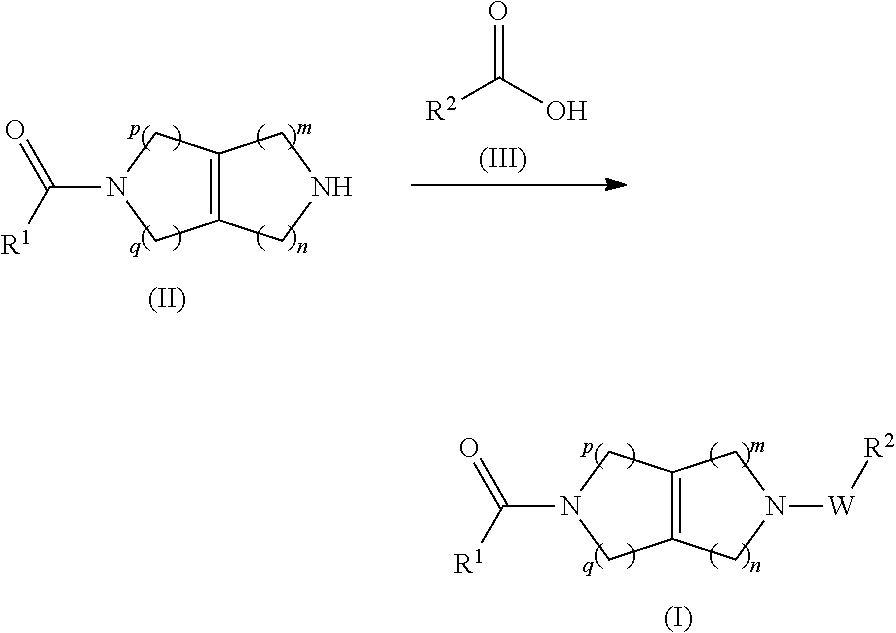
C00014
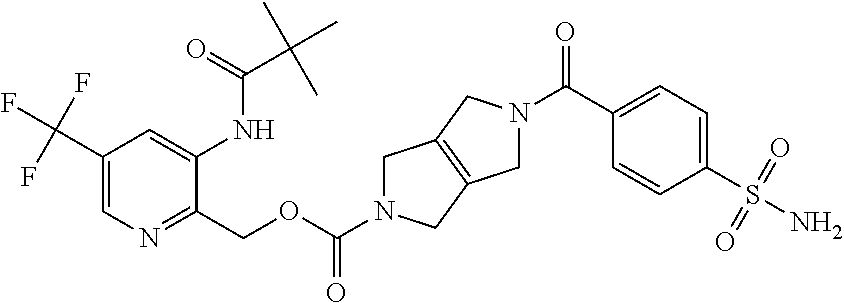
C00015
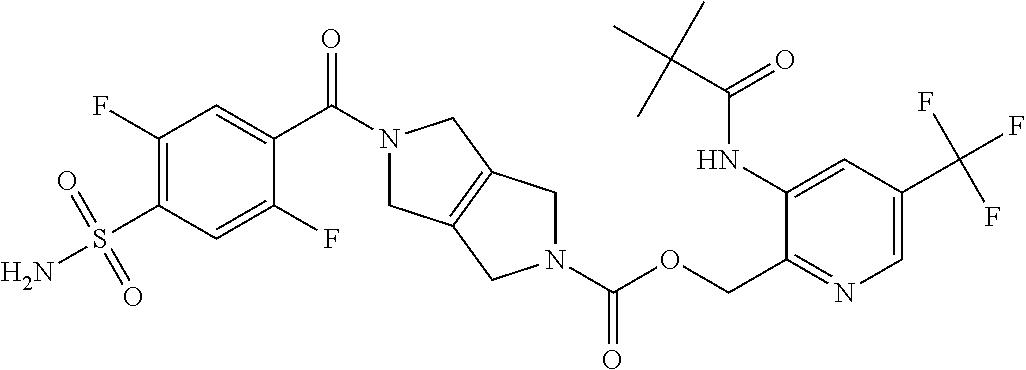
C00016
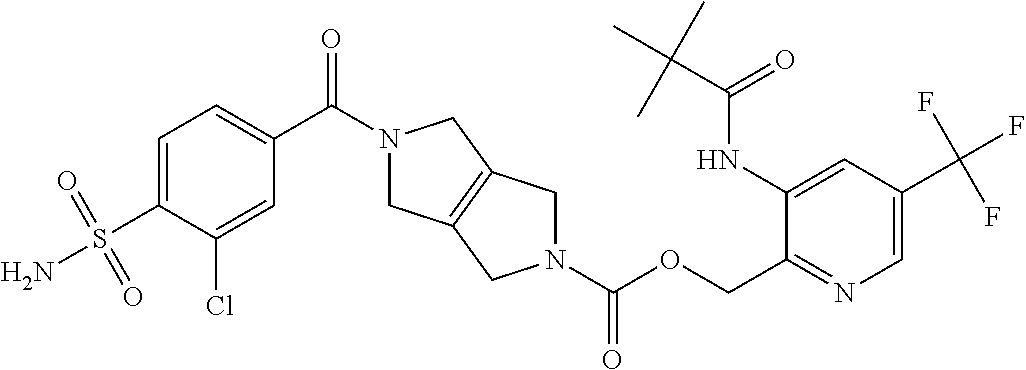
C00017

C00018
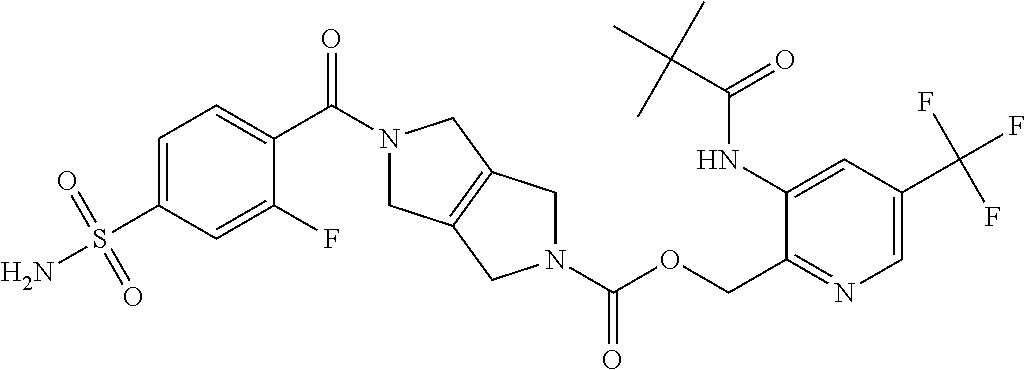
C00019
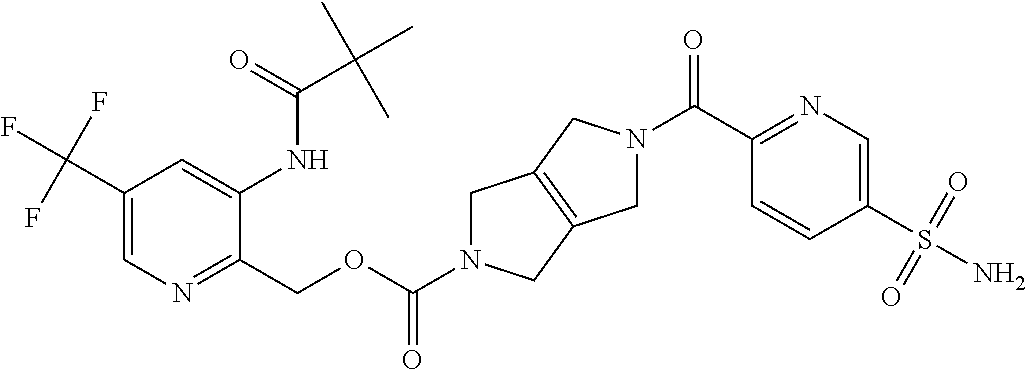
C00020

C00021
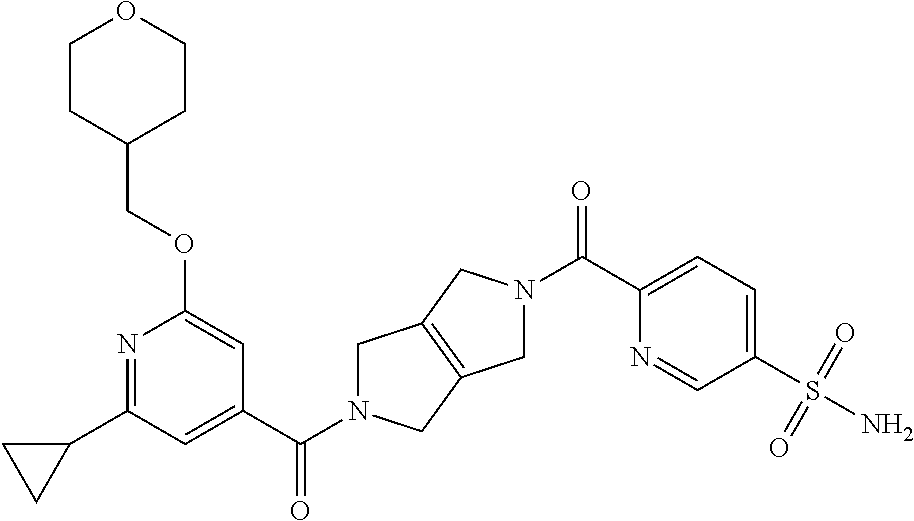
C00022
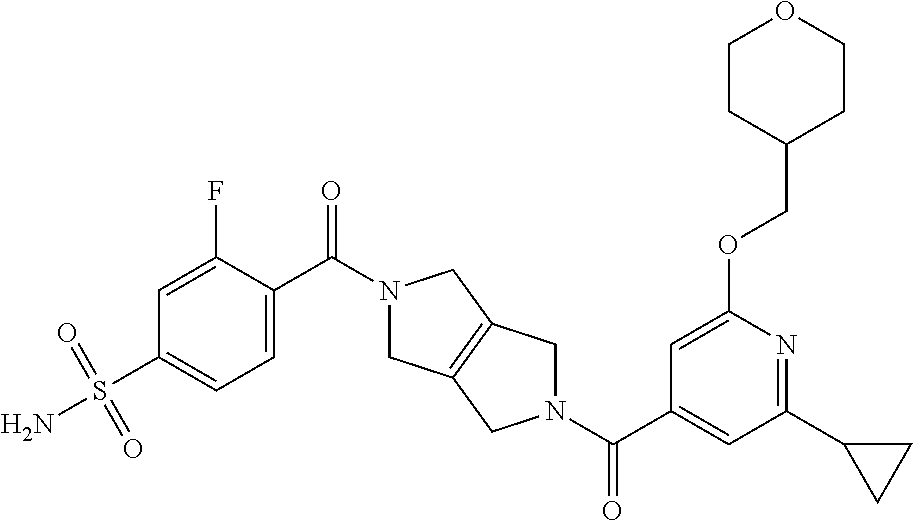
C00023
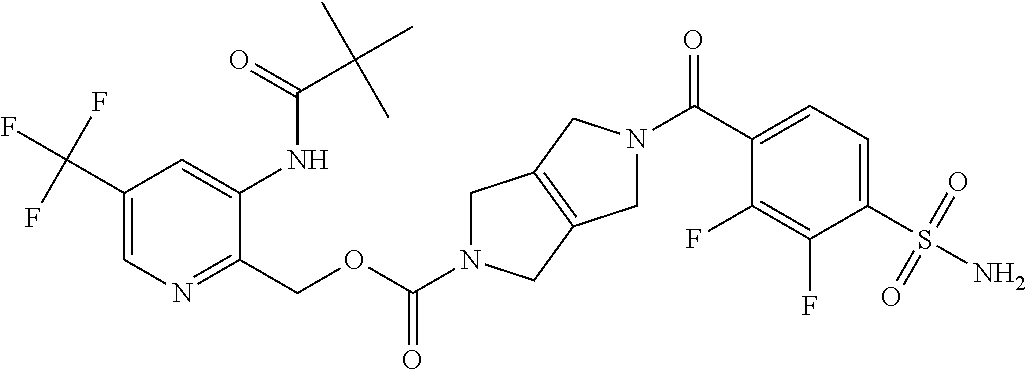
C00024
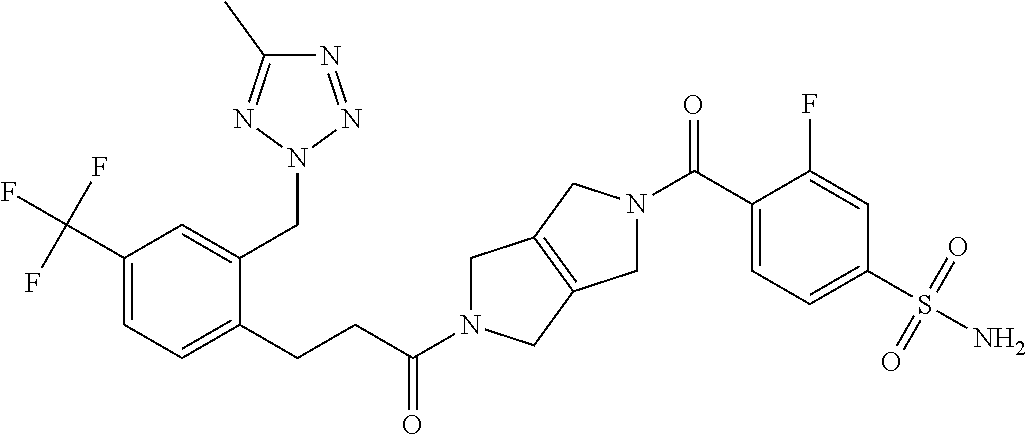
C00025
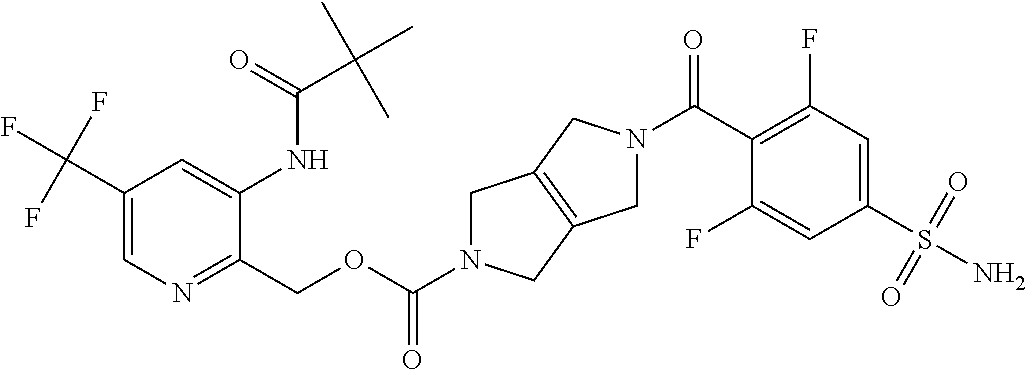
C00026

C00027
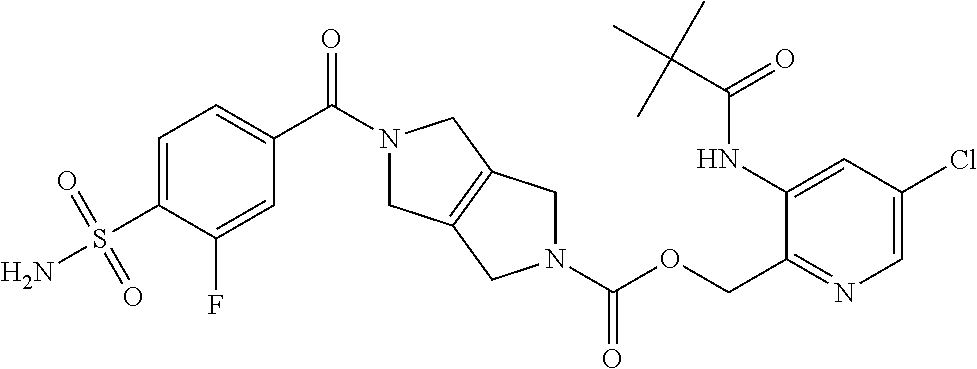
C00028
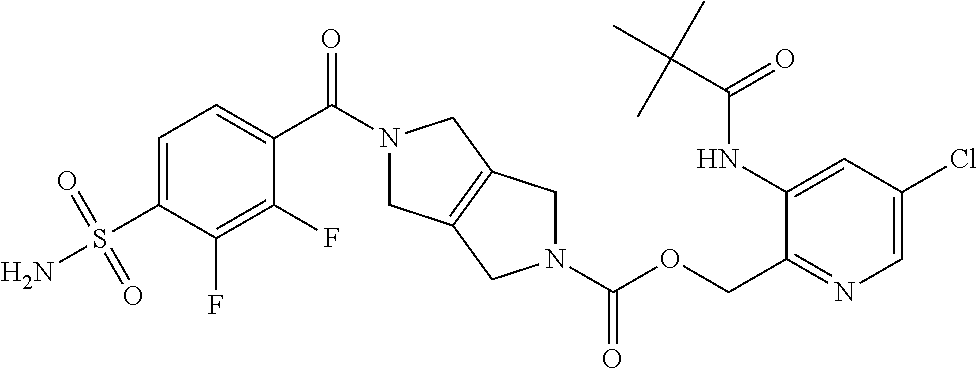
C00029
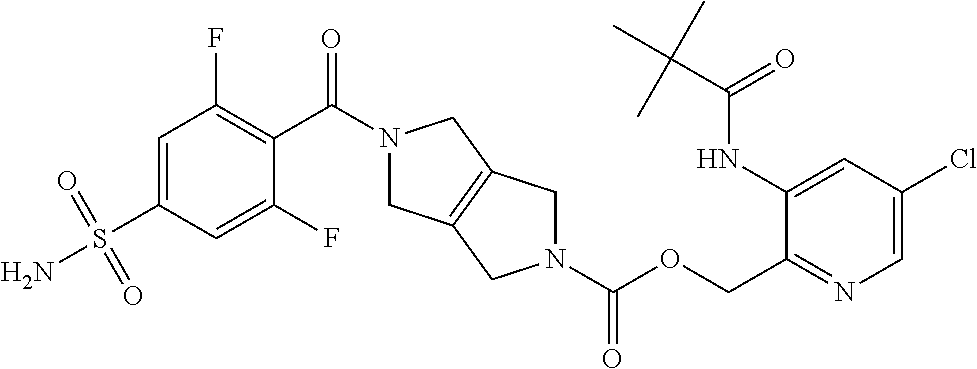
C00030
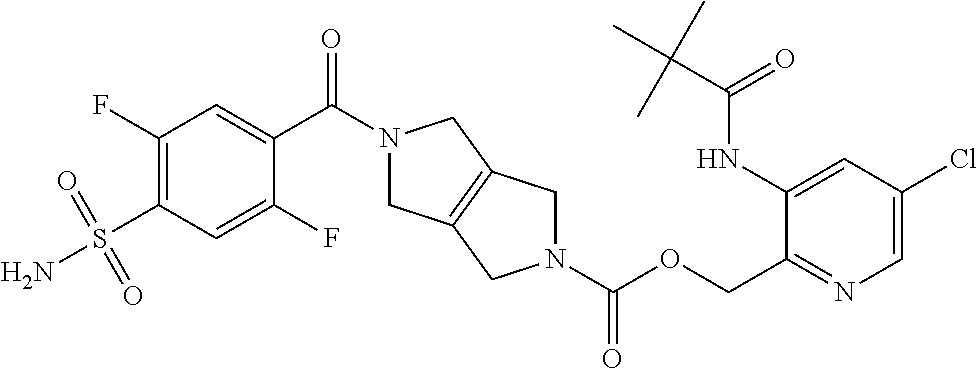
C00031
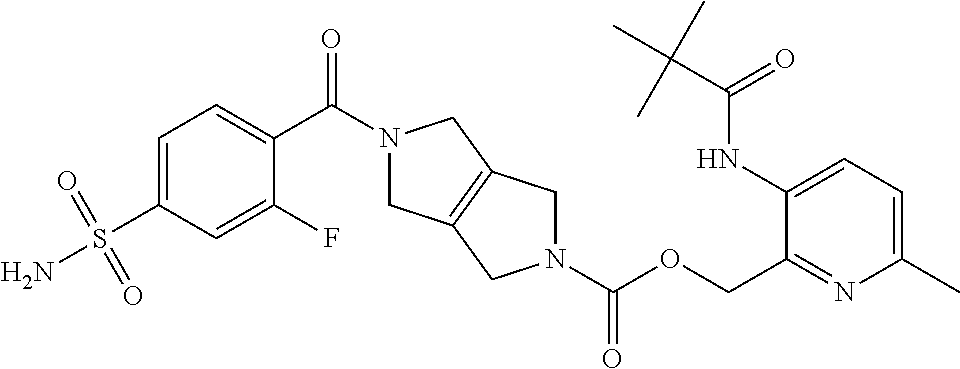
C00032

C00033

C00034
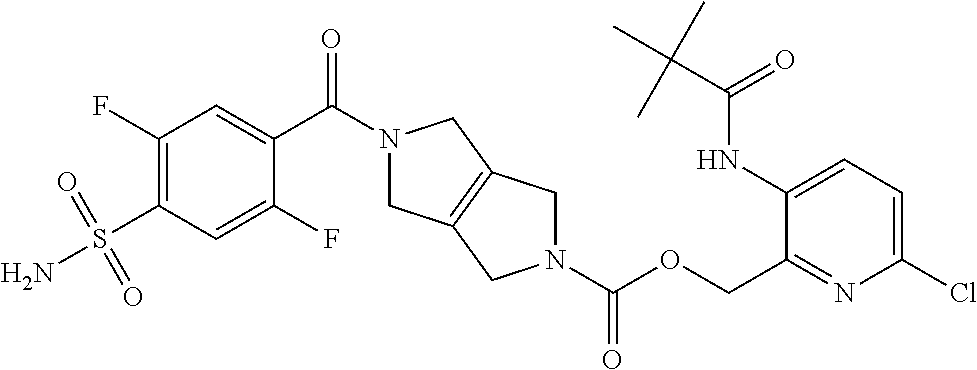
C00035
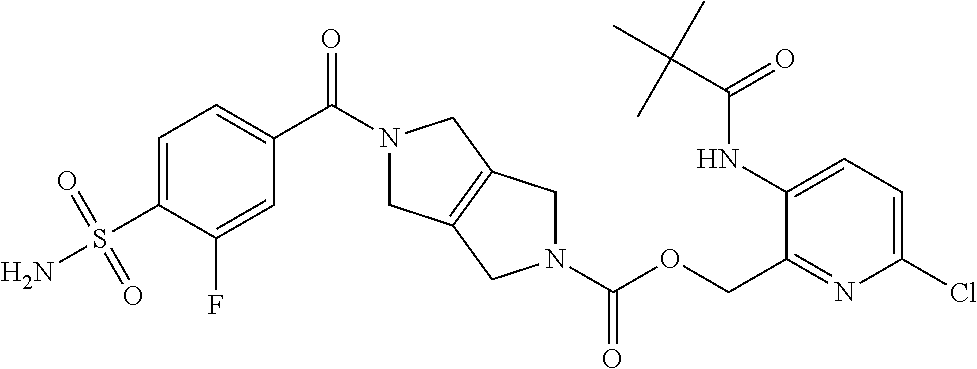
C00036
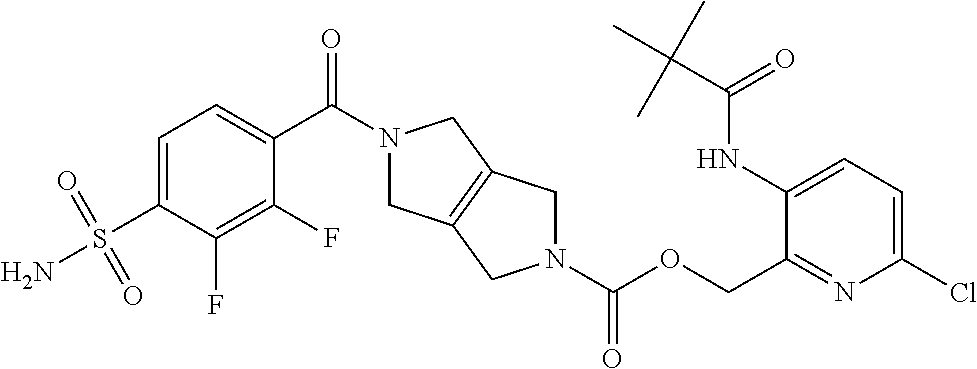
C00037

C00038
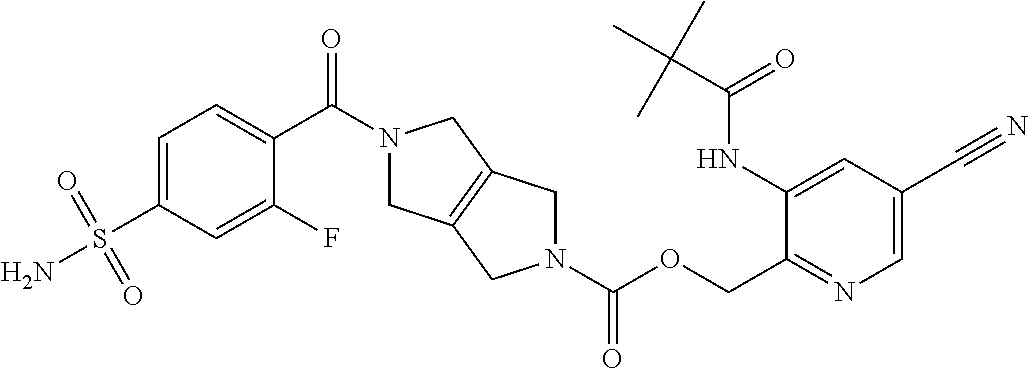
C00039
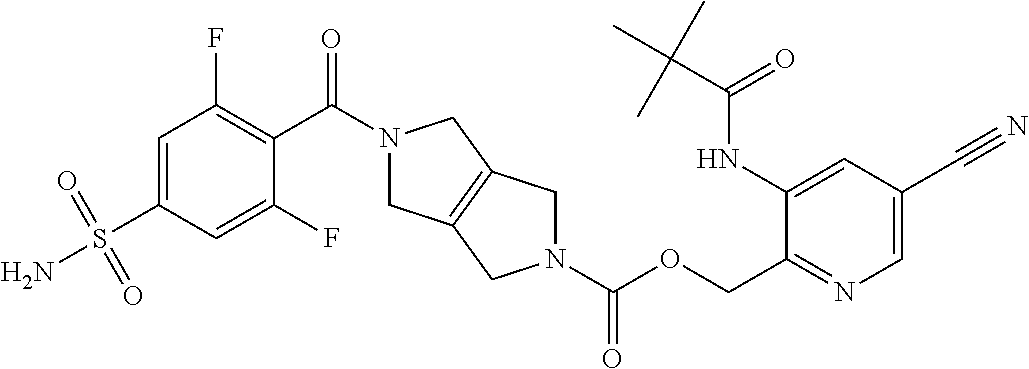
C00040
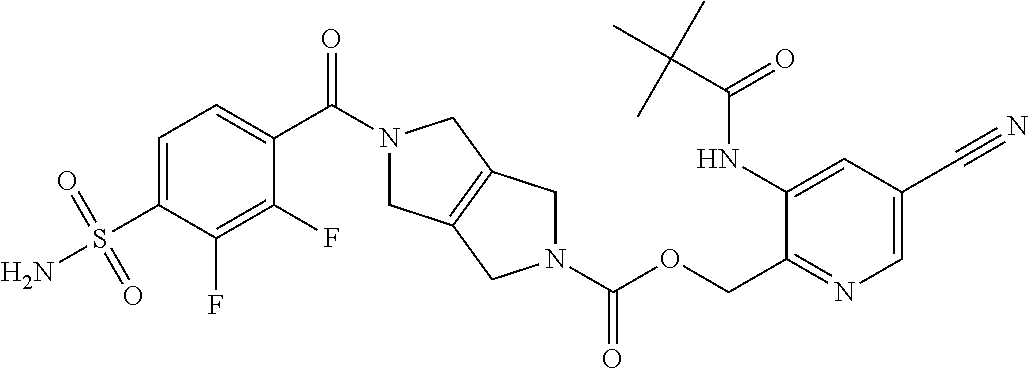
C00041
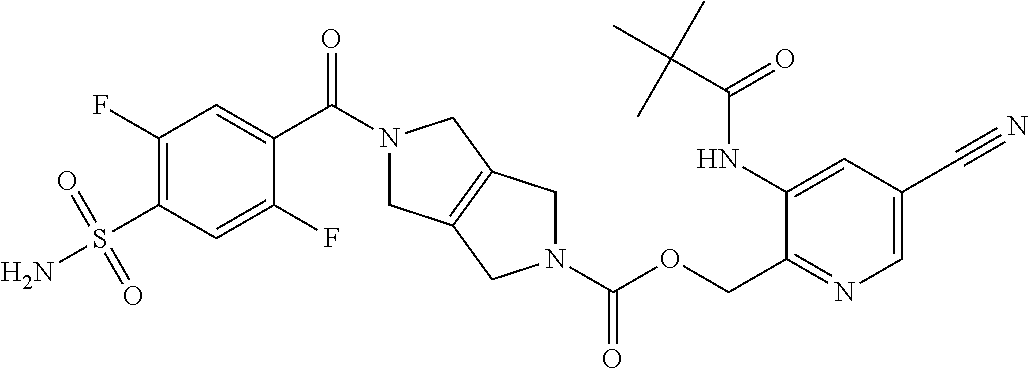
C00042
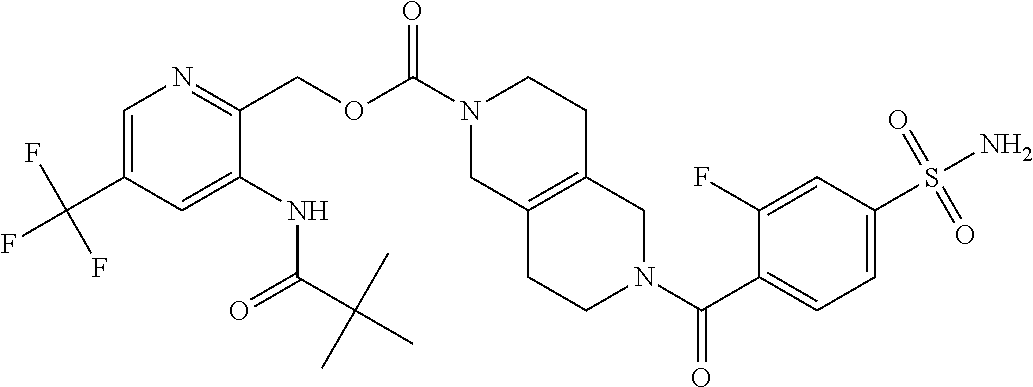
C00043
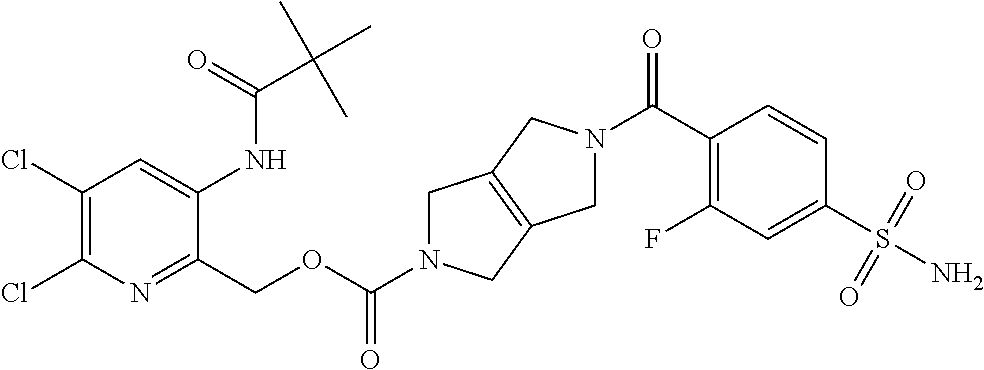
C00044
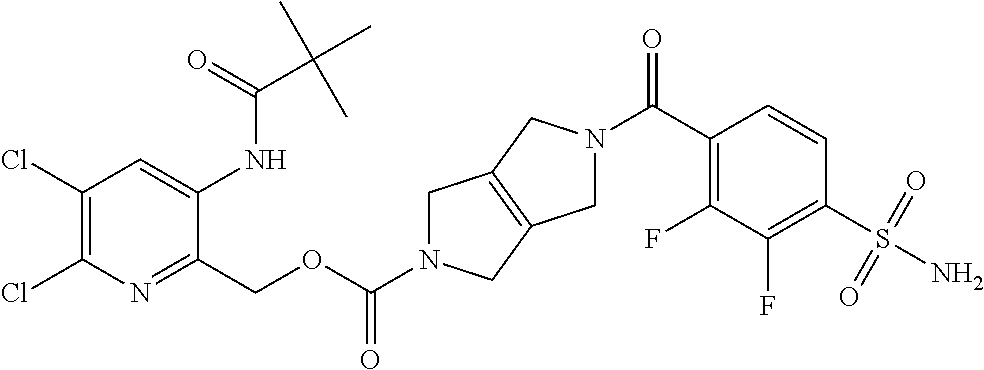
C00045
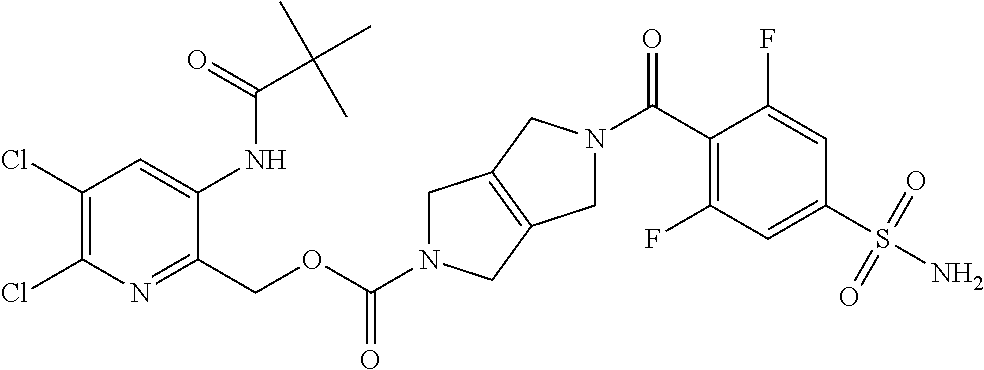
C00046
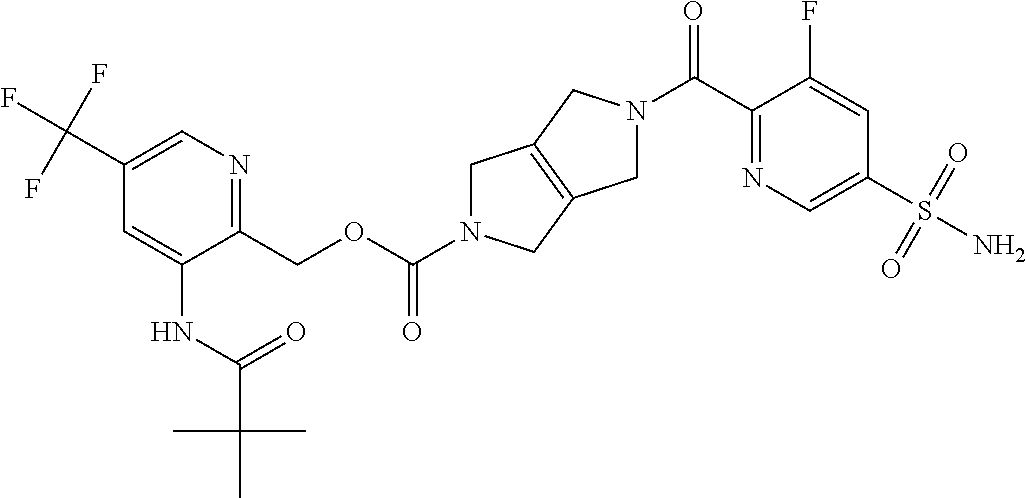
C00047
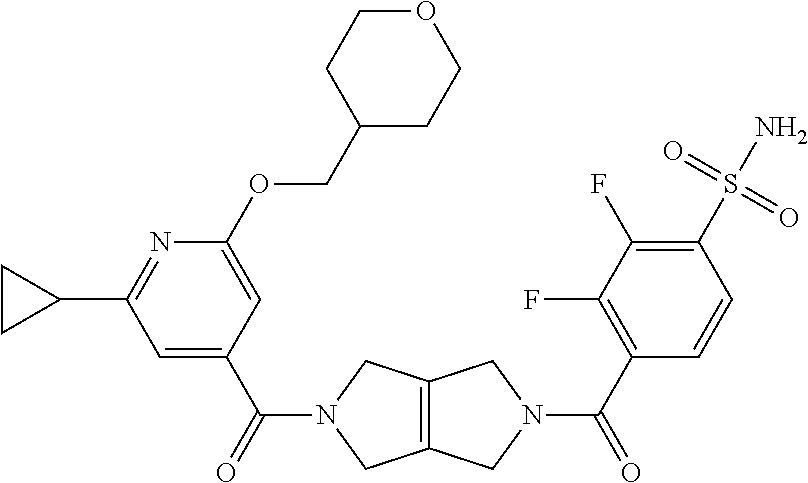
C00048
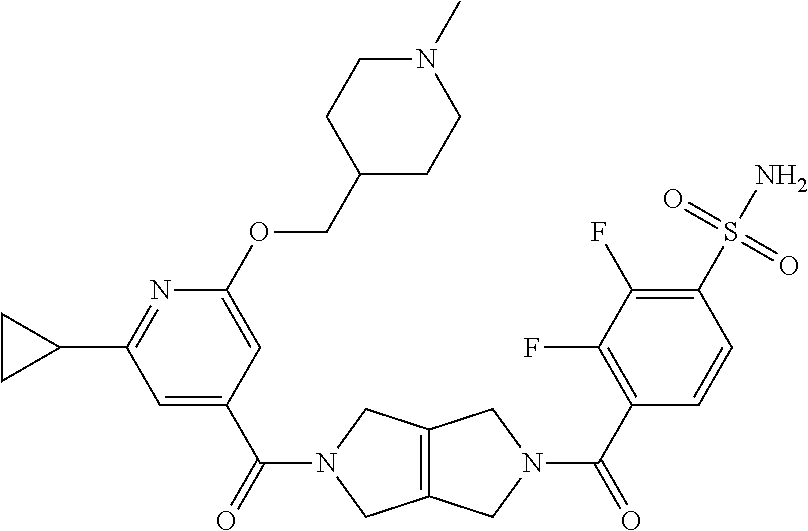
C00049
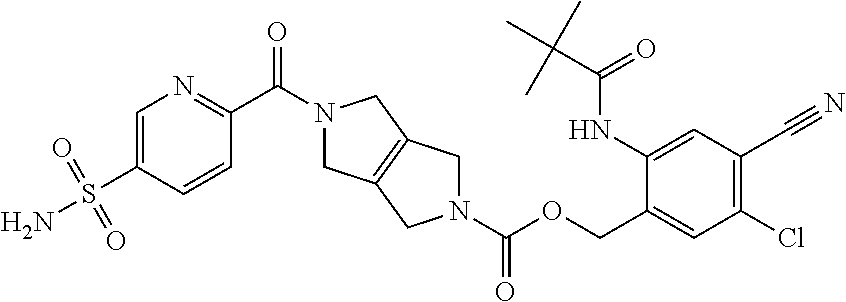
C00050
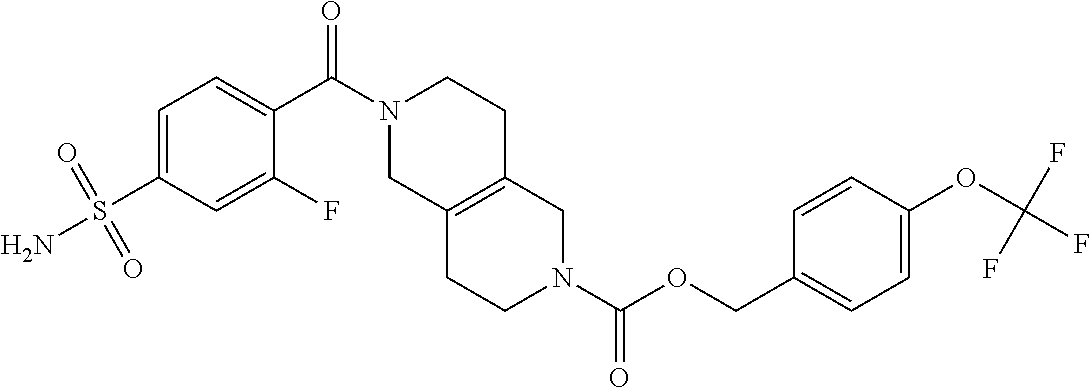
C00051

C00052

C00053

C00054

C00055

C00056

C00057

C00058

C00059

C00060
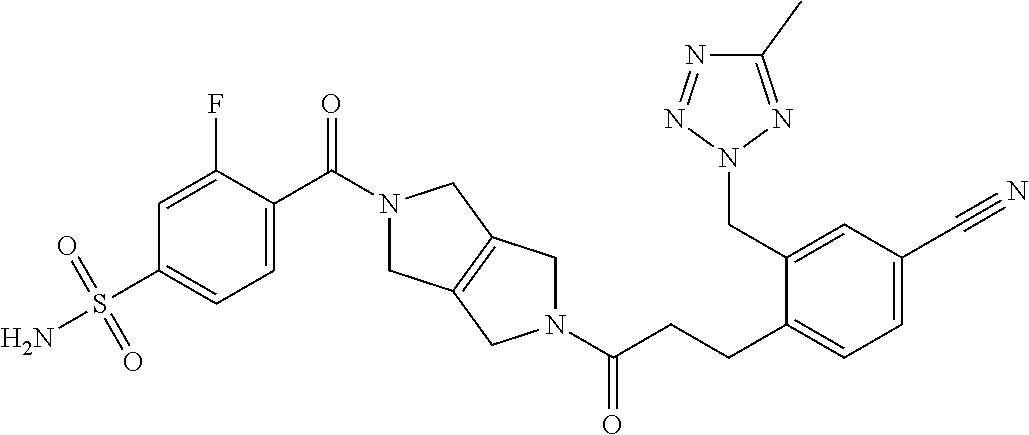
C00061
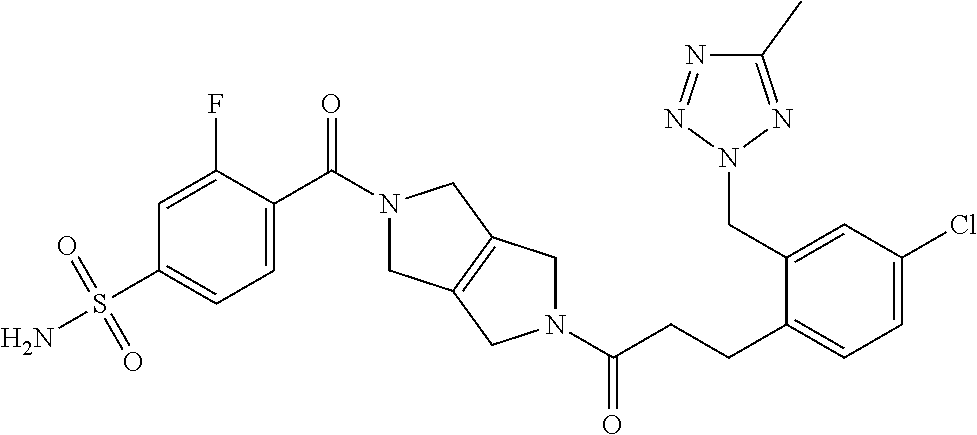
C00062
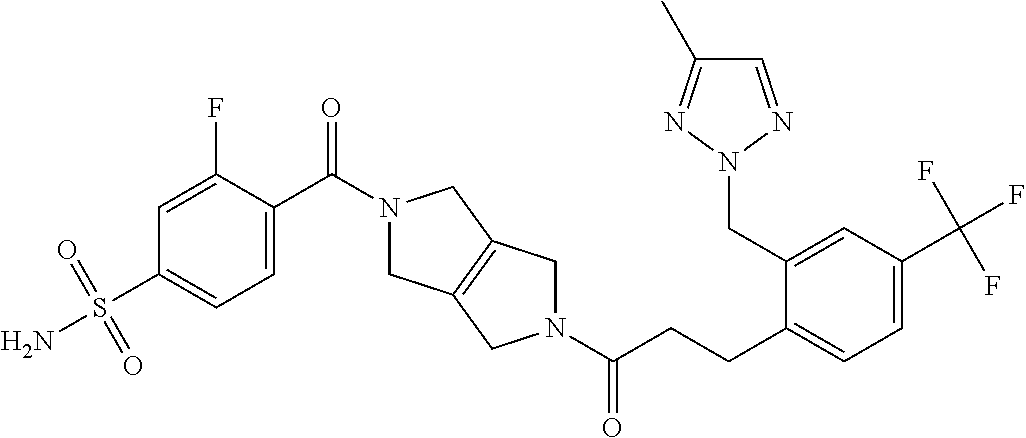
C00063
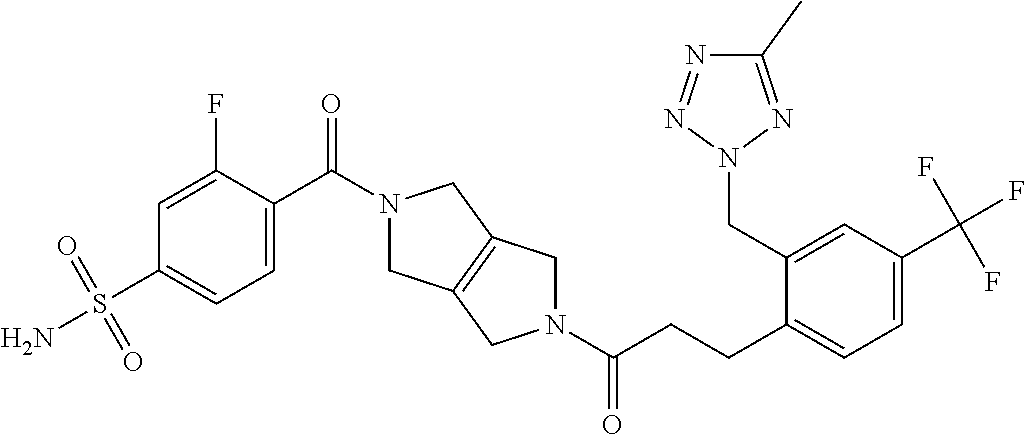
C00064
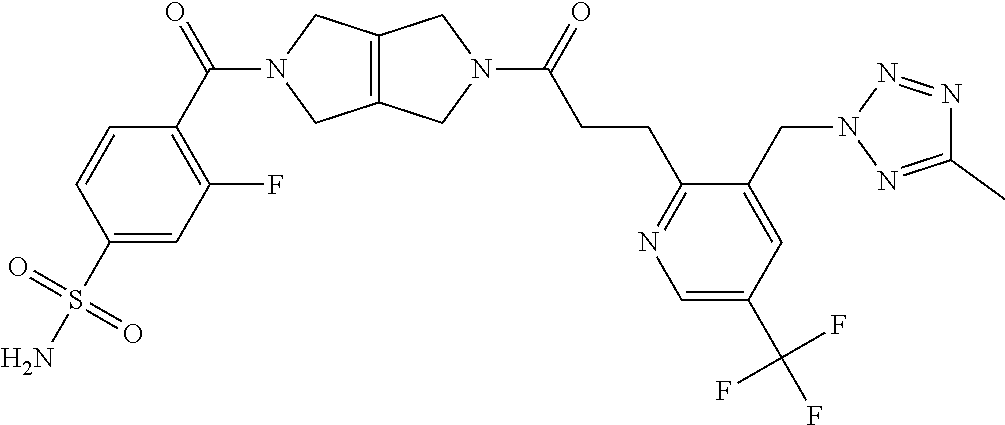
C00065
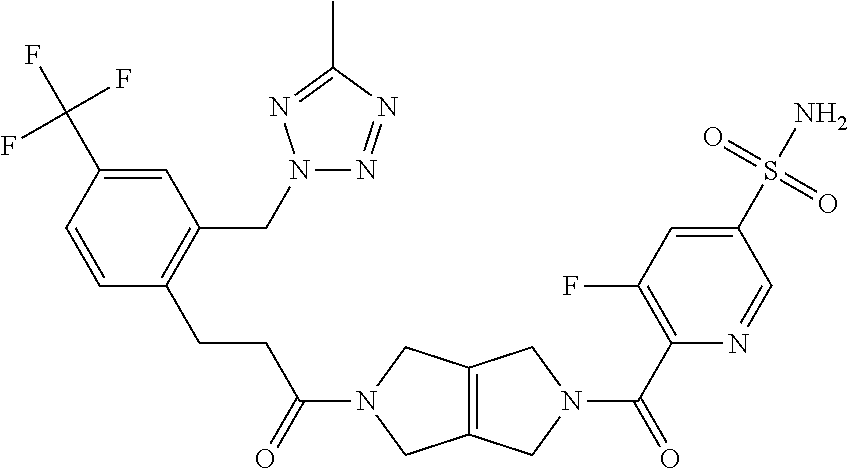
C00066
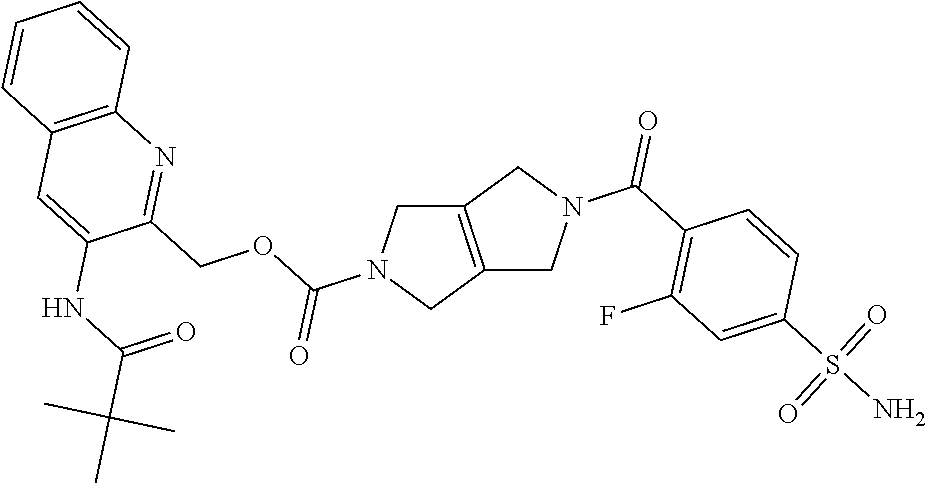
C00067
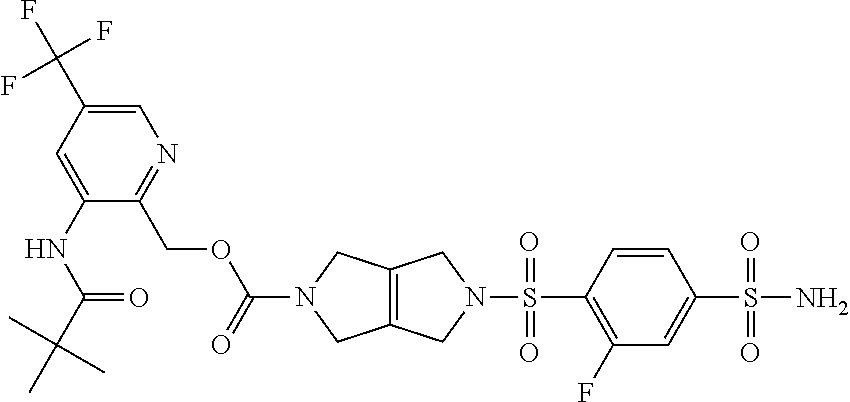
C00068
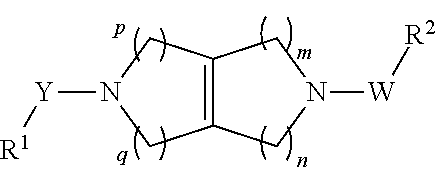
C00069
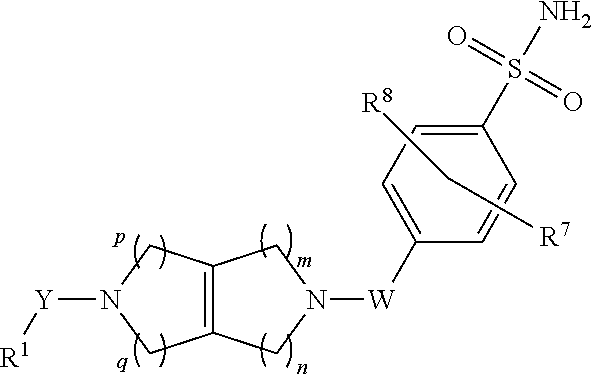
C00070
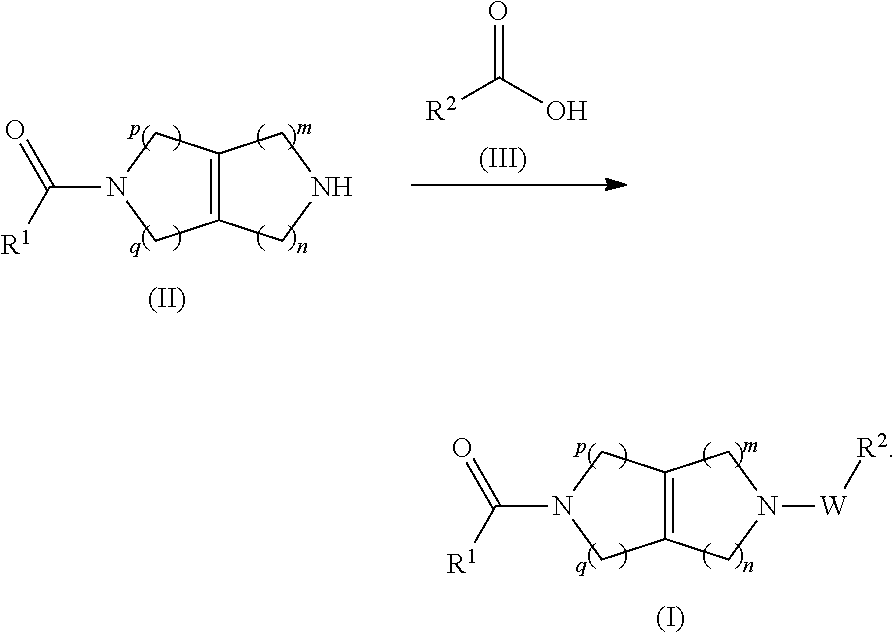
C00071
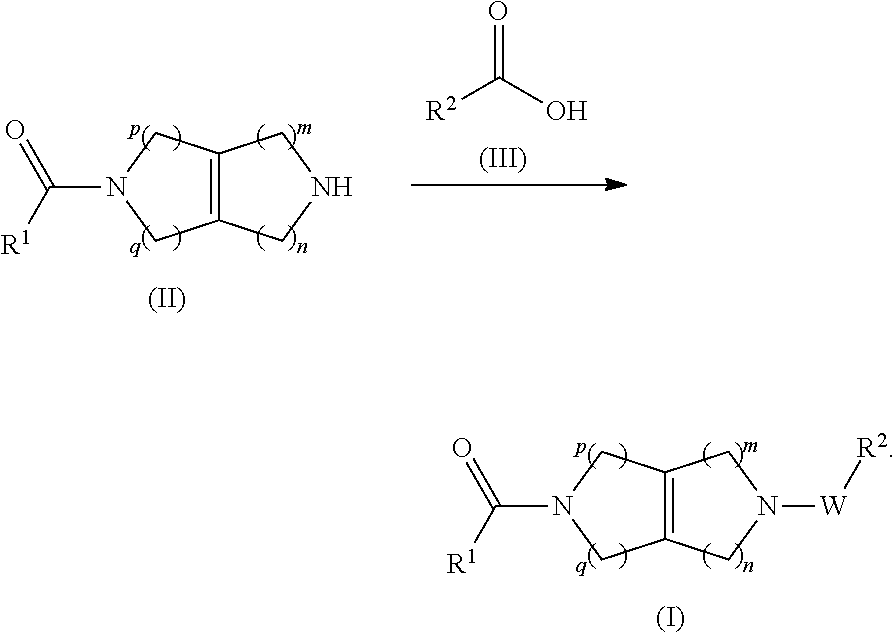
XML
uspto.report is an independent third-party trademark research tool that is not affiliated, endorsed, or sponsored by the United States Patent and Trademark Office (USPTO) or any other governmental organization. The information provided by uspto.report is based on publicly available data at the time of writing and is intended for informational purposes only.
While we strive to provide accurate and up-to-date information, we do not guarantee the accuracy, completeness, reliability, or suitability of the information displayed on this site. The use of this site is at your own risk. Any reliance you place on such information is therefore strictly at your own risk.
All official trademark data, including owner information, should be verified by visiting the official USPTO website at www.uspto.gov. This site is not intended to replace professional legal advice and should not be used as a substitute for consulting with a legal professional who is knowledgeable about trademark law.